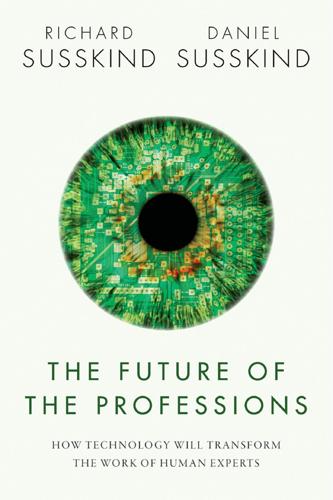
The Future of the Professions: How Technology Will Transform the Work of Human Experts
by
Richard Susskind
and
Daniel Susskind
Published 24 Aug 2015
Bloom, ‘The 2 Sigma Problem: The Search for Methods of Group Instruction as Effective as One-to-One Tutoring’, Educational Researcher, 13: 6 (1984), 4–16. 66 <https://www.edmodo.com> (accessed 7 March 2015). 67 <http://www.edudemic.com>, <http://www.edutopia.org>, <http://www.sharemylesson.com>. 68 <http://moodle.com>, <http://www.brightspace.com> (accessed 7 March 2015). 69 ‘Khan Academy’, EdSurge <https://www.edsurge.com/khan-academy> (accessed 7 March 2015). 70 ‘Research on the Use of Khan Academy in Schools’, SRI Education, Mar. 2014 <http://www.sri.com/sites/default/files/publications/2014-03-07_implementation_briefing.pdf> (accessed 7 March 2015). 71 In 2012 there were 3,912,540 pupils in state-funded primary schools, 3,225,540 in state-funded secondary schools, and private schools ~7 percent of total.
…
The Economist, ‘Computer says “Try This”’, Economist, 4 Oct. 2014. The Economist, ‘The Dozy Watchdogs’, Economist, 13 Dec. 2014. The Economist, ‘Electronic Arm Twisting’, Economist, 17 May 2014. The Economist, ‘The Late Edition’, Economist, 26 Apr. 2014. The Economist, ‘Workers on Tap’, Economist, 3 Jan. 2015. EdSurge, ‘Khan Academy’, EdSurge <https://www.edsurge.com/khan-academy> (accessed 7 March 2015). Ellis, Charles, What It Takes (Hoboken, NJ: John Wiley & Sons, 2013). Ericsson, ‘More than 50 Billion Connected Devices’, Ericsson White Paper, Feb. 2011 at <http://www.akos-rs.si/files/Telekomunikacije/Digitalna_agenda/Internetni_protokol_Ipv6/More-than-50-billion-connected-devices.pdf> (accessed 23 March 2015).
…
There are media platforms, like Edudemic, Edutopia, and ShareMyLesson, where people share material (blogs, videos, and lesson plans) on what works in the classroom.67 There are ‘learning management systems’ and ‘virtual learning environments’, like Moodle, with 65 million users, and BrightSpace, with over 15 million users, that help teachers organize their teaching, distribute materials, and interact with students outside the classroom.68 Other online platforms provide educational content. Khan Academy, for example, is a free online collection of 5,500 instructional videos (watched 450 million times), providing 100,000 practice problems (solved 2 billion times).69 With 10 million unique visitors each month in 2014—a seventyfold increase since 201070—it has a higher effective attendance than the total primary- and secondary-school population of England.71 TED, a collection of online talks (eighteen minutes, more or less, in length) on a wide range of topics by thoughtful people, reached its one-billionth view in late 2012, while TED-Ed is a platform that helps build lessons that are based on their videos.72 YouTube EDU, a part of the video-hosting platform that is allocated for education content alone, hosts over 700,000 ‘high quality’ educational videos—a small fraction of the less-polished, but by no means less-useful, videos elsewhere on the site.73 These online platforms are deployed in different ways.

Robots Will Steal Your Job, But That's OK: How to Survive the Economic Collapse and Be Happy
by
Pistono, Federico
Published 14 Oct 2012
I immediately started to follow the chemistry lessons from Khan Academy, and I felt the excitement of discovery and understanding every time I watched one of those videos. It all seems quite strange, but it makes a whole lot of sense if you contextualise it. The exponential growth of information technology and the advent of the free software movement has lead to a groundbreaking shift in our mental paradigm. Information is ever more accessible, reliable, and most of all free to all. GNU, Linux, Creative Commons, Wikipedia, OpenCourseWare, and now the Khan academy. It is a logical consequence of the exponential growth of technology and culture.
…
They might be thinking “I wish I spent more time with my kids”, “I wish I told my husband I loved him more”, “I wish I confessed to my high school crush that I liked her”, or “If only I had travelled more, I would have seen the world”. I was really moved by the story of a woman, who was a terminal cancer patient. She had two months to live, but her life’s dream was to learn calculus. Then she discovered Khan Academy, and realised that she finally had that opportunity. And so she did – she spent the last two months of her life learning calculus. And she was happy.172 Another notorious slacker and good for nothing stated that: “The goal of the future is full unemployment, so we can play. That’s why we have to destroy the present politico-economic system.”
…
No question was answered incorrectly. My placement test holder was so impressed by the breadth of my knowledge of math that he said I should be in Linear algebra. Mr. Khan, I can say without any doubt that you have changed my life and the lives of everyone in my family”. A few days after that, Sal quit his job to work on the ’Khan Academy’ full-time (http://khanacademy.org). The conscience and the realisation that you are helping other people, building an “emphatic civilisation”,181 based on the sharing of scientific knowledge, for the betterment of humankind; that is something worth waking up for in the morning. “With so little effort on my own part, I can empower an unlimited amount of people for all time.
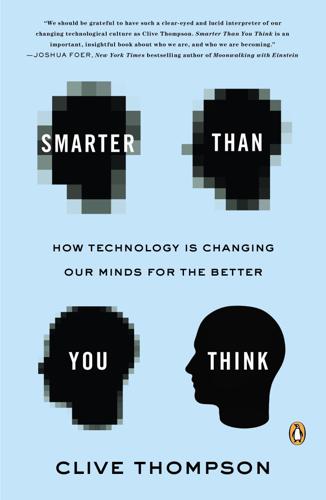
Smarter Than You Think: How Technology Is Changing Our Minds for the Better
by
Clive Thompson
Published 11 Sep 2013
It’s to teach kids by using the peculiar abilities of networked devices—like public thinking, new literacies, and the powerful insights that come from not just using, but programming, the machine. • • • Consider what’s happening beneath the hood of the Khan Academy. In one sense, Khan’s videos are the most prominent part of the system. But they’re also the least innovative one. They’re still pretty much just traditional lessons and lectures, albeit ones that can be consulted and reconsulted worldwide, at any time. What’s new is how teachers use the Khan Academy to track progress. The system offers a dashboard that displays nuanced information about each student: which videos they’ve looked at, which problems they’ve tackled, how many times they had to work at a problem before they solved it.
…
a better metaphor for collaborative thinking: Sherlock Holmes: The quotes here are from the following works by Arthur Conan Doyle: the novel The Sign of the Four (Allan Classics, 2010), Kindle edition; and the story “The Adventure of Wisteria Lodge,” Project Gutenberg, last updated December 2011, accessed March 24, 2013, www.gutenberg.org/files/2343/2343-h/2343-h.htm. Chapter 7: Digital School When I visit Matthew Carpenter’s math class: Some of this reporting appeared originally in an article I wrote about the Khan Academy, “How Khan Academy Is Changing the Rules of Education,” Wired, August 2011, accessed March 24, 2013, www.wired.com/magazine/2011/07/ff_khan/. the “Two Sigma” phenomenon: Benjamin S. Bloom, “The 2 Sigma Problem: The Search for Methods of Group Instruction as Effective as One-to-One Tutoring,” Educational Researcher 13, no. 6 (June–July 1984), 4–16; and Benjamin S.
…
Matthew is a student at Santa Rita Elementary, a public school in Los Altos, California, where his sun-drenched classroom is festooned with a giant paper X-wing fighter, student paintings of trees, and racks of kids’ books. Normally grade five math is simpler fare—basic fractions, decimals, and percentages. You don’t reach inverse trig until high school. But Matthew’s class isn’t typical. For the last year, they’ve been using the Khan Academy, a free online site filled with thousands of instructional videos that cover subjects in math, science, and economics. The videos are lo-fi, even crude: about five to fifteen minutes long, they consist of a voice-over by Khan describing a mathematical concept or explaining how to solve a problem while hand-scribbled formulas appear on-screen.
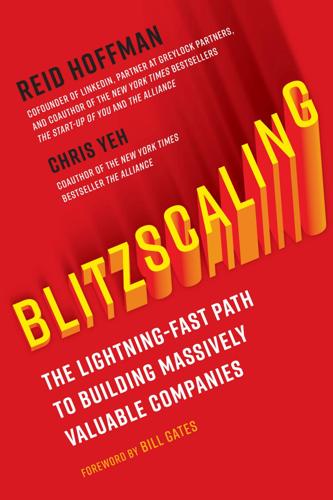
Blitzscaling: The Lightning-Fast Path to Building Massively Valuable Companies
by
Reid Hoffman
and
Chris Yeh
Published 14 Apr 2018
But it is still worth considering whether or not it is possible to tap into network effects, since doing so can have such a major impact. For example, Sal Khan’s Khan Academy began when Sal started tutoring one of his young cousins over the Internet. When other cousins started signing up, he decided to post his lectures on YouTube so that anyone in the world could use them. The critical decision to leverage the YouTube platform meant that Khan Academy had both an enormous market (anyone who could access YouTube, which is to say, most of humanity) and a powerful distribution platform (anyone searching for educational content on YouTube was likely to run across Khan Academy). As the Khan Academy gained a massive user base, it began to benefit from both indirect and standard-based network effects.
…
As the Khan Academy gained a massive user base, it began to benefit from both indirect and standard-based network effects. Educators began incorporating Khan Academy videos into their official curriculum, and creating lesson plans that they shared with other educators. Today, the Khan Academy is used by 40 million students and 2 million educators every month (the entire United States has only 50.7 million K–12 students), and volunteers have translated its videos into thirty-six languages. LACK OF PRODUCT/MARKET FIT In the case of for-profit businesses, the remorseless logic of the market economy quickly eliminates companies that fail to achieve product/market fit.
…
Founded September 1998, Palo Alto, CA GROUPON Groupon.com Groupon is an e-commerce marketplace that connects its subscribers with offers from local merchants. Its primary focus areas are activities, travel, goods, and services. Founded January 2008, Chicago, IL KHAN ACADEMY Khanacademy.org Khan Academy’s mission is to provide a free, world-class education for anyone, anywhere. It does this by offering online practice exercises and instructional videos. Founded October 2006, Mountain View, CA LINKEDIN LinkedIn.com LinkedIn is the world’s largest professional network and seeks to connect the world’s professionals to make them more productive and successful.
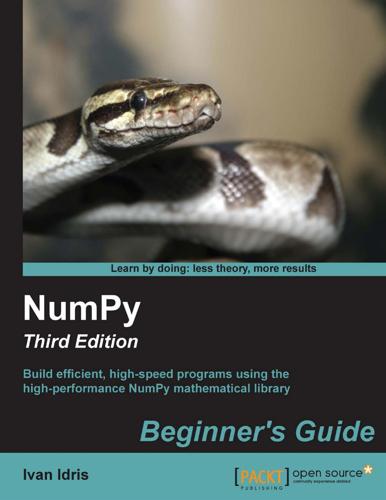
Numpy Beginner's Guide - Third Edition
by
Ivan Idris
Published 23 Jun 2015
Python Learn Python the Hard Way (for Python 2) at http://learnpythonthehardway. org/ Dive Into Python 3 (for Python 3) at http://www.diveintopython3.net/ Beginner's Guide to Python at https://wiki.python.org/moin/ BeginnersGuide Non-programmers Tutorial for Python 3 can be found at http://en.wikibooks. org/wiki/Non-Programmer%27s_Tutorial_for_Python_3 A Byte of Python is available at http://www.swaroopch.com/notes/python/ An Introducton to Interactve Programming in Python can be found at https://www.coursera.org/course/interactivepython1 Learn Python online by Code Mentor at https://www.codementor.io/learn-python-online Learn Python by visualizing code executon at http://pythontutor.com/ Find Codecademy Python exercises at http://www.codecademy.com/tracks/ python Google's Python class is available at https://developers.google.com/edu/ python/ A Python style guide from Google can be found at https://google-styleguide.googlecode.com/svn/trunk/pyguide.html The IPython website can be found at http://ipython.org/ matplotlib a Python plotng library at http://matplotlib.org/ NumPy and SciPy documentaton can be accessed at http://docs.scipy.org/ doc/ NumPy and SciPy mailing lists can be found at http://www.scipy.org/ scipylib/mailing-lists.html Mathematics and statistics Linear algebra tutorials are available from Khan Academy at https://www. khanacademy.org/math/linear-algebra Pre-calculus tutorials from Khan Academy are available at https://www. khanacademy.org/math/precalculus Probability and statstcs tutorials from Khan Academy can be found at https://www.khanacademy.org/math/probability Trigonometry tutorials from Khan Academy can be found at https://www.khanacademy.org/math/trigonometry Access Alcumus by Art of Problem Solving ( AoPS ) at http://www. artofproblemsolving.com/alcumus Find the Pre-Calculus Coursera course at https://www.coursera.org/course/ precalculus The Coursera course on linear algebra, which uses Python, can be found at https://www.coursera.org/course/matrix An introducton to probability by Harvard University can be accessed at https://itunes.apple.com/us/course/statistics-110-probability/ id502492375 The statstcs wikibook is available at https://en.wikibooks.org/wiki/ Statistics The Electronic Statstcs Textbook.
…
Linear algebra is a branch of mathematics dealing among others with matrices . Matrices are the two-dimensional equivalent of vectors and contain numbers in a rectangular or square grid. Transposing a matrix entails flipping the matrix in such a manner that the matrix rows become the matrix columns and vice versa. Khan Academy has a course on linear algebra, which includes transposing matrices at https://www.khanacademy.org/ math/linear-algebra/matrix_transformations/matrix_ transpose/v/linear-algebra-transpose-of-a-matrix . We can do this too using the following code: In: b.transpose() Out: array([[ 0, 4, 8, 12, 16, 20], [ 1, 5, 9, 13, 17, 21], [ 2, 6, 10, 14, 18, 22], [ 3, 7, 11, 15, 19, 23]]) 5.
…
Convoluton is a mathematcal operaton on two functons defned as the integral of the product of the two functons afer one of the functons is reversed and shifed. ( f ∗ g ) ( t ) = ∫ −∞ f ( τ ) g ( t − τ ) d τ = ∫ −∞ f ( t − τ ) g ( τ ) d τ Convoluton is described on Wikipedia at https://en.wikipedia.org/ wiki/Convolution . Khan Academy also has a tutorial on convoluton at https://www.khanacademy.org/math/differential- equations/laplace-transform/convolution-integral/v/ introduction-to-the-convolution . Use the following steps to compute the SMA: 1. Use the ones() functon to create an array of size N and elements initalized to 1 , and then, divide the array by N to give us the weights: N = 5 weights = np.ones(N) / N print("Weights", weights) For N = 5 , this gives us the following output: Weights [ 0.2 0.2 0.2 0.2 0.2] 2.
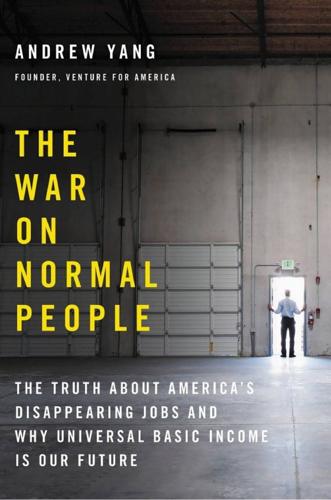
The War on Normal People: The Truth About America's Disappearing Jobs and Why Universal Basic Income Is Our Future
by
Andrew Yang
Published 2 Apr 2018
Some believe that we can inexpensively educate large numbers of people using the latest technology. A couple years ago I spoke at an awards dinner with Sal Khan, the founder of the Khan Academy. If you don’t know Khan Academy, you should—they make education videos that are used by millions around the world on everything from basic arithmetic to great literature to quantum physics. Sal was a hedge fund analyst turned explainer of all things. Bill Gates’s kids used to watch the videos to supplement their schooling, leading Bill to become one of the many million-dollar donors to Khan Academy. Their mission is to educate the world. Sal gave an inspiring talk that night. The high point went something like this: “Back in the Middle Ages, if you asked the literate monks and scholars how many of the farmers and peasants walking around would be capable of learning to read, they’d scoff and say, ‘Read?
…
A majority of American households have had broadband Internet at home for more than 10 years now, and 85 percent today have either a broadband home connection or a smartphone. We have years of information about how unlimited access to materials like Khan Academy has influenced learners around the country. Unfortunately, SAT scores have declined significantly in the last 10 years. High school graduation rates have edged upward. College readiness is generally down. We don’t seem to be getting any more enlightened despite ubiquitous online lessons. It’s impossible not to love Khan Academy. I fully intend to strap my kids in as soon as they’re ready for it, and I fantasize about coming home and having them say things like, “I learned thermodynamics today!”
…
I fully intend to strap my kids in as soon as they’re ready for it, and I fantasize about coming home and having them say things like, “I learned thermodynamics today!” But if one gives a 12-year-old access to high-speed Internet, they are infinitely more likely to chat with their friends, play video games, or watch the latest Honest Trailers video than delve into a deep, thought-provoking discussion of War and Peace. Among the biggest gainers from Khan Academy are people abroad and learners like Bill Gates’s kids, who already had some things going for them. The clearest impact of technology on teen development to date has been starkly negative. According to psychologist Jean Twenge’s 2017 book, iGen, smartphone use has caused a spike in depression and anxiety among people born from 1995 on, and a diminution in sociability and independence.
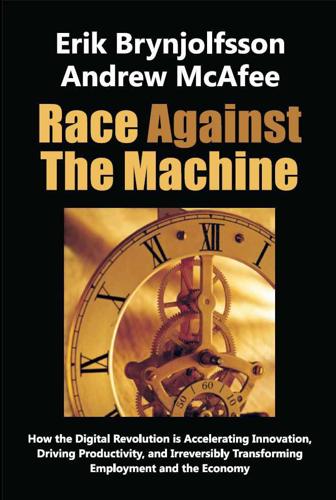
Race Against the Machine: How the Digital Revolution Is Accelerating Innovation, Driving Productivity, and Irreversibly Transforming Employment and the Economy
by
Erik Brynjolfsson
Published 23 Jan 2012
Students at companies around the world use a combination of information and communication technologies to interact with professors centrally located at MIT and with instructors local to each group of students. At the K-12 level, Khan Academy offers over 2,600 short educational videos and 144 self-assessment modules for free on the web. Students can learn at their own pace, pausing and replaying videos as needed, earning “badges” to demonstrate mastery of various skills and knowledge, and charting their own curricula through the ever-growing collection of modules. Students have logged over 70 million visits to Khan Academy so far. A growing infrastructure makes it easy for parents or teachers to track student progress. An increasingly common approach uses the Khan Academy’s tools to flip the traditional classroom model on its head, letting students watch the video lectures at home at their own pace and then having them do the “home work” exercises in class while a teacher circulates among them, helping each student individually with specific difficulties rather than providing a one-size-fits-all lecture to all the students simultaneously.
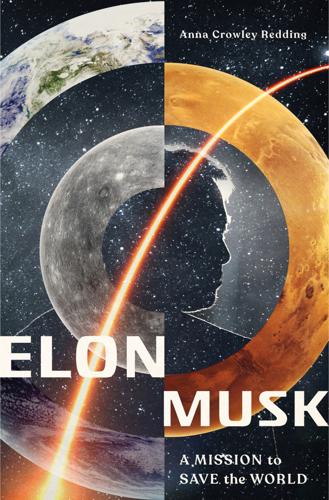
Elon Musk: A Mission to Save the World
by
Anna Crowley Redding
Published 1 Jul 2019
Interview by Neil deGrasse Tyson. “The Future of Humanity with Elon Musk.” StarTalk Radio. 22 March 2015. Audio, 50:25. www.startalkradio.net/show/the-future-of-humanity-with-elon-musk/. _____. Interview by Sal Khan. “Elon Musk—CEO of Tesla Motors and SpaceX.” Khan Academy, 17 April 2013. Video, 48:41. www.khanacademy.org/talks-and-interviews/khan-academy-living-room-chats/v/elon-musk. _____. Interview by Sarah Lacy. “PandoMonthly: Fireside Chat with Elon Musk.” 17 July 2012. YouTube video, 1:03:10, youtu.be/uegOUmgKB4E. _____. “More background: I arrived in North America at 17 w $2000, a backpack & a suitcase full of books.
…
The company underwent explosive growth and shaping, adding a modern twist on an ancient custom: electronic person-to-person payment. Before then, when someone wrote you a check, and you deposited it into the bank, it took days to process and show up in your account. This was different. This was instant. “After the first month or so of the website being active,” Elon explained to Sal Khan during a talk at Khan Academy, “we had a hundred thousand customers.”57 TAKE AWAY THE ARMOR: Starting a company? Elon says the quicker you can provide people with something they can see, the better. Whether a sketch, a mock-up, or a demonstration, find a way for people to envision your project or product. “In the beginning there will be few people who believe in you or in what you’re doing,” he explained.
…
As we have already talked about, Elon was no stranger to the epic Bay Area–LA commute. And all of those trips back and forth sparked daydreams about this new sci-fi level of transportation. All the way back in 2013 he mused about the whole thing while visiting the team behind the online learning nonprofit Khan Academy. In an interview with Sal Khan, Elon said, “I was reading about the California high-speed rail, and it was quite depressing. Because California taxpayers are going to be on the hook to build the most expensive high-speed rail per mile in the world—and the slowest,” he said. “Those are not the superlatives you want.”159 So he began doing what Elon does: breaking down transportation to its fundamental purpose and parts.

The Second Machine Age: Work, Progress, and Prosperity in a Time of Brilliant Technologies
by
Erik Brynjolfsson
and
Andrew McAfee
Published 20 Jan 2014
The best educational resources available online allow users to create self-organized and self-paced learning environments—ones that allow them to spend as much time as they need with the material, and also to take tests that tell them if they mastered it. One of the best known of these resources is Khan Academy, which was started by then–hedge fund manager Salman Khan as a series of online doodles and YouTube video lectures intended to teach math to his young relatives. Their immense popularity led him to quit his job in 2009 and devote himself to creating online educational materials, freely available to all. By May 2013, Khan Academy included more than 4,100 videos, most no more than a few minutes long, on subjects ranging from arithmetic to calculus to physics to art history.
…
Ernest T. Pascarella and Patrick T. Terenzini, How College Affects Students: A Third Decade of Research, 1st ed. (San Francisco: Jossey-Bass, 2005), 602. 15. Michael Noer, “One Man, One Computer, 10 Million Students: How Khan Academy Is Reinventing Education,” Forbes, November 19, 2012, http://www.forbes.com/sites/michaelnoer/2012/11/02/one-man-one-computer-10-million-students-how-khan-academy-is-reinventing-education/. 16. William J. Bennet, “Is Sebastian Thrun’s Udacity the Future of Higher Education?” CNN, July 5, 2012, http://www.cnn.com/2012/07/05/opinion/bennett-udacity-education/index.html. 17.
…
By May 2013, Khan Academy included more than 4,100 videos, most no more than a few minutes long, on subjects ranging from arithmetic to calculus to physics to art history. These videos had been viewed more than 250 million times, and the Academy’s students had tackled more than one billion automatically generated problems.15 Khan Academy was originally aimed at primary-school children, but similar tools and techniques have been also applied to higher education, where they’re known as massive online open courses, or MOOCs. One of the most interesting experiments in this area came in 2011 when Sebastian Thrun, a top artificial intelligence researcher (and one of the main people behind Google’s driverless car), announced with a single email that he would be teaching his graduate-level AI course not only to students at Stanford but also as a MOOC available for free over the Internet.

Frugal Innovation: How to Do Better With Less
by
Jaideep Prabhu Navi Radjou
Published 15 Feb 2015
Based on case studies of Kingfisher, Levi Strauss, method, Tarkett and Unilever, the chapter provides insights into how R&D and manufacturing managers can develop self-sustaining solutions that help both businesses and the environment. Shape customer behaviour. Drawing on research in psychology and behavioural economics, as well as on the pioneering work of organisations such as Barclays, IKEA, Khan Academy, Nest and Progressive, Chapter 5 shows how companies can influence consumers into behaving differently (for example, driving less or more safely) and feeling richer while consuming less. It also shows how marketing managers can improve brand loyalty and market share by tailoring frugal products and services more closely to the way customers actually think, feel and behave – and by properly positioning and communicating the aspirational value of these frugal solutions.
…
Aspiring entrepreneurs, whom Forrester Research refers to as digital disrupters, are now using this nearly free, online R&D platform to innovate faster, better and cheaper, and create affordable products and services that leverage social-media and mobile technologies.10 In doing so, these start-ups are disrupting the lucrative business models of well-established bricks-and-mortar companies. For instance, the Khan Academy, founded by Sal Khan, offers free maths and science courseware as bite-sized videos via YouTube, creating panic among academic publishers who charge a fortune for textbooks. Or take Plastyc, a start-up that claims to put the “power of a bank in your cell phone” by providing affordable 24-hour access to FDIC-insured virtual bank accounts that can be accessed from any internet-enabled computer or mobile device.
…
Increasingly, online platforms have co-opted scripting and editing techniques from the news and entertainment businesses (such as the BBC in the UK) to raise content quality and user participation. Such platforms also use ideas from the gaming world. Salman Khan, an online education pioneer, believes in the power of games to motivate children to learn. His Khan Academy has experimented with game mechanics in its online courses. Students can accumulate points for their work, are awarded badges and get on leader boards. The academy’s experiments show that the wording of badges or the use of points can have a dramatic effect on learning. In some cases, tens of thousands of students can go in a particular direction depending on the nature of the badges.
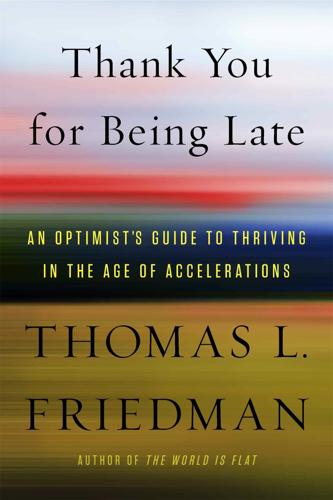
Thank You for Being Late: An Optimist's Guide to Thriving in the Age of Accelerations
by
Thomas L. Friedman
Published 22 Nov 2016
I can focus precisely where the artificial intelligence of the College Board platform points out that I need help. So far more than 1.4 million kids have signed up to have free SAT prep from Khan Academy online. This represents four times the total population of students who use commercial test prep classes in a year. In fact, more kids now are using Khan Academy than paying for test preparation at every level of income. That tells you what a valuable intelligent assistant it has become. And 450,000 have linked their College Board results on the PSATs with Khan Academy to get tailored tutoring on the questions they missed, which they can then practice on their own time wherever they are—including through their cell phones.
…
Think of the flow of friends through Facebook, the flow of renters through Airbnb, the flow of opinions through Twitter, the flow of e-commerce through Amazon, Tencent, and Alibaba, the flow of crowdfunding through Kickstarter, Indiegogo, and GoFundMe, the flow of ideas and instant messages through WhatsApp and WeChat, the flow of peer-to-peer payments and credit through PayPal and Venmo, the flow of pictures through Instagram, the flow of education through Khan Academy, the flow of college courses through MOOCs, the flow of design tools through Autodesk, the flow of music through Apple, Pandora, and Spotify, the flow of video through Netflix, the flow of news through NYTimes.com or BuzzFeed.com, the flow of cloud-based tools through Salesforce, the flow of searches for knowledge through Google, and the flow of raw video through Periscope and Facebook.
…
She sent back the following list: • Tell you what to wear & provide the weather forecast for interview day • Where to go with Google street map view of job location & public transit route to job location • Send interview reminders about the time and how long you should prepare to get there • Have you dial-in to a practice interview line, record your answers, then hear “best practices” answers • Provide tips from previously hired job seekers or managers at each step • Provide more transparency of what and why at each step of a job search so that the benefits are clear • Show other previously hired job seekers at the job location • Share interesting facts about the location and the manager with job seekers • Provide more info about the hiring manager whom they will meet • Ask job seekers to share interesting facts about themselves with the hiring managers • Auto schedule a Lyft or Uber to take them to their interview • Remind you to send a thank-you note to the interviewer Concluded Ringwald: “Everyone needs someone who says, ‘I believe in you’ … There is not just a skills gap—there’s a confidence gap.” And you can’t sustainably fill one without the other. You Need Work on Fractions Maybe the most popular intelligent assistant in the world today is Khan Academy, which was started in 2006 by the educator Salman “Sal” Khan and offers free, short YouTube video lessons in English on subjects ranging from math, art, computer programming, economics, physics, chemistry, biology, and medicine to finance, history, and more. Anyone anywhere can go there to learn or brush up on any subject.

The Purpose Economy: How Your Desire for Impact, Personal Growth and Community Is Changing the World
by
Aaron Hurst
Published 31 Aug 2013
But their most meaningful accomplishment may be their success in lobbying 19 states (as of this writing) to pass legislation that legally recognizes a new, socially responsible corporate structure—the Benefit Corporation. 5. Khan Academy: Open Education The Khan Academy emerged as MOOCs (massive open online courses) and began making headlines. Like other MOOCs, Khan Academy used technology—the Internet and its myriad media and sharing channels—to disrupt the education space. However, in offering online courses for free, Khan was able to tackle the lack of access to good, quality, public education in a way that garnered incredible support very early on at little cost.
…
However, in offering online courses for free, Khan was able to tackle the lack of access to good, quality, public education in a way that garnered incredible support very early on at little cost. Leveraging this early success, Khan gained the financial backing and support needed to pioneer and launch the first “elementary” MOOC of its kind. Today, Khan Academy reaches about 10 million students per month and has delivered over 300 million lessons. 6. Fair Trade USA: Fair Trade Consumer Products The Fair Trade movement is rooted in a growing sentiment that the food consumers and suppliers purchase should be produced in conditions that are safe, with wages that are fair, using practices that are sustainable to the environment and the communities they impact.

The Content Trap: A Strategist's Guide to Digital Change
by
Bharat Anand
Published 17 Oct 2016
“more than ten times” Ibid. 750 million times Sally Peck, Matthew Pendergast, and Kat Hayes, “A Day in the Life of Khan Academy: The School with 15 Million Students,” Telegraph , April 23, 2015. from Khan online David A. Kaplan, “Innovation in Education: Bill Gates’ Favorite Teacher,” Fortune ; Peck, Pendergast, and Hayes, “A Day in the Life.” Google invested, too Clive Thompson, “How Khan Academy Is Changing the Rules of Education,” Wired , July 15, 2011. Time magazine’s 100 Most Influential People Bill Gates, “The World’s 100 Most Influential People: 2012—Salman Khan,” Time , April 18, 2012. a $3 million trial “Khan Academy Resources for Maximizing Mathematics Achievement: A Postsecondary Mathematics Efficacy Study,” Institute of Education Sciences, last modified 2014, accessed March 10, 2016, http://ies.ed.gov/funding/grantsearch/details.asp?
…
Education is also “non-excludable”—access is increasingly hard to restrict, given mechanisms for free, instantaneous worldwide distribution (and other times, piracy). So in 2009, just a few years after he had joined the world of high finance, Khan quit his day job to start Khan Academy, a nonprofit dedicated to “ a free world-class education for anyone, anywhere.” Its resources were “almost comically meager,” he later said. The academy “owned a PC, $20 worth of screen capture software, and an $80 pen tablet. The faculty, engineering team, support staff, and administration consisted of exactly one person: me.” By early 2016 Khan Academy had roughly 10,000 videos on its site, on topics ranging from calculus to finance, biology, and government, and was attracting more than six million learners a month—“ more than ten times the number of people who have gone to Harvard since its inception in 1636,” Khan said.
…
A college sophomore writes a computer program that lets his classmates choose the “hotter” person in a given pairing of students—eventually leading to Facebook. A young MBA graduate working at a hedge fund creates short educational videos to help his cousin with sixth-grade math and posts them on YouTube—resulting in Khan Academy and eventually precipitating the biggest changes in education in three hundred years. Each of these events—isolated, idiosyncratic, modest at the outset—had a colossal impact. And the pattern can be seen elsewhere. A market trader allegedly slapped by a policewoman sets himself on fire, resulting in the Arab Spring.

The New Digital Age: Transforming Nations, Businesses, and Our Lives
by
Eric Schmidt
and
Jared Cohen
Published 22 Apr 2013
Consider the twenty-four-year-old Kenyan inventor Anthony Mutua: “Shoe Technology to Charge Cell Phones,” Daily Nation, May 2012, http://www.nation.co.ke/News/Shoe+technology+to+charge+cell+phones++/-/1056/1401998/-/view/printVersion/-/sur34lz/-/index.html. placed the chip in the sole of a tennis shoe: Ibid. Mutua’s chip is now set to go into mass production: Ibid. Khan Academy: In the spirit of full disclosure: Eric Schmidt is on the board of Khan Academy. replacing lectures with videos watched at home: Clive Thompson, “How Khan Academy Is Changing the Rules of Education,” Wired Magazine, August 2011, posted online July 15, 2011, http://www.wired.com/magazine/2011/07/ff_khan/. In 2012, the MIT Media Lab tested: Nicholas Negroponte, “EmTech Preview: Another Way to Think About Learning,” Technology Review, September 13, 2012, http://www.technologyreview.com/view/429206/emtech-preview-another-way-to-think-about/.
…
Kids will still go to physical schools, to socialize and be guided by teachers, but as much, if not more, learning will take place employing carefully designed educational tools in the spirit of today’s Khan Academy, a nonprofit organization that produces thousands of short videos (the majority in science and math) and shares them online for free. With hundreds of millions of views on the Khan Academy’s YouTube channel already, educators in the United States are increasingly adopting its materials and integrating the approach of its founder, Salman Khan—modular learning tailored to a student’s needs.
…
Hormuud https encryption protocols Huawei human rights, 1.1, 3.1 humiliation Hussein, Saddam, itr.1, 7.1, 7.2, 7.3, 7.4 Hutus Identity Cards Act identity theft identity-theft protection, 2.1, 2.2 IEDs (improvised explosive devices), 5.1, 6.1 IEEE Spectrum, 107n income inequality, 1.1, 4.1 India, 2.1, 2.2, 3.1 individuals, transfer of power to Indonesia infiltration information blackouts of exchange of free movement of see also specific information technologies Information and Communications Technologies Authority Information Awareness Office information-technology (IT) security experts infrastructure, 2.1, 7.1 Innocence of Muslims (video), 4.1, 6.1 innovation Institute of Electrical and Electronics Engineers, n insurance, for online reputation integrated clothing machine intellectual property, 2.1, 3.1 intelligence intelligent pills internally displaced persons (IDP), 7.1, 7.2 International Criminal Court, 6.1, 7.1, 7.2 internationalized domain names (IDN) International Telecommunications Union Internet, 2.1, 6.1, 6.2, 6.3, 6.4 Balkanization of as becoming cheaper and changing understanding of life impact of as network of networks Internet asylum seekers Internet Corporation for Assigned Names and Numbers (ICANN) internet protocol (IP) activity logs internet protocol (IP) address, 3.1, 3.2, 6.1 Internet service provider (ISP), 3.1, 3.2, 6.1, 7.1 Iran, 2.1, 2.2, 3.1, 3.2, 3.3, 3.4, 3.5, 3.6, 4.1, 4.2, 5.1, 6.1, 6.2, 6.3, 7.1 cyber warfare on “halal Internet” in Iraq, itr.1, 3.1, 4.1, 6.1, 6.2 reconstruction of, 7.1, 7.2 Ireland iRobot Islam Israel, 3.1, 3.2, 3.3, 3.4, 6.1, 6.2, 6.3 iTunes Japan, 3.1, 6.1n, 246 earthquake in Jasmine Revolution JavaOne Conference Jebali, Hamadi Jibril, Mahmoud Jim’ale, Ali Ahmed Nur Join the Club: How Peer Pressure Can Transform the World (Rosenberg), 4.1 Joint Tactical Networking Center Joint Tactical Radio System Julius Caesar justice system Kabul Kagame, Paul, 7.1, 7.2 Kansas State University Karzai, Hamid Kashgari, Hamza Kaspersky Lab Kenya, 3.1, 7.1, 7.2 Khan Academy Khartoum Khodorkovsky, Mikhail Khomeini, Ayatollah Kickstarter kidnapping, 2.1, 5.1 virtual Kinect Kissinger, Henry, 4.1, 4.2 Kiva, 7.1, 7.2, 7.3 Klein, Naomi, n Kony 2012, 7.1 Koran Koryolink “kosher Internet,” 187 Kosovo Kurds, 3.1, 3.2, 4.1 Kurzweil, Ray Kyrgyzstan Laârayedh, Ali Lagos language translation, 1.1, 4.1, 4.2 laptops Latin America, 3.1, 4.1, 4.2, 5.1 law enforcement Law of Accelerating Returns Lebanon, 5.1, 7.1, 7.2 Lee Hsien Loong legal options, coping strategies for privacy and security concerns legal prosecution Lenin, Vladimir Levitt, Steven D.

Co-Intelligence: Living and Working With AI
by
Ethan Mollick
Published 2 Apr 2024
They can also use insights from the AI tutors to identify areas where students might need extra support or guidance, enabling teachers to provide more personalized and effective instruction. And with AI assistance, they can design better active learning opportunities in class to make sure that learning sticks. This isn’t a far-future pipe dream. Tools from Khan Academy (and some of our own experiments) suggest that existing AI, when properly prepared, is already an excellent tutor. Khan Academy’s Khanmigo goes beyond the passive videos and quizzes that made Khan Academy famous by including AI tutoring. Students can ask the tutor to explain concepts, of course, but it is also capable of analyzing patterns of performance to guess at why a student is struggling with a topic, providing much deeper help.

Most Likely to Succeed: Preparing Our Kids for the Innovation Era
by
Tony Wagner
and
Ted Dintersmith
Published 17 Aug 2015
While it’s obvious that statistics warrants higher priority than calculus, the changes needed in the math curriculum are far more extensive. Imagine if we discarded the entirety of the current math curriculum, textbooks, tests, lesson plans, and homework problems. Imagine that all students have access to the same resources they’ll have as adults—laptops, Khan Academy, WolframAlpha. What would a reimagined high school math experience look like? Beginning of Year One: Teach students to use resources accessible through their smartphone to perform math operations. Teach the mechanics of how you represent things like exponents and equations. Make sure all students understand basic math operations and use visual representations to make these operations intuitive.
…
Ito found peaks of activity and troughs of passivity. Most people assume that the near-comatose pattern comes at night when the student is sleeping. But, no. The student’s brain is in its most dormant state . . . during lectures.1 Sal Khan’s views on lectures carry a certain irony. In 2006, he started Khan Academy, an online resource consisting of lectures and quizzes. From initially being used by his cousin, Khan’s following has exploded. Each month, well over ten million people listen to his short lectures on math, physics, economics, computing, and art. It’s conceivable that we’ll reach a point in the future when U.S. kids spend as much time each year listening to this one man’s lectures as they spend in aggregate listening to lectures from our other four million teachers.
…
Drawing on lectures would represent a small fraction of the student day, with plenty of time for things like collaboratively doing market simulations to learn economics; working in teams to design robots or develop smartphone apps; working on designs to improve energy efficiency; or working creatively on art, music, or writing projects. And in taking on these creative, unstructured initiatives, students draw on Khan Academy resources to help them accomplish their goals. Scott Freeman of the University of Washington led a research team that explored 225 studies of undergraduate education. In the Proceedings of the National Academy of Sciences, they report that teaching methods that engaged students as active participants, not as passive listeners, “reduced failure rates and boosted scores on exams by almost one-half a standard deviation.
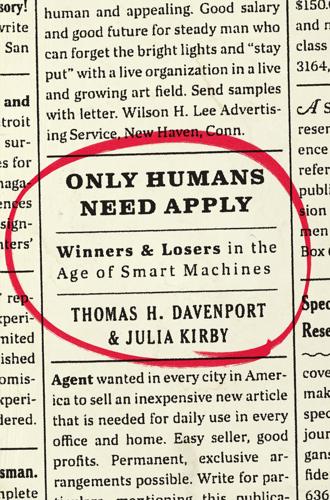
Only Humans Need Apply: Winners and Losers in the Age of Smart Machines
by
Thomas H. Davenport
and
Julia Kirby
Published 23 May 2016
Think about teachers: They figure out what content students need, and transmit it to them through generally manual methods (lectures, demonstrations, and so forth). But there are already “adaptive learning” systems from companies like Amplify, McGraw-Hill Education, and Knewton that diagnose what content a student needs to learn, and many online repositories for educational material, such as Khan Academy. There are some functions that computers can’t perform in such educational settings, like managing a classroom and maintaining discipline in class, but they don’t necessarily require knowledge workers to perform them. 4. It involves straightforward content analysis. “Cognitive computing” systems like IBM Watson have already demonstrated that they can do an amazing job of analyzing and “understanding” content.
…
However, it’s not necessarily enough in itself to meet some of the more nuanced and complex needs of the classroom teacher. Zimmermann works with his colleagues (he teaches in a group of six) to evaluate and adopt new technologies for specific purposes. They include an alternative adaptive learning platform from Khan Academy (Khan content is also included on the School of One platform), Class Dojo for student behavior management, Google Classroom for student collaboration tools, Socrative for rapid student polling, and Plickers for rapid student assessment without tablets or PCs. Shane Herrell, the digital marketer at SAS, also plays the integration role across multiple automation tools.
…
Shaw & Co., 95 deskilling, 15–16 Diebold, John, 191 Digital Reasoning, 44, 45, 185–87, 194–95, 196, 198 Disney/Pixar, 123 disruption (by technology), 4, 5–6, 79, 218, 229 docents, 150–51 Dolnick, Edward, 169–70 Donaldson, Paul, 223 Downey, Robert, Jr., 108 DreamWorks, 123 Drive (Pink), 169 drones, 40 Dulchinos, John, 50 D’Vorkin, Lewis, 164 Easterbrook, Grant, 87, 88 “Economic Prospects for Our Grandchildren” (Keynes), 69, 238 education achieving mastery of a specialty, 162–66 “adaptive learning” systems, 20, 141 augmentation, five steps for teachers, 84–86 augmentation as focus, 234–37 autodidacts, 165–66 automation and, 16, 86, 141, 230 Buehner’s advice, 120 in cognitive technologies, 230–37 creativity and, 115 emphasis on teamwork, 234–35 by employers, 233–34 entrepreneurial learners, 237 government policies and, 229–37 human role in, 16, 20 Khan Academy, 20 online courses for programming, 178 RULER curriculum, 115, 117–18 school calendar, 230 simulations, 21 soft skills for teaching, 119–20 soft skills training, 115–18, 235–37 STEM, 111, 119, 150, 158, 230–34 Stepping In and, 139, 140–41 Stepping Narrowly in, 158–59, 232 in the UK, 231–32 Weikart’s early childhood studies, 118 emotional intelligence (EQ), 113–14, 116, 119, 120 empathy, 68, 81, 110, 111, 115, 117, 120, 122, 129 Employees First, Customers Second (Nayar), 204 employment.
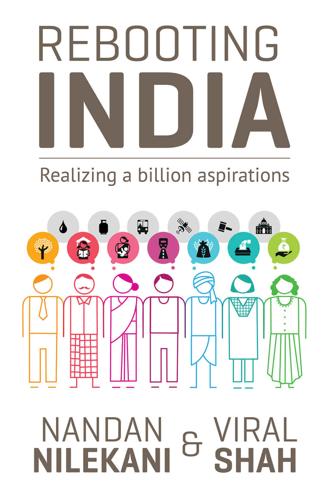
Rebooting India: Realizing a Billion Aspirations
by
Nandan Nilekani
Published 4 Feb 2016
Karthik Muralidharan, an economist and professor at the University of California, San Diego, writes, ‘It is therefore imperative that education policy shift its emphasis from simply providing more school inputs in a “business as usual” way and focus on improving education outcomes.’8 If we are to effect rapid and scalable change, we need to use the kinds of technological tools that are starting to revolutionize the way people disseminate and accumulate knowledge around the world. Flipping the classroom Online education systems are disrupting the traditional learning experience at both the school and college level. At the school level, teacher and entrepreneur Salman Khan’s Khan Academy, a free online education platform, is changing the way students work in a classroom. Khan Academy provides online videos on a variety of subjects, along with problem sets whose difficulty level changes depending upon the capabilities of the user. By viewing these videos at home and then working on homework during school hours with the assistance of a teacher, Khan’s videos are flipping the traditional classroom set-up.9 In Khan’s words, ‘Students can hear lectures at home and spend their time at school doing “homework”—that is, working on problems.
…
‘This isn’t taxing the edge of technology. But they were completely shocked, as if this had never existed before.’ By creating a model in which students can learn at their own pace and are rewarded for mastery of a certain topic while also allowing teachers to monitor progress and provide targeted help to each student, Khan Academy has pioneered a practical approach to the concept of one-on-one education. Technology can also be used to address what Karthik Muralidharan has termed ‘the biggest crisis in the Indian education system’—the challenge of providing high-quality primary education.10 In addition to the statistics we quote above, ASER surveys show that only a quarter of all students in standard five can perform simple mathematical division, and less than half can read.
…
‘Self-learning through gamification’ is the mantra here—children can assimilate knowledge at their own pace, in a format which is simple and entertaining. This kind of learning can take place both in schools and outside them, allowing students to consume ‘bytes’ of individualized learning, much like the Khan Academy model. The child-friendly EkStep user interface will be supported by collaborative content and a scalable technology platform, which can be distributed through multiple channels. Ravi Gururaj, the chairman of NASSCOM’s product council, has said that a project like this ‘leapfrogs the status quo, leverages technology to the hilt, delivers massive platform value and transforms early education across the nation for all classes of citizens’.11 The fundamental idea behind EkStep has also received validation from Bill Gates, who thinks that, ‘Rapid advances in education software on mobile phones will change the way students and teachers around the world learn every day.’12 When it comes to higher education, the traditional university experience and method of education are being challenged by MOOCs (Massive Open Online Courses).

A World Without Work: Technology, Automation, and How We Should Respond
by
Daniel Susskind
Published 14 Jan 2020
In education, more people signed up for Harvard University’s online courses in a single year than had attended the actual university in its entire existence.45 A big part of my own role at Oxford University is teaching undergraduates economics and mathematics—and alongside my instruction, I often direct my students toward Khan Academy, an online collection of practice problems (100,000 of them, solved two billion times) and instructional videos (5,500 of them, watched 450 million times). Khan Academy has about ten million unique visitors a month, a higher effective attendance than the entire primary- and secondary-school population of England.46 To be sure, practice problems and online videos, great as they are for making high-quality education content more widely available, are fairly simple technologies.
…
The lesson from the pragmatist revolution, though, is that this is not necessary: machines can outperform people at a task without having to copy them. Think, for instance, about education. It is true that personal contact between a teacher and student is central to the way we educate people today. But that does not stop an online education platform like Khan Academy from providing millions of students every month with high-quality educational material.68 Likewise, it is true that human interaction between doctors and patients lies at the core of our health care system at the moment. But computer systems do not need to look patients in the eye to make accurate medical diagnoses.
…
Jobs, Steve journalism judgment Juno Kaldor, Nicholas Kasparov, Garry Katz, Lawrence Kay, John Kennedy, John F. Keynes, John Maynard advanced guard and age of leisure and changing facts and distribution problem and labor to capital ratio and process of technological unemployment and technological unemployment and timing and Khan Academy Khanin, Grigorii al-Khwarizmi, Abdallah Muhammad ibn Musa killer robots knitting machine Krugman, Paul Kurzweil, Ray labor. See also Age of Labor labor income inequality labor market policies Lee, William legal capabilities legislation Leibniz, Gottfried Wilhelm leisure leisure class Leontief, Wassily Lerner, Abba Levy, Frank.
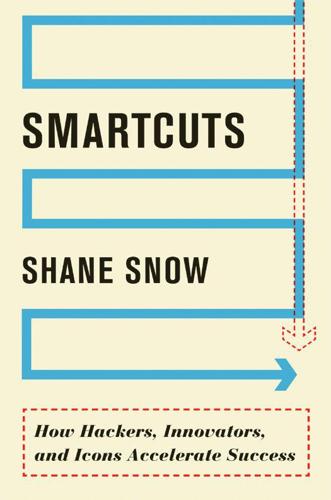
Smartcuts: How Hackers, Innovators, and Icons Accelerate Success
by
Shane Snow
Published 8 Sep 2014
: Biebs tweeted this the same day as Oreo, achieving 17,000 retweets to Oreo Cookie’s 15,000 (see https://twitter.com/justinbieber/status/298136225930420224). 151 cover a multitude of sins: Yes, this was a bit of cringe-worthy biblical allusion. 155 groundbreaking digital school called Khan Academy: Sal Khan’s story so far is told artfully by Clive Thompson, “How Khan Academy Is Changing the Rules of Education,” WIRED, August 2011 (accessed February 17, 2014). While you’re at it, please read Clive’s book Smarter Than You Think (Penguin Press, 2013) sometime. 155 a folk singer whose amazing: The story of Sixto Rodriguez is best experienced by watching Malik Bendjelloul, Searching for Sugar Man, DVD, IMDb, http://www.imdb.com/title/tt2125608/ (accessed February 17, 2014).
…
On the playground, it’s like building a tower to stand on, so you can start your Olympic ring with more velocity. Phan’s tower was a backlog of quality content. This is how innovators like Sal Khan (who published 1,000 math lessons online before being discovered by Bill Gates, who thrust him into the spotlight and propelled him to build a groundbreaking digital school called Khan Academy), and musicians like Rodriguez (a folk singer whose amazing, but largely unrecognized music work from the 1970s was featured in a 2012 documentary, which then catapulted him to world fame) became “overnight” successes. None of them were overnight successes. But each of their backlogs became reservoirs, ready to become torrents as soon as the dam was removed.
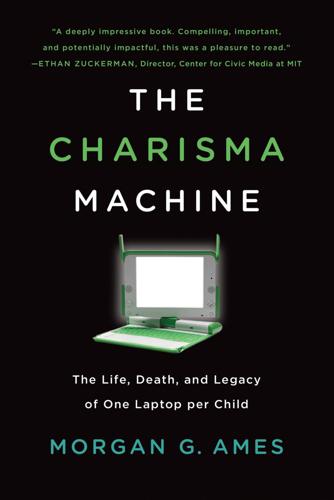
The Charisma Machine: The Life, Death, and Legacy of One Laptop Per Child
by
Morgan G. Ames
Published 19 Nov 2019
Educational reform efforts have often been techno-utopian, and charismatic technologies from radio to the internet have been hailed as saviors for an educational system that appears perpetually on the brink of failure.5 For instance, shortly after my first round of fieldwork in 2010 concluded, the education field was abuzz with the promise—and threat—of massive open online courses, or MOOCs. Startups such as the Khan Academy, Coursera, and Udacity promised to democratize education through self-paced instruction on a computer, where students from all walks of life and from all over the world could pursue their natural curiosities even in the absence of institutional or social support.6 Some universities embraced the move, resurrecting open courseware movements from the late 1990s with new interactive tools for customized learning, even as MOOCs were used to justify budget cuts.
…
They also reflect the libertarian sensibilities of Silicon Valley in its rejection of public services, including some of the publicly maintained infrastructure that makes technology-centric schooling possible. Projects more on the correcting end include flipped classrooms, virtual classrooms, and individualized student tracking enabled by video courses and grading infrastructures, such as those that the Khan Academy, Udacity, and other MOOCs have developed. Projects aimed more at dismantling or completely rebuilding, such as OLPC, include maker-inspired and project-based private and charter schools, as well as some homeschooling and unschooling movements. Like Papert and other OLPC leaders, these movements would rather scrap the existing educational system and make education a “private act” where each child finds their own way to learn or, alternatively, a “market” where the savviest students have direct access to the best ideas, without the state as an intermediary.9 But how less privileged students might fully participate in this privatized education is often unaddressed.
…
Bender et al., Learning to Change the World, x. 66. Negroponte, Being Digital, 200–205; Negroponte, “One-Room Rural Schools.” 67. Projects more on the reconstruction end include flipped classrooms, virtual classrooms, and individualized student tracking enabled by video courses and grading infrastructures, such as the ones that the Khan Academy, Udacity, and other massive open online courses (MOOCs) have developed. Projects aimed more at dismantling, beyond OLPC, include maker-inspired and project-based private and charter schools, as well as some homeschooling and unschooling movements. 68. Marxist educational theorist Paulo Freire, whom Papert and others in OLPC often invoked as justification for their anti-school rhetoric (though they did not address the differences between his radical “praxis”—combining theory and practice—and their technology-enabled anti-school sentiments), instead called this the “banking model of education,” where students are treated like empty vessels to be filled with knowledge.

Average Is Over: Powering America Beyond the Age of the Great Stagnation
by
Tyler Cowen
Published 11 Sep 2013
So let’s take a look at how education will change, keeping in mind these two blades of the scissors, namely that machine intelligence can replace human labor and augment the value of human labor for many individuals. Online education is one place where the new information technologies are emerging. For instance, millions of people are taking MOOCs (massive open online courses) or using the free instructional videos from Khan Academy on mathematics and other topics. Circa 2013, no one is surprised when a new foreign aid program consists simply of dropping iPads into rural Ethiopia and letting children figure out how to work them. Online education is expanding beyond its niche status, but sometimes we don’t recognize the most important developments as explicit education.
…
As a society, we’ll put a lot more effort into teaching things better. For all the virtues of human, face-to-face instruction, it fares pretty miserably when it comes to economies of scale and scope. Fourth, online education also allows for a much more precise measurement of learning. Consider the Khan Academy and its online videos. They are already measuring which videos lead to the best performance on quiz scores, which videos have to be watched more than once, at which point in the videos individuals stop for pause and replay, and so on. We are creating a treasure trove of information about actual learning, and we are just beginning to mine this data.
…
, 7, 12, 157 Jobs, Steve, 25 Jones, Benjamin, 216 Journal of the American Statistical Association, 10 journalism, 9 Junior (chess program), 68, 72, 78 Jurafsky, Dan, 12–13 K-12 education, 4, 168, 181–82 Kabbalah, 153 Kahneman, Daniel, 105, 227 Kaiser Family Foundation, 60 Karlan, Dean, 223 Kasparov, Garry, 7, 69, 77, 80–81, 110, 124, 157 Kaufman, Larry, 203 Kempelen, Wolfgang von, 149 Kepler, Johannes, 153 Keynesian economics, 53–54, 56, 226 Khan Academy, 180, 184–85 KIPP schools, 199 Knoxville, Tennessee, 244 Komodo (chess program), 68, 203 Kraai, Jesse, 188 Kramnik, Vladimir, 103, 109, 149–50 Kronrod, Alexander, 68 Krueger, Alan, 59 Krugman, Paul, 180–81, 227 Kurzweil, Ray, 6, 137–38 labor market and age of workers, 41–42, 51–52, 62–63 and benefit costs, 36, 59, 113 careers in the changing market, 41–44 changing worker profiles, 29–40 and computer skills, 21, 33 and conscientiousness of workers, 201–2 and factor price equalization, 163 and global trends, 3–4 and healthcare reform, 238 and hiring costs, 36, 59, 60 important worker characteristics, 32 and income trends, 39 labor economics, 226 and layoffs, 54–55, 57–58, 61 and management, 27–29 and man-machine collaboration, 93 and marketing, 22–27 and outsourcing, 163–71 participation rates, 45, 46, 51 polarization in, 37, 55, 231 and “reshoring” trend, 177 and residential segregation, 247–48 and retraining, 202 and the social contract, 229 laboratory science, 100 land prices, 236, 247 language recognition, 119, 139–41 Latin America, 167–68, 170–71, 242 law and legal issues and the changing labor market, 41 costs of employing labor, 36, 59 lawsuits, 36, 59, 60 lawyer ratings, 121 malpractice suits, 128 and medical diagnosis, 128–29 and reliance on computer systems, 128–31 See also regulatory issues layoffs, 54–55, 57–58, 61 Levitt, Steven, 226–27 liberalism, 252, 253–54 libertarianism, 256–57 lie detection, 12–13, 16 The Lights in the Tunnel (Ford), 6 liquidity crunch, 54, 55 Liu, Runjuan, 164 Loebner Prize, 139–40 logistic function, 203 long-term unemployment, 58 machine intelligence.

The End of Big: How the Internet Makes David the New Goliath
by
Nicco Mele
Published 14 Apr 2013
Soon other relatives were requesting tutoring sessions, and before long Khan was recording the videos of his tutoring and posting them online. An excellent teacher soon finds eager students, and Khan’s video tutorials went viral. Khan started a Web site, Khan Academy, and now has more than 2,400 lessons posted online. In a given month, 3.5 million unique visitors view 39 million pages on the site to learn more about math and science.15 Inspired in part by Khan Academy, one of the most popular professors at Stanford began teaching an online class about artificial intelligence. Sebastian Thrun was stunned when 160,000 people from around the globe signed up to take the graduate-level class, CS221: Introduction to Artificial Intelligence.
…
Harry Lewis, Excellence Without a Soul: How a Great University Forgot Education (New York: PublicAffairs, 2006), 8. 5. http://www.usnews.com/opinion/articles/2011/03/18/a-harvard-education-isnt-as-advertised 6. http://www.demos.org/publication/great-cost-shift-how-higher-education-cuts-undermine-future-middle-class 7. http://www.washingtonpost.com/opinions/when-it-comes-to-e-mailed-political-rumors-conservatives-beat-liberals/2011/11/17/gIQAyycZWN_story.html 8. http://www.csmonitor.com/The-Culture/Family/2012/0617/Bachelor-s-degree-Has-it-lost-its-edge-and-its-value 9. http://chronicle.com/blogs/innovations/why-did-17-million-students-go-to-college/27634 10. http://pewresearch.org/pubs/1993/survey-is-college-degree-worth-cost-debt-college-presidents-higher-education-system 11. http://pewresearch.org/pubs/1993/survey-is-college-degree-worth-cost-debt-college-presidents-higher-education-system 12. http://www.businessweek.com/technology/content/may2011/tc20110524_317819.htm 13. http://techcrunch.com/2011/04/10/peter-thiel-were-in-a-bubble-and-its-not-the-internet-its-higher-education/ 14. http://ocw.mit.edu/about/newsletter/archive/2011-10/ 15. http://techcrunch.com/2011/10/19/khan-academy-triples-unique-users-to-3-5-million/ 16. http://blogs.reuters.com/felix-salmon/2012/01/31/udacitys-model/ 17. http://www.britannica.com/blogs/2008/04/the-great-unbundling-newspapers-the-net/ 18. http://www.theatlantic.com/technology/archive/2012/01/the-great-unbundling-of-the-university/251831/ 19. http://www.centerforcollegeaffordability.org/uploads/ForProfit_HigherEd.pdf 20. http://www.bloomberg.com/news/2011-10-19/apollo-fourth-quarter-profit-sales-top-analysts-estimates-1-.html 21. http://nber.org/papers/w18201 22. http://www.theatlantic.com/business/archive/2012/07/why-the-internet-isnt-going-to-end-college-as-we-know-it/259378/ 23. http://toolserver.org/~daniel/WikiSense/Contributors.php?
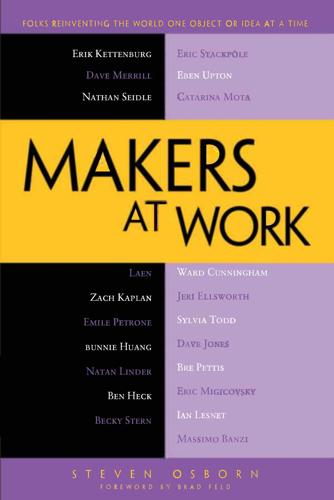
Makers at Work: Folks Reinventing the World One Object or Idea at a Time
by
Steven Osborn
Published 17 Sep 2013
Steven: Are you using Scratch10 for that or haven’t really decided yet? James: I think we’re thinking about JavaScript because it will run everywhere. Steven: You are probably aware of this, but the JavaScript stuff on Khan Academy is amazing for learning. James:The JavaScript stuff is neat. They worked out a way to make editing live so as you’re typing, you can see the how it affects the outcome of your program. We should do that later. Sylvia: Oh, Khan Academy. My friend Julie does that on her own. Steven: It’s dangerous. You start playing and solving math problems, and then you get badges and points for it. Pretty soon, I’m so tired I can’t really think, but I’m solving trivial math problems like how to tell time, just for the points.
…
Things have changed a lot since, right? Nowadays, you don’t necessarily need an academic degree to learn certain things, because you have hackerspaces, you have tech shops, you have online communities, you have fab labs. All these things that didn’t exist back then. Osborn: Just with the online resources, like Khan Academy,6 you can learn basic math, from addition up through college-level calculus using online tools. Mota: Exactly. But if this was fifteen years ago, going to school was practically the only way to learn those things. Speaking of hackerspaces, that was, for me, another important transformation that came out of the workshop in Madrid we talked about earlier.
…
See Seidle, Nathan Stackpole, Eric Aquarius Undersea Lab background CubeSat satellites aerodynamic de-orbiting mechanism Ames Research Center CubeSat Team SJSU design robotic submarine Robotic Systems Lab space exploration Hall City Cave ideological level Kickstarter project MATE NASA OpenROV accessible adventure (AA) business reason daily discoveries (DD) drawing and design Hall City Cave HomePlug adaptor intense innovation (II) internet control missions ongoing technical challenges patent issue proprietary protocol SCINI open-source story space satellites TechShop membership Stern, Becky accelerometer/gyroscope aesthetics and technology Arduino projects biosensing Internet of Things project botanical plant business models CAD files CNC titanium ring creative director 3D fashion 3D objects e-textiles fabric types FAT lab FLORA project FLORA sensors giant plush pillow Google+ Graffiti Research Lab gravitational pull hackerspaces list intellectual property Internet communication coding Kickstarter knitting needle collection Kraftwerk video LEDs and basic programming license little crafting knowledge and craft/sewing instruction local community Making Wireless Toys methane sensor nightlight/switch online and sharing tutorials Pac-Man animation parents activity PIC chips project longhaul Raspberry Pi and Arduino Raspberry Pi projects resources online school, Arizona Space Odyssey project specialized tools and equipment technical innovation to learn visual effect wearable electronics wearable LED suspenders Submersible Capable of under Ice Navigation and Imaging (SCINI) Super Awesome Mini Maker Show Symbolic Systems T TED Fellows Program Thief river falls Thingiverse Tindie. See Petrone, Emile Todd, Sylvia aerospace engineer age board chief executive officer CNC machine Crazy Putty episode 3D gaming glasses energy points/badges episodic, nonserial show failures favorite project green-tea leather heart iPad app JavaScript stuff Kansas city Khan academy Lilypad heartbeat pendant LOGO programming MythBusters NASA open-source superglue passion photoplethysmography photos polymer chains programming RoboPaint San Francisco Savage, Adam science fair Science Guy silver medal space camp valve WaterColorBot welding White House zombie game U Upton, Eben academic year ASIC-level work Atmel AVR Atmel microcontrollers Broadcom camera use cases charity China market Chinese guys C-like languages computers electrical engineering general-purpose processor hardware problems Iridium satellite phones Model A Model B motor controllers multimedia capabilities night-vision camera NOOBS 4QD Robot Wars signal analog and digital PCBs teaching programming twenty-five-dollar computer UK contract manufacturers wildlife camera project ZSL V Vertical video syndrome W Wealth of Networks X, Y Xbox 360 laptop Z Zoological Society of London (ZSL) Other Apress Business Titles You Will Find Useful Lobbyists at Work Leech 978-1-4302-4560-5 Lawyers at Work Cosslett 978-1-4302-4503-2 Women Leaders at Work Ghaffari 978-1-4302-3729-7 Inventors at Work Stern 978-1-4302-4506-3 CIOs at Work Yourdon 978-1-4302-3554-5 Advertisers at Work Tuten 978-1-4302-3828-7 Venture Capitalists at Work Shah/Shah 978-1-4302-3837-9 CTOs at Work Donaldson/Siegel/Donaldson 978-1-4302-3593-4 European Founders at Work Santos 978-1-4302-3906-2 Available at www.apress.com

The End of College: Creating the Future of Learning and the University of Everywhere
by
Kevin Carey
Published 3 Mar 2015
Khan had computer science degrees from MIT and an MBA from Harvard, and had become recently famous for creating a series of instructional videos for elementary, middle, and high school children that had attracted millions of views on YouTube. The videos became the basis for Khan’s hugely popular education web site, Khan Academy. Thrun is a logical person and he saw no reason why someone couldn’t do the same for college. So he returned to Stanford and talked with Peter Norvig, who was both Google’s research director and Thrun’s co-professor for an upcoming graduate course at Stanford called CS221: Introduction to Artificial Intelligence: Principles and Techniques.
…
Koller’s daughter had been enrolled in Stanford’s Education Program for Gifted Youth (EPGY). This is the program that Patrick Suppes first began developing back in the 1960s—the basis for his famous article in Scientific American. It’s still in operation today. EPGY is sophisticated but inflexible, said Koller, and after a while she and her daughter started watching Khan Academy videos instead. They were more satisfying, because the experience was more “Web 2.0,” which is a way of describing online environments in which large numbers of people communicate and collaborate, learning and making together. Suppes’s original Teletype math program came before Doug Engelbart and his team showed the world what the future of networked collaboration would look like.
…
Press stores, 163 James, Henry, 32 James, William, 32–33, 45, 47, 250 Jefferson, Thomas, 23, 193 Jews, 46, 53 Jobs, Steve, 126 Johns Hopkins University, 27, 29 Johnson, Lyndon, 55, 56, 61 Jones, Tommy Lee, 165 Jordan, David Starr, 26 Junior college, 55 (see also Community colleges) Kamlet, Mark, 72–73, 251 Kantian philosophy, 251 Kennedy, John F., 165 Kerr, Clark, 53–56 Khan, Salman, 148–49 Khan Academy, 149, 155 Kickstarter, 133 King, Danny, 216, 218 King’s College, 23 Kiva, 133 Kleiner Perkins Caufield & Byers, 153 Knapp, Steven, 43 Koller, Daphne, 153–58, 171 Kosslyn, Stephen, 136–37 Kyoto University, 204 Lancet, 222 Lander, Eric, 1–4, 38–39, 44, 177–78, 221 MIT freshman biology course taught by, 11 (see also Introduction to Biology—The Secret of Life [7.00x]) Land-grant universities, 25–27, 35, 51, 53, 55, 95, 108, 122–23, 168 Learn Capital, 130, 156–57 Leckart, Steven, 149 Legally Blonde (film), 166 Levin, Richard C., 157 Lewin, Walter, 190–91 Liberal arts, 16, 27–31, 237, 241, 244–45 in accreditation standards, 50 core curriculum for, 49 at elite universities, 179 online courses in, 158, 244 PhDs and, 35 rankings and, 59 teaching mission in, 253 training, research, and, 29, 33, 261n (see also Hybrid universities) Lincoln, Abraham, 25 LinkedIn, 66, 217 Litton Industries, 75 Livy, 25 London, University of, 23 Lue, Robert, 178–81, 211, 231 Lyft ride-sharing service, 122 MacArthur, General Douglas, 51, 90 MacArthur “Genius” awards, 2 MacBooks, 132, 144 Madison, James, 23 Manitoba, University of, 150 Maples, Mike, Jr., 128–30, 132 Marine Corps, U.S., 140 Marx, Karl, 45 Massachusetts Bay Colony, Great and General Court of, 22 Massachusetts Institute of Technology (MIT), 37–38, 59, 116, 132, 148, 153, 167–79, 245 admissions to, 39, 161, 212, 214–15, 245 Brain and Cognitive Sciences Complex, 1–4, 143, 173–74 Bush at, 51–52, 79, 125, 168 computer science sequence offered online by, 231, 233 founding of, 29, 167 General Institute Requirements, 14, 190, 241 graduation rate at, 8 hacks as source of pride at, 168–69 joint online course effort of Harvard and, see edX MITx, 169, 173, 203 OpenCourseWare, 107–8, 150, 169, 185, 191 prestige of brand of, 163, 181 Saylor at, 176–90 Secret of Life (7.00x) online offering of, see Introduction to Biology—The Secret of Life (7.00x) tour of campus of, 168, 174 wormhole connecting Stanford and cafeteria at, 174–75, 179, 235 Massive open online courses (MOOCs), 150, 154, 156, 158, 159, 185, 204, 255 global demand for, 225 initial audience for, 214–15 providers of, see names of specific companies and universities Master Plans, 35, 60, 64–65 Master’s degrees, 117, 193, 195–96 Mayo Clinic, 242 Mazur, Eric, 137 “M-Badge” system, 208–9 McGill University, 204 Mellon Institute of Science, 75, 76, 229 Memex, 79, 80 Mendelian genetics, 3, 103–4 Miami-Dade Community College, 64 Microsoft, 128, 139, 145, 146, 188, 204 MicroStrategy, 187–91, 199 Middle States Association of Colleges and Schools, 50 Minerva Project, 133–38, 141, 215, 235, 236, 243 Minnesota, University of, Rochester (UMR), 242–43 Missouri, University of, 208 Moore’s law, 176 Morrill, Justin Smith, 25–26 Morrill Land-Grant Act (1862), 25, 168 Mosaic software program, 126 Mozilla Foundation, 205–8, 218, 248 MS-DOS, 87 Myanganbayar, Battushig, 214, 215 NASDAQ, 177, 188 National Aeronautics and Space Administration (NASA), 208 National Broadcasting Company (NBC), 96 National Bureau of Economic Research, 10 National Institutes of Health, 52 National Instruments, 216 National Manufacturing Institute, 208 National Oceanic and Atmospheric Administration, 208 National Science Foundation, 52 National Survey of Student Engagement, 243 Navy, U.S., 53, 123 Nebraska, University of, 26 Nelson, Ben, 133–35, 139, 181 Netflix, 131, 145 Netscape, 115, 126, 128, 129, 204–5 Newell, Albert, 79, 105 New Jersey, College of, 23 Newman, John Henry, 27–29, 47, 49, 244 Newman Report (1971), 56 Newton, Isaac, 190 New York, State University of, Binghamton, 183–84 New York City public schools, 1, 44 New York Times, 9, 44, 56–57, 107–8, 149, 170 New York University (NYU), 9, 64, 96, 250 Ng, Andrew, 153, 158 Nicomachean Ethics (Aristotle), 17 Nimitz, Admiral Chester W., 90 NLS/Augment, 125 Nobel Prize, 3, 45, 59, 78, 80, 176 Northeastern University, 64 Northern Arizona University, 229–30 Health and Learning Center, 230 Northern Iowa, University of, 55 Norvig, Peter, 149, 170, 227–28, 232 Notre Dame (Paris), cathedral school at, 18 Nurkiewicz, Tomasz, 218 Obama, Barack, 2 Oberlin College, 46 O’Brien, Conan, 166 Oklahoma, University of, 90 Omdurman Islamic University, 88 oNLine system, 125–26 Open Badges, 207 Open source materials and software, 177, 205–6, 215, 223, 232 Organisation for Economic Co-operation and Development, 9, 224 Overeducated American, The (Freeman), 56 Oxford University, 19, 21, 23, 24, 92, 135 Packard, David, 123 Parkinson’s disease, 70 Paris, University of, 18–19, 21, 137 Pauli, Wolfgang, 176 Pauling, Linus, 70 Pausch, Randy, 71–72 Peace Corps, 125 Pellar, Ronald (“Doctor Dante”), 208 Pell Grant Program, 56 Penguin Random House, 146 Pennsylvania, University of, 23, 24, 31 Wharton Business School, 155 Pennsylvania State University, 53 People magazine, 57 Pez dispensers, 146 Phaedrus (Socrates), 20, 98 PhDs, 7, 55, 117, 141, 193, 237, 250, 254 adjunct faculty replacing, 252 college rankings based on number of scholars with, 59 regional universities and community colleges and, 60, 64, 253 as requirement for teaching in hybrid universities, 31–33, 35, 50, 60, 224 Silicon Valley attitude toward, 66 Philadelphia, College of, 23 Philip of Macedon, 92 Phoenix, University of, 114 Piaget, Jean, 84, 227 Piazza, 132 Pittsburgh, University of, 73–76 Pixar, 146 Planck, Max, 45 Plato, 16, 17, 21, 31, 44, 250–51 Portman, Natalie, 165 Powell, Walter, 50, 117 Princeton University, 1–2, 23, 112, 134, 161, 245 Principia (Newton), 190 Protestantism, 24 Public universities, 7, 55, 177, 224, 253 Purdue University, 96, 208 Puritans, 22–24 Queens College, 23 Quizlet, 133 Rafter, 131–32 Raphael, 16, 17 Reader’s Guide to Periodical Literature, 87 Reagan, Ronald, 56 Regional universities, 55, 60, 64 Reid, Harry, 42 Renaissance, 19 Rhode Island, College of, 23 Rhodes Scholarships, 2 Rice University, 204 RNA, 3 Rockstar Games, 230 Roksa, Josipa, 9, 36, 85, 244 Romans, ancient, 16 Roosevelt, Theodore, 165 Ruby on Rails Web development framework, 144 Rutgers University, 23 Sample, Steven, 64 Samsung, 146 San Jose State University, 177 Sandel, Michael, 177 SAT scores, 63, 136–37, 171, 195, 213 Saylor, Michael, 186–93, 199, 201 Saylor.org, 191, 223, 231 Schelling, Friedrich Wilhelm Joseph, 45 School of Athens, The (Raphael), 16 Schopenhauer, Arthur, 45 Science: The Endless Frontier (Bush), 51 Scientific American, 92, 155 Scientific Research and Development, U.S.
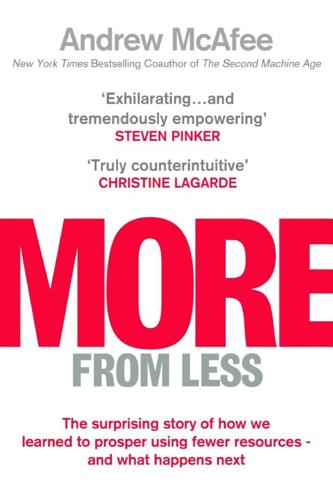
More From Less: The Surprising Story of How We Learned to Prosper Using Fewer Resources – and What Happens Next
by
Andrew McAfee
Published 30 Sep 2019
As we saw in the last chapter, two important elements of this playbook are lots of human capital (people with the skills required for innovation) and nonexcludable technologies (ones that aren’t withheld from general use by patents or other intellectual-property protection). We’ve seen philanthropies and nonprofits make important contributions in both of these areas. Khan Academy got its start in 2006 when Sal Khan began posting videos of the online tutorials he was offering his cousins. It has expanded to become a worldwide force in educating people of all ages. Khan Academy is funded by a wide range of corporate and family philanthropies. Another of my favorite examples of new approaches to human capital formation is 42, a technology academy founded by the French entrepreneur Xavier Niel.V All courses at 42 are free and in person rather than online.
…
King, 103 human capital, 233, 236, 261 human rights, 175–76 humanism, 37 Hungary, 174 hunting, 43, 44–45, 95–96, 183 hydroelectric power, 111 increasing returns to scale, 233 Index of Economic Freedom, 172 India, 85, 138, 147–48, 171–72, 174 Indonesia, 148 Industrial Era, 15–33, 56, 63, 99, 122, 130, 168, 177, 190 errors of, 35–51 Industrial Revolution, 16, 22 inequality, 128–29, 197–98, 206–10, 208 infant mortality, 28 urban, 23 innovation, 111–12, 114, 121–22, 141, 203 institutions, 159–61, 209 intellectual property, 116 internal combustion engine, 26–28, 30, 189 International Convention for the Regulation of Whaling, 163 International Rice Research Institute, 32 Internet, 169, 236 IPAT Model, 62, 63, 64 iPhone, 102, 111, 112, 235 Isenberg, Andrew, 44, 45 Ishokov, Aleksandr, 164 Ivashchenko, Yulia, 163 Jackson Hole National Monument, 260 Jacob, Jeffrey, 91 Jamaica, 37 Janah, Leila, 255–56 Japan, 106 Jevons, William, 47–48, 51, 56, 60, 63, 69, 77, 99, 108, 122, 141, 237 Jobs, Steve, 111, 112, 235 Johnson, Lyndon B., 29n Johnson, Tom, 171 Jones, Bruce, 174 journalism, 180 Kedrosky, Paul, 72 Keiser, David, 190 Khan Academy, 262 “Kissinger Report, The,” 56 Knowledge Illusion, The (Sloman and Fernbach), 226 Krauth, Tobias, 148 Lacey Act, 96 Lacey, John, 96 Lakner, Christoph, 221 Las Casas, Bartolomé de, 39–40 Laue, Max von, 30 Law on Cooperatives (1988), 171 Le Guin, Ursula K., 114–15 lead, 95 leather, 45 Leopold II, King of Belgium, 39 Li Keqiang, 146 Life, 61 life expectancy, 13, 32, 196–97 limits, imposing of, 65–67, 93–97 Limits to Growth, The, 57–58, 65, 66, 71, 93, 119–20 Lincoln, Abraham, 37, 38, 121 Linux operating system, 235–36 Litton, Martin, 61 living standards, 9–10, 32, 69 Lomborg, Bjorn, 179, 181 London, 22–23, 26 Lovins, Amory, 58–59 MacLeish, Archibald, 54 Macron, Emmanuel, 155, 250 Maddison, Angus, 9, 13 Maduro, Nicolas, 134–35, 137–38 Magee, Christopher, 73 Magie, Elizabeth, 203 Malthus, Thomas Robert, 7–8, 9, 10, 13, 15, 20, 131, 237 mammals, biomass of, 33 Mann, Charles, 31 manufacturing, 202, 239–40 Mao Zedong, 170 Marine Mammal Protection Act (1972), 96 market fundamentalism, 131–32, 133 Marshall, Alfred, 47–48, 50–51, 63, 99, 108–09, 141, 6977 Martha’s Vineyard Fishermen’s Preservation Trust, 263 Marx, Karl, 21, 130, 131 material intensity, 75 maternal mortality, 196–97 Mattis, James, 211–12 Maybach, Wilhelm, 27 Meadows, Donella, 57 Mesthene, Emmanuel, 114 metals, 56, 79 Mexico, 137, 139 Microsoft, 102, 257 Milanovic, Branko, 221 Mill, John Stuart, 180 Miller, Grant, 28 Mines Act (1842), 38 Mises, Ludwig von, 40 Mokyr, Joel, 122 Molina, Mario, 149 monopolies, 202–03, 204 Monsanto, 155 Montreal Protocol, 150, 249 Morris, Ian, 24–25, 60n Most Powerful Idea in the World, The (Rosen), 16 motors, 27 Mussolini, Benito, 40 Naam, Ramez, 31 National Security Council, 56 Native Americans, 44–45 natural gas, 103, 104, 109, 110, 188 Nature Wars (Sterba), 43–44 negative bias, 179–81 negative externalities, 142, 186, 247–48, 253 Nelson, Gaylord, 61 Neolithic revolution, 12 New Pioneers (Jacob), 91 New Testament, 127 New York Times, 53, 61–62, 147 Newcomen, Thomas, 16 Nicholas, Kim, 185 nitrogen, 30–31 nitrogen pollution, 190 Nixon, Richard, 66 Nokia, 102, 111 nonprofits, 259–63 Nordhaus, William, 248–49 Norquist, Grover, 132 North, Douglass, 159 North Korea, 133 nuclear energy, 58–59, 110, 251–52, 266 nuclear fusion, 240–41 Nunn, Nathan, 268 nutrition, 23–24, 32, 177, 193 ocean acidification, 190 O’Hanlon, Michael, 174 oil, 135–36 one-child policy, 93–94 Ostrom, Elinor, 182 Our World in Data (website), 179, 180 overdoses, 215, 216 ozone layer, 149–50, 228 Pacific Steam Navigation Company, 17 Paddock, William and Paul, 55–56 Paris Agreement, 158 partial excludability, 232–33 passenger pigeon, 42–43, 96, 152, 181 Pasteur, Louis, 23 Patagonia National Park, 260 patents, 19, 116, 232, 235 peak oil, 102–05 peak paper, 90, 113 “Peak Stuff” (Goodall), 76–77 pertussis, 227 Peru, 138 Petroleum Reitwagen, 27 phones, 168–69 Pinker, Steven, 37, 122, 176, 177, 179 Plain Cookery Book for the Working Classes, A (Francatelli), 23–24 plastics, 83, 252 plumbing, indoor, 26, 28–30, 168 Poland, 92 polarization, political, 224–25, 254 Politics of Resentment, The (Cramer), 221 pollution, 5, 23, 35, 36, 40–42, 54–55, 63, 66–67, 95, 141, 142, 157, 160–61, 167, 266 globalization of, 148–50 markets for, 143–44 Poole, Robert, 54 population, 13, 32–33, 62–63, 88, 192 of England, 10–11 global, 55–56, 65–69, 71 limiting, 93–94 oscillation in, 8–12, 15, 17, 31 Population Bomb, The (Ehrlich), 55, 65 poverty, 10–11, 179–80, 181, 189, 191–92, 215 Poverty and Famines (Sen), 69 precision agriculture, 242–43 price elasticity of demand, 49, 108–09 Principles of Economics (Marshall), 50–51 private ownership, 117, 170 “Problem of Social Cost, The” (Coase), 143 profit-seeking companies, 115–16 property rights, 116, 133 proteins, 239–40 public awareness, 3–4, 145–48, 153, 154, 158–59, 161, 167–68, 176–78, 226 Public Health Service, US, 55 Putnam, Robert, 212, 213 Radio Shack, 102 railroads, 18, 19, 26, 105–06, 109–10 Rand, Ayn, 132 rare earth elements (REE), 106–08, 109, 110 Reagan, Ronald, 132 rebound effect, 72–73 reciprocity, 212, 213, 217 recycling, 64–65, 90–91 reforestation, 184, 185 regulation, 5 regulatory capture, 129 religion, 115 renewable energy, 111 resource availability, 119–20 resource consumption, 56–58, 63–64, 78–79, 99, 119–20 responsive government, 3–4, 145–48, 153, 154, 158–59, 161, 167–68, 175–76 Return of Nature, The (Ausubel), 4–5 Ricardo, David, 19n Ridley, Matt, 161 Riley, James, 13 Ripley, S.

Who’s Raising the Kids?: Big Tech, Big Business, and the Lives of Children
by
Susan Linn
Published 12 Sep 2022
“Prodigy Education | Make Learning Math Fun!,” Prodigy Education, 2020, www.youtube.com/watch?v=O1_V75nK67M. 50. “Gamification: Learning Made Fun with Genially,” The Techie Teacher, April 20, 2020, www.thetechieteacher.net/2020/04/gamification-learning-made-fun-with.html. 51. See Rishi Desai, MD, Khan Academy Fellow at “Khan Academy Gamification: Making Learning Fun,” YouTube video, September 10, 2013, www.youtube.com/watch?v=2EZcpZSy58o. 52. “Fun, n. and adj.,” in OED Online (Oxford University Press), www.oed.com/view/Entry/75467. 53. Kathy Hirsh-Pasek et al., “Putting Education in ‘Educational’ Apps: Lessons from the Science of Learning,” Psychological Science in the Public Interest 16, no. 1 (2015): 3–34. 54.
…
For instance, an ad for Prodigy on YouTube proclaims that it will “make learning math fun!”49 In fact, like “personalized learning,” “fun” is a big component of marketing for gamified edtech products. Versions of the trope “make learning fun” turn up repeatedly in edtech marketing, with headlines like “Gamification: Make Learning Fun with Genially”50 or “Khan Academy: Making Learning Fun.”51 Tag line variations on “make learning fun” may generate a lot of sales, but they have problematic implications for children’s learning and their capacity to have fun. The Oxford English Dictionary defines fun as “light-hearted pleasure, enjoyment, or amusement; boisterous joviality or merrymaking; entertainment.”52 I believe that fun is crucial for children’s wellbeing—and my own.

The Singularity Is Nearer: When We Merge with AI
by
Ray Kurzweil
Published 25 Jun 2024
BACK TO NOTE REFERENCE 66 Herculano-Houzel, “Human Brain in Numbers”; Sporns, Tononi, and Kötter, “The Human Connectome”; Ji Yeoun Lee, “Normal and Disordered Formation of the Cerebral Cortex: Normal Embryology, Related Molecules, Types of Migration, Migration Disorders,” Journal of Korean Neurosurgical Society 62, no. 3 (May 1, 2019): 265–71, https://doi.org/10.3340/jkns.2019.0098; Christopher Johansson and Anders Lansner, “Towards Cortex Sized Artificial Neural Systems,” Neural Networks 20, no. 1 (January 2007): 48–61, https://doi.org/10.1016/j.neunet.2006.05.029. BACK TO NOTE REFERENCE 67 For a deeper dive on the neocortex and science’s evolving understanding of the structural underpinnings of higher cognition, see Matthew Barry Jensen, “Cerebral Cortex,” Khan Academy, accessed November 20, 2021, https://www.khanacademy.org/science/health-and-medicine/human-anatomy-and-physiology/nervous-system-introduction/v/cerebral-cortex; Hawkins, Ahmad, and Cui, “Theory of How Columns in the Neocortex Enable Learning”; Jeff Hawkins et al., “A Framework for Intelligence and Cortical Function Based on Grid Cells in the Neocortex,” Frontiers in Neural Circuits 12, no. 121 (January 11, 2019), https://doi.org/10.3389/fncir.2018.00121; Baoguo Shi et al., “Different Brain Structures Associated with Artistic and Scientific Creativity: A Voxel-Based Morphometry Study,” Scientific Reports 7, no. 42911 (February 21, 2017), https://doi.org/10.1038/srep42911; Barbara L.
…
BACK TO NOTE REFERENCE 85 For quick, accessible explainers on the differences between capital and labor, see BBC, “Methods of Production: Labour and Capital,” BBC Bitesize, accessed January 30, 2023, https://www.bbc.co.uk/bitesize/guides/zth78mn/revision/5; Sal Khan, “What Is Capital?,” Khan Academy, accessed April 20, 2023, https://www.khanacademy.org/economics-finance-domain/macroeconomics/macroeconomics-income-inequality/piketty-capital/v/what-is-capital; Catherine Rampell, “Companies Spend on Equipment, Not Workers,” New York Times, June 9, 2011, https://www.nytimes.com/2011/06/10/business/10capital.html; Tim Harford, “What Really Powers Innovation: High Wages,” Financial Times, January 11, 2013, https://www.ft.com/content/b7ad1c68-59fb-11e2-b728-00144feab49a.
…
BACK TO NOTE REFERENCE 92 For more on GDP and marginal cost, see Tim Callen, “Gross Domestic Product: An Economy’s All,” International Monetary Fund, December 18, 2018, https://www.imf.org/external/pubs/ft/fandd/basics/gdp.htm; Alicia Tuovila, “Marginal Cost of Production,” Investopedia, September 20, 2019, https://www.investopedia.com/terms/m/marginalcostofproduction.asp; Sal Khan, “Marginal Revenue and Marginal Cost,” Khan Academy, accessed April 20, 2023, https://www.khanacademy.org/economics-finance-domain/ap-microeconomics/production-cost-and-the-perfect-competition-model-temporary/short-run-production-costs/v/marginal-revenue-and-marginal-cost; Jeremy Rifkin, The Zero Marginal Cost Society: The Internet of Things, the Collaborative Commons, and the Eclipse of Capitalism (New York: St.

Doing Data Science: Straight Talk From the Frontline
by
Cathy O'Neil
and
Rachel Schutt
Published 8 Oct 2013
On the Internet, this means Amazon recommendation systems, friend recommendations on Facebook, film and music recommendations, and so on. In finance, this means credit ratings, trading algorithms, and models. In education, this is starting to mean dynamic personalized learning and assessments coming out of places like Knewton and Khan Academy. In government, this means policies based on data. We’re witnessing the beginning of a massive, culturally saturated feedback loop where our behavior changes the product and the product changes our behavior. Technology makes this possible: infrastructure for large-scale data processing, increased memory, and bandwidth, as well as a cultural acceptance of technology in the fabric of our lives.
…
Thinking about data in matrices as points in space, and what it would mean to transform that space or take subspaces can give you insights into your models, why they’re breaking, or how to make your code more efficient. This isn’t just a mathematical exercise for the sake of it—although there is elegance and beauty in it—it can be the difference between a star-up that fails and a start-up that gets acquired by eBay. We recommend Khan Academy’s excellent free online introduction to linear algebra if you need to brush up your linear algebra skills. Singular Value Decomposition (SVD) Hopefully we’ve given you some intuition about what we’re going to do. So let’s get into the math now starting with singular value decomposition.
…
sparseness, Some Problems with Nearest Neighbors test sets, Training and test sets training sets, Training and test sets Kaggle, Background: Crowdsourcing, The Kaggle Model–Their Customers crowdsourcing and, Background: Crowdsourcing customer base of, Their Customers Facebook and, Their Customers leapfrogging and, A Single Contestant Katz, Elihu, Case-Attribute Data versus Social Network Data KDD competition, Background: Data Science Competitions Kelly, John, Social Network Analysis at Morning Analytics keying datasets, Linear Regression Khan Academy, Why Now?, The Dimensionality Problem Knewton, Why Now? knn() function, Choosing k L labels, What are the modeling assumptions?, Click Models, Challenges in features and learning churn, Detecting suspicious activity using machine learning defining, Defining the labels Lander, Jared, Helping Hands Laplace smoothing, Fancy It Up: Laplace Smoothing large-scale network analysis thought experiment, Moving from Descriptive to Predictive latency, The Dimensionality Problem latent features, The Dimensionality Problem most important, Important Properties of SVD latent space models, Further examples of random graphs: latent space models, small-world networks Latour, Bruno, Gabriel Tarde Lazarsfield, Paul, Case-Attribute Data versus Social Network Data leakage, How to Be a Good Modeler leapfrogging, A Single Contestant issues with, A Single Contestant learning by example thought experiment, Thought Experiment: Learning by Example–How About k-nearest Neighbors?
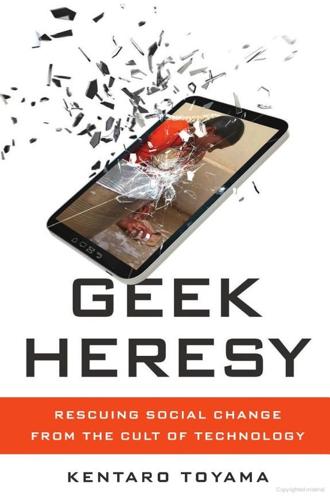
Geek Heresy: Rescuing Social Change From the Cult of Technology
by
Kentaro Toyama
Published 25 May 2015
We should teach digital natives in the language they were born in: “My own preference for teaching Digital Natives,” he wrote, “is to invent computer games to do the job, even for the most serious content.”20 Egged on by the chorus of support, America is in an orgy of educational technologies despite scarce evidence that they improve learning. In 2013, the Los Angeles Unified School District announced a $1 billion program to distribute iPads to all of its students.21 Donors flock to support the online Khan Academy, where the disembodied voice of Salman Khan accompanies video-recorded blackboard instruction. And MOOCs – massively open online courses – from Harvard, MIT, Stanford, and other universities boast about the millions of people from around the world taking their free classes. The fever is contagious.
…
Yet another group required no substantive help at all. They just needed some prodding to finish their homework on time. Despite their differences, the students had one thing in common: What their parents were paying for was adult supervision. All of the content I tutored is available on math websites and in free Khan Academy videos, and every student had round-the-clock Internet access. But even with all that technology, and even at a school with a luxurious 9:1 student-teacher ratio, what their parents wanted for their kids was extra adult guidance. If this is the case for Lakeside students with their many life advantages, imagine how much more it must be the case for the world’s less privileged children.
…
See also Aspirations iPad initiatives, 11 Iran, 23, 35–36 The Iron Law of Evaluation, 70, 81 Islam, music and, 39 “Itchman,” 40 I-TECH, 136–139, 207 Jakiela, Pamela, 143–144 Japan American School in Japan, 211 educational system, 145, 256(n45) healthcare, 43 modernization, 178, 266–267(n11) nuclear plant disaster, 235(n29) technology-loving stereotype, xiii encouraging virtue, 276(n8) Jasanoff, Sheila, 23 Jenner, Edward, 67 Jensen, Derrick, 24 Jhunjhunwala, Ashok, 104 Jigme Singye Wangchuck, King of Bhutan, 87–88 Jobs, Steve, 84, 119, 135, 275(n8) Johnson, Lyndon B., 7 Joshi, Deep, 208, 273(n24). See also Pradan organization Karlan, Dean, 59–60 Karnani, Aneel, 83–84 Kelsa+ project, 122–125 Kennedy, John F., 7 Kenya, xi–xii, 156–157, 258–259(n4) Khan, Salman, 11 Khan Academy, 11, 14 King, Gary, 49–52 Kinnan, Cynthia, 236–237(n14) Kirp, David L., 214, 275(n5) Kiva.org, 71 Knowledge gap hypothesis, 37 Knowledge management, 44–46 Kohlberg, Lawrence, 161, 260(n18) Kotra, India, 77–82 Kranzberg, Melvin, 24 Kuznets, Simon, 245(n56) Labeling, 172, 264–265(n1) Labor exploitation, 85–86, 166–167, 243(n31) Lakeside School, Seattle, Washington, 14 Language learning, 123–124 Lareau, Annette, 250(n11) Latent desires, 39–41 Law, Lalitha, 140–141 Law of Amplification.

The New Kingmakers
by
Stephen O'Grady
Published 14 Mar 2013
And beginning in the Fall of 2012, edX will educate students with Harvard and MIT course content—for free. The program, a $60-million-dollar collaboration between the two universities, aims to expand their addressable market to students anywhere. Startups are targeting similar opportunities: for example, CodeAcademy aims to teach anyone coding, while Khan Academy’s broader mandate includes a spectrum of computer science and math classes. Even commercial vendors like Cisco, IBM, Microsoft, and SAP have devoted substantial budgets to properties aimed at educating developers. The relentless efficiency of the Internet, the bane of industries like publishing, has been a boon to developers.
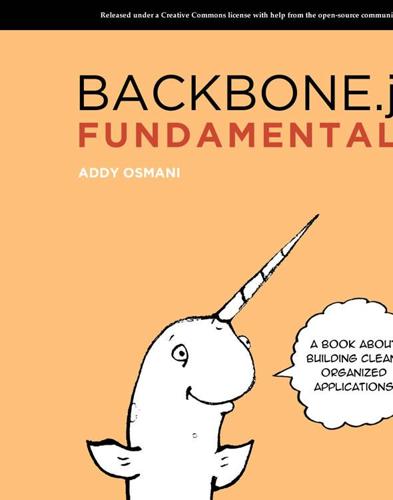
Developing Backbone.js Applications
by
Addy Osmani
Published 21 Jul 2012
Backbone doesn’t force usage of all of its components and can work with only those needed Used by Disqus Disqus chose Backbone.js to power the latest version of its commenting widget. The Disqus team felt it was the right choice for their distributed web app, given Backbone’s small footprint and ease of extensibility. Khan Academy Offering a web app that aims to provide free world-class education to anyone anywhere, Khan Academy uses Backbone to keep its frontend code both modular and organized. MetaLab MetaLab created Flow, a task management app for teams using Backbone. Its workspace uses Backbone to create task views, activities, accounts, tags and more. Walmart Mobile Walmart chose Backbone to power its mobile web applications, creating two new extension frameworks in the process - Thorax and Lumbar.
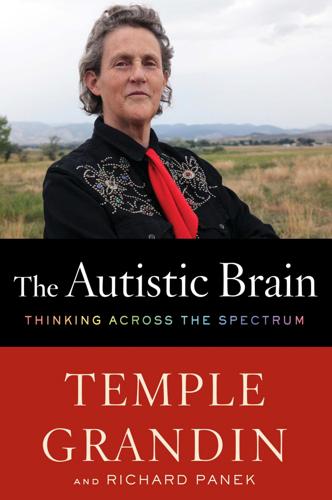
The Autistic Brain: Thinking Across the Spectrum
by
Temple Grandin
and
Richard Panek
Published 15 Feb 2013
These days you can get a whole education online. Numerous websites and high-tech tools that offer amazing opportunities have cropped up. The names and aims of these sites will undoubtedly change over the years, but at the moment here are some of my favorite educational accessories that are perfect for some autistic brains. Free videos. Khan Academy offers hundreds if not thousands of educational videos and interactive graphics in dozens of categories. You’re a pattern thinker who wants to know more about computer programming? Try the code-writing-for-animation category. You’re a picture thinker? Browse the hundreds of art history videos that cover historical movements, geographical specialties, and individual artists and artworks.
…
See also tablets (computer), advantages of Irlen, Helen, [>] Jackson, Mick, [>] Jobs, Steve, [>], [>] Journal of Autism and Developmental Disorders, [>] Journal of Orthomolecular Psychiatry, [>] junk DNA, [>]–[>] Kanner, Leo, [>]–[>], [>], [>], [>] Kanner’s syndrome (infantile autism), [>] Khan Academy, [>]–[>] Klúver, Heinrich, [>] Kozhevnikov, Maria, [>]–[>] “label-locked thinking,” [>]–[>] being “on the spectrum” and, [>]–[>] DSM definitions of autism and, [>]–[>] individual differences and, [>]–[>] negative effects of, [>]–[>], [>] value of labels and, [>] Lancet (journal), [>] Lane, Alison, [>]–[>] Langdell, Tim, [>] language disorders.

Like, Comment, Subscribe: Inside YouTube's Chaotic Rise to World Domination
by
Mark Bergen
Published 5 Sep 2022
Walk took a break from YouTube in early 2011, after a painful repetitive strain injury to his wrists, and he returned that fall with a half-baked idea: “YouTube for Good”—a patchwork initiative to improve features for activists, nonprofits, and schools. Most school districts blocked YouTube, wary of its internet free-for-all. But educational videos were blossoming: the Green brothers had their shows, and Salman Khan, a hedge fund analyst, had started uploading mathematics lessons as the Khan Academy channel, part of a Silicon Valley wave devoted to upending higher education. So Walk led an effort to give these creators a name (EduTubers), tools, and attention. He lobbied schools and politicians on YouTube’s benefits for students. If schools let YouTube in, the company reasoned, more quality kids’ material could flourish.
…
Reading a book Going to the gym Watching television Watching YouTube YouTube wasn’t TV; it couldn’t give Nutritious videos a prime-time slot. Instead, Walk proposed assigning them a “goodness score,” granting educational footage from creators like Khan Academy and the Green brothers more weight in YouTube’s search and discovery system. In meetings and internal correspondence YouTube referred to this as adding “broccoli” to the site (or sometimes “chocolate-covered broccoli”). Some drafted broccoli OKRs. The Torso division, which managed its ever-sprawling creator class, drew plans to get 30 percent of watch time from Nutritious videos.
…
See also ISIS Israel, 141 J Jackson, Michael, 138 Jezebel, 75 Jho, Harry and advertising on channel, 173 on algorithms of YouTube, 394–95 and animated videos, 241 and “bad baby” as search term, 307 and competing content, 167, 169, 173–74, 239–40 income from channel, 173, 394 and Mother Goose Club, 166–67, 173–74, 239 support from YouTube, 166, 167 Jho, Sona, 166, 167, 239, 307, 394 Jobs, Steve, 56, 146, 176 joeB, 33 Johnson, Ray William, 119–20, 121, 185 Johnston, Kirsty, 1, 358 joke, threat, obvious mantra, 209–10 Jones, Alex, 235–36, 267, 273, 325, 367 Justin.tv, 78 K Kaji, Loann, 237 Kaji, Ryan, 237–38, 240, 306, 395–96 Kaji, Shion, 237–38 Kamangar, Salar and channels model, 127, 128 egalitarianism prioritized by, 164 and free-speech decisions, 143 and Google+, 178 and Google’s acquisition of YouTube, 51 and iPhone app for YouTube, 176 leadership at YouTube, 125–26, 150, 201–2, 211 and linking to videos outside of YouTube, 108 and music service of Google, 177 and Page, 150 and playground equipment at offices, 148 and production studio proposal, 201 and profitability of YouTube, 93–94 retirement of, 203 at VidCon, 139–40 Karim, Jawed background of, 20 and copyright concerns, 25 creation of YouTube, 15, 16–17, 21–22, 26 on current challenges of YouTube, 389 departure of, 26 and Google+ accounts, 179 and Google’s acquisition of YouTube, 55 and motto of YouTube, 22–23 Katz, Scott, 112, 113–14 Kavanaugh, Lance, 144 Kay, Olga, 248–50, 254–55, 256–57 Keane, Patrick, 75, 199 The Key of Awesome, 88 keyword stuffing, 308–9 Khan Academy, 170, 175 kidfluencers, 395 Kidvid rules, 168 Kinder Eggs, 171, 173 King, David, 62–63, 91–92 King, Rodney, 61 The King of Content (Hagey), 61 Kirkbride, Ivana, 134 Kissinger, Henry, 92 Kjellberg, Felix (PewDiePie) Comedy Central show offered to, 274 earnings of, 8–9, 220–21, 279 and edgelords, 276 frustration with YouTube, 273–74 and Google’s acquisition of YouTube, 161 and Maker Studios, 219, 274 and origins of PewDiePie, 123 and “Pew News,” 352 relationship with YouTube restored, 8, 371–73 response to scandal, 278, 279–80 on Time’s list of influential people, 274 See also PewDiePie Klein, Erik, 19, 25, 59 Klein, Ethan, 305–6 Klein, Hila, 305 Koli, Prajakta, 369 Krasinski, John, 377 Kravitz, Noah (kravvykrav), 78–79 Kreiz, Ynon, 186 Kyncl, Robert background of, 128–29 as chief business officer, 242 at Creator Summit, 289 and culture of YouTube, 150 on economic impact of YouTube, 391 and grants funding hi-def content, 132–35 and indecision of leadership, 152 leadership style of, 130 media partnerships pursued by, 130–31 on music service, 241–42 and Netflix’s original series, 253 and Next New Networks, 130 and objectives and key results, 151 and PewDiePie scandal, 281 praised by stars of YouTube, 392 and Robbin’s network, 132 Russian goodwill tour (2013), 341 on Wojcicki, 244 and Zappin, 185 L Laatsch, Brandon, 115–16 Larian, Isaac, 240 Las Vegas mass shooting (2017), 310, 326 The Late Show with Stephen Colbert, 97–98, 220 laundry detergent pods, consumption of, 7 “Lazy Sunday” (Saturday Night Live), 33–34, 40, 44, 67 leadership at YouTube and CEO title, 211 Chen’s departure, 90 concerns about stasis, 149, 151 and content for children, 174–75 and costume tradition, 244 goal setting of, 152–53 lack of minorities in, 355 and stars of YouTube, 392 Wojcicki’s ascension, 202, 210–11 work hard, play hard culture of, 150–51 See also Chen, Steve; Hurley, Chad; and other specific individuals, including Wojcicki, Susan “Leanback” feature, 189–90 “Let’s Play” genre, 161–62.
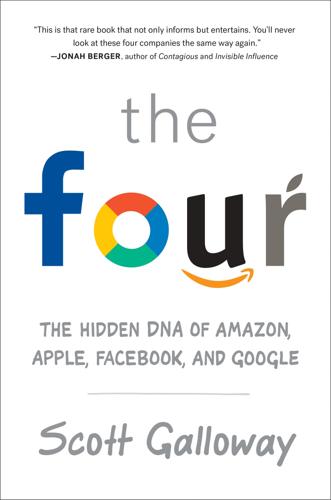
The Four: How Amazon, Apple, Facebook, and Google Divided and Conquered the World
by
Scott Galloway
Published 2 Oct 2017
Eighty-eight percent of kids from U.S. households in the top-income quintile will attend college, and only 8 percent from the lowest. We’re leaving the unremarkable and unwealthy—most people—behind in a civilization that is now more Hunger Games than civil. Apple could change this. With a brand rooted in education, and a cash hoard to purchase Khan Academy’s digital framework as well as physical campuses (the future of education will be a mix of off- and online), Apple could break the cartel that masquerades as a social good but is really a caste system. The focus should be creativity—design, humanities, art, journalism, liberal arts. As the world rushes to STEM, the future belongs to the creative class, who can envision form, function, and people as something more—beautiful and inspiring—with technology as the enabler.
…
If you are good, you are now competing with tens of millions of other “good” candidates all over the planet—and your wages may stagnate or decline. The top dozen professors at Stern are in demand globally and get paid $50,000 or more to speak at a lunch. I’d venture their average annual income is $1 million to $3 million. The rest (“good”) are now competing with Khan Academy and the University of Adelaide (both offer “good,” the former online). These “good” professors teach executive education for modest extra income, or complain about the dean in a primal scream for relevance, as they make a fraction of what their (marginally) better colleagues make. The difference between good and great can be 10 percent or less, but the delta in rewards is closer to 10 times.
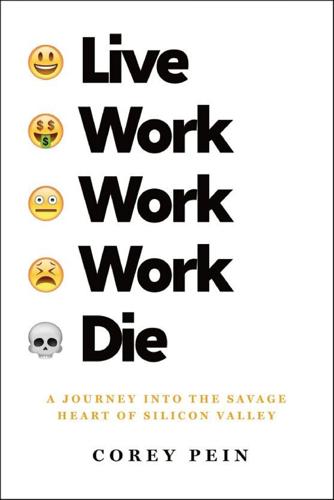
Live Work Work Work Die: A Journey Into the Savage Heart of Silicon Valley
by
Corey Pein
Published 23 Apr 2018
“We’re going after newspapers, we’re going after Madison Avenue, we’re going after book publishing, we’re going after television,” Srinivasan said with undisguised glee, recalling the battering taken by New York media from online competitors such as Google AdWords, Twitter, Blogger, Facebook, and Amazon’s Kindle “e-reading” device. “Boston was next in the gunsights,” he said, with the country’s oldest, most elite educational institutions challenged—albeit less successfully, so far—by startups like Khan Academy, Coursera, and Udacity. “And, most interestingly, D.C.,” Srinivasan continued. By which he meant “government regulation in general—because it’s not just D.C., it includes local and state governments. Uber, Airbnb, Stripe, Square, and the big one, Bitcoin, are all things that threaten D.C.’s power.”
…
IBM Inc. magazine Indelicato, Julie In-Q-Tel Instagram Instant Payday Network Institutional Venture Partners InterDigital, Inc. International Brotherhood of Teamsters iRobot ItsThisForThat.com Jacobstein, Neil Jobs, Steve Johnson, Robert Jordan, David Starr Joyner, Istvan JP Morgan Chase Juno Kalanick, Travis Kaufman, Micha Keeton, Kathy Kelly, Kevin Kenna, Jered Kennedy, Anthony Keurig Khan Academy Khosla, Vinod Kissinger, Henry Kjellberg, Felix. See PewDiePie Klein, Michael Klein, Roxanne Kleiner Perkins Kurzweil, Ray Laborize Land, Nick Lee, Rhoda Lifeboat Foundation Lifehacker Lifograph LinkedIn Lockheed Lockheed Martin Lombardi, Steven Lucas, George Luckey, Palmer Lyft Machine Intelligence Research Institute MacLeod, Ken Marshall, Brad Mason, Andrew McCauley, Raymond MCI Communications Mechanical Turk Meetup.com Mercer, Robert Microsoft Millionaires Society Miner, Bob Mishra, Pankaj Modi, Narendra Moldbug, Mencius.
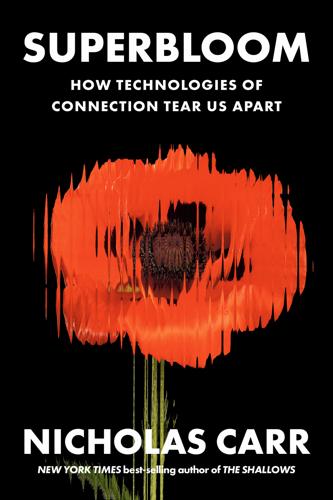
Superbloom: How Technologies of Connection Tear Us Apart
by
Nicholas Carr
Published 28 Jan 2025
As large language models and other forms of generative AI become more broadly used in media and education—to produce content, to give advice, to teach, to console—the way their datasets are constructed and manipulated will influence society and politics in deep, inscrutable ways. They’ll set the terms of discourse for those who depend on them. OpenAI has already collaborated with Khan Academy, the online educational outfit, to create a tutoring bot for kids, and Altman foresees a day when personalized chatbot tutors give “every child a better education than the best, richest, smartest child receives on Earth today.”42 The obvious question is, Who teaches the teacher? The risks of ceding control over public speech to private interests in an age of talking machines was underscored when Elon Musk bought Twitter, renamed it X, and promptly announced that—never mind his fears about AI destroying civilization—he was launching his own large-scale LLM operation called xAI.
…
See also specific companies IQ tests, 212–13 James, William, 100, 159 Janardhan, Santosh, 191 Jarvis, Jeff, 123 Jefferson, Thomas, 75 Jepsen, Thomas, 31 Johnson, Andrew, 32 Johnson, Lyndon, 67, 68 Johnson, Samuel, 229–32 Joinson, Adam, 116–17 Jolson, Al, 45 Jonze, Spike, 192 journalism, 99, 141 Jurgenson, Nathan, 214 Kahneman, Daniel, 100, 134 Kannan, Viji, 171 Kaplan, Joel, 143 KDKA, 37–38 Keats, John, 200 Kern, Stephen, 23 KFKB, 41 Khan Academy, 204 Kim, Hannah, 192 Kinder, Donald, 136 Klemperer, Victor, 139 Klonick, Kate, 73 knowledge, AI and, 184–85 Krasnow, Erwin, 42 Lake Elsinore, California, 2 language, 18–19, 100. See also large language models (LLMs); writing large language models (LLMs), 181–85, 190–91, 195, 201–5, 225, 230.

The Fourth Revolution: The Global Race to Reinvent the State
by
John Micklethwait
and
Adrian Wooldridge
Published 14 May 2014
In 2004 Salman Khan made a series of videos and posted them on YouTube to help tutor his extended family. The videos soon acquired millions of fans (including Bill and Melinda Gates, who used them to tutor their own children): Khan is an excellent tutor and you can stop and rewind the videos if you want to go over the material again. The Khan Academy now serves more than four million students a month, ranging from the children of billionaires to the children of day laborers, and provides more than three thousand lessons ranging from simple arithmetic to calculus and finance. Look around the public sector and there are similar opportunities beginning to open up everywhere thanks to technology.
…
AARP, 124 absolutism, 32, 43 academies, 212, 214 Adams, John, 249, 250, 251, 254, 261, 269–70 Adonis, Andrew, 131 affirmative action, 79, 88 Africa, Chinese businesses in, 152 African National Congress, 254 agriculture: in emerging world, 238 subsidies for, 185, 237–38 Agriculture Department, U.S., 108, 237–39 airports, privatization of, 235 Ai Weiwei, 34 Alton Locke (Kingsley), 58 American Federation of State, County and Municipal Employees, 114 American Medical Association, 204 American Revolution, 6–7, 44, 45, 46, 264 Amtrak, 235 Anderson, Chris, 191 Antholis, Bill, 218 Arab League, 253 Arab Spring, 144 Aravind Eye Care System, 203, 204 Archer Daniels Midland, 238 Argentina, economy of, 120 Army, U.S., 182 Arnold, Matthew, 58 Asia: aging population of, 165 economic crisis of 1997 in, 142–43 pensions in, 141–42 in sixteenth and seventeenth centuries, 34–36 Asquith, Herbert, 61 Australia: civil service in, 215 overlapping areas of government responsibility in, 108 “Austrian school,” 83 automobile industry, 189, 190, 191 Bagehot, Walter, 128 Balázs, Étienne, 40 Balcerowicz, Leszek, 96 ballot initiatives, 127 Bangalore, India, 201, 218 Bank of England, 43 Barboza, David, 162 Bartlett, Bruce, 121 Baruch, Bernard, 233 “basic minimum,” 87 Baumol, William, 19, 110, 178–79, 187, 222 Baumol’s disease, 19, 109–11, 174, 178–79, 183, 222 Becker, George, 84 Beijing, 34–35 Belgium, 228 Bell, Daniel, 157 Bentham, Jeremy, 49, 57, 85 Berggruen, Nicolas, 124, 129, 131, 159 Berlin, Isaiah, 48, 226, 228 Berlin Wall, 253 Berlusconi, Silvio, 12, 128, 196, 227 Bertelsmann Foundation, 143 Best Party, 261 Bevan, Aneurin, 75 Beveridge, William, 74, 75, 78, 90, 97, 245 Beveridge Report, 74 bike sharing, 216–17, 219 Bildt, Carl, 175 Bill of Rights, English (1689), 43 Bill of Rights, U.S., 226, 250 Bismarck, Otto von, 6, 7, 60, 174–75 Blair, Tony, 96, 194, 262 on small government, 95, 211–14 Bleak House (Dickens), 50 Bloom, Nick, 191 Bloomberg, Michael, 196–97, 217 Bloomberg Businessweek, 129–30 Boao Forum for Asia, 153 Bodin, Jean, 29 Boer War (1899–1902), 61 Böhlmark, Anders, 176 Bolsa Família, 206 Booth, Charles, 66 Boston, Mass., 210 Boston Consulting Group, 172 Boston Tea Party, 240 Bourbon Restoration (1814), 46 Bo Xilai, 154, 218 Brandeis, Louis, 263 Brazil, 13, 18, 96, 153 entitlement reform in, 17, 206 breakaway nations, 260 Bright, John, 56 British Airways, 94 British Gas, 94 British Medical Association, 114 British Rail, 213 British Telecom, 94, 234 Brown, George, 134 Brown, Gordon, 99, 130, 215 Brown, Jerry, 10, 91, 106, 119, 125, 219 fiscal reforms of, 118, 129–30 Brown, Pat, 105–6, 124–25 Buchanan, James, 84, 262 Bureau of Corporations, 72 Bureau of Land Management, 236 Bush, George H.W., 95 Bush, George W., 10, 98, 164, 177, 198, 255, 262 business sector: globalization and, 191, 193 innovation in, 194 productivity in, 18–19 reinvention of, 189–92 technology and, 191 Butler, R.A., 75 California, 105–32 ballot initiatives in, 127 Baumol’s disease and, 109–11 constitution of, 107 deficit in, 118–19 education in, 111 as exemplar of Western state failures, 106–7 fiscal reform in, 129–30 old and well-off as primary beneficiaries of public spending in, 122–23 outdated governmental system of, 107–8 pensions in, 113, 115, 119–20, 130 political polarization in, 124–25 population of, 108 prison system in, 112–13 proliferation of regulation in, 116 Proposition 13 in, 91, 92, 107 public contempt for government in, 106, 112 public-sector unions in, 112–15, 120 special interest groups in, 112–15 taxes in, 116, 129 unfunded liabilities in, 119, 129, 130 California Board of Barbering and Cosmetology, 116 California Correctional Peace Officers Association (CCPOA), 112–13 California Environmental Quality Act (1970), 117 California Public Policy Center, 119 California Teachers Association, 113 Cameron, David, 130–31, 158, 199, 215 Canada, 199 Capio, 171–72 capitalism, 50–54 democracy’s presumed link to, 261–62 inequality and, 262–63 state, see state capitalism as supposedly self-correcting, 70 Capitalism and Freedom (Friedman), 86 Cardoso, Fernando Henrique, 96 Carlino, Gerald, 218 Carlyle, Thomas, 44, 57 Carney, Mark, 215 Carswell, Douglas, 260 Carter, Jimmy, 198 Carville, James, 97 Castiglione, Baldassare, 33 Catholics, 38 Cato Institute, 238 Cavendish, William, 31, 40 Cavendish family, 31, 47 Cawley, James, 204 CCTV cameras, 182, 226 Center on Budget and Policy Priorities, 124 Central Party School, 150, 156 Central Provident Fund, 140 Centre for Policy Studies, 92 centrism, 95, 98 Chamberlain, Joseph, 66 Charles I, King of England, 31 Charles II, King of England, 32, 38, 42 Charlie and the Chocolate Factory (Dahl), 228 charter schools, 212, 214, 215 Chartists, 51, 58 checks and balances system, 226, 250, 255–56, 265 Chidambaram, Palaniappan, 96 Child, Josiah, 39 Childs, Marquis, 169 China, Imperial, 37 bureaucracy of, 37, 40–41 innovation disdained by, 41 in seventeenth century, 34–36 trade with West rejected by, 41 China, People’s Republic of: aging population of, 164, 183 Asian-state model in, 136–37, 145, 149, 152, 156 Communist ideology in, 63, 145 corruption in, 4, 18, 148, 149, 186 Cultural Revolution in, 156 economy of, 3, 146, 163 education in, 147, 148–49, 164 efficiency of government in, 146, 153, 159 elitism in, 161–62 governmental changeover in, 159 health care in, 164 health insurance in, 141, 156 India contrasted with, 146, 153 lack of public confidence in, 13 leadership training in, 105 local government in, 160–61, 217–18 long-term outlook of, 159 mandarin tradition of, 138, 156, 157 meritocracy in, 156–63, 164, 254 pensions in, 156, 183 Singapore as model for, 145 slowing of economic growth in, 164 social-service NGOs in, 158 state capitalism in, 64, 149–56, 234 state-owned enterprises (SOEs) in, 150–52, 154–55 urban population increase in, 149 U.S. contrasted with, 147, 153 Western democracy seen as inefficient by, 145 China Executive Leadership Academy in Pudong (CELAP), 1–5, 18, 145, 153, 156 China Mobile, 151 China Youth Daily, 148 Chongqing, China, 218 Christensen, Clayton, 203 chronic diseases, 183, 200, 204 Internet and, 209 Chua, Amy, 143 Churchill, Winston, 68, 75, 247 cities: population growth in, 149, 218 working relationships between, 218–19 Citizens United decision, 240 Civil War, English, 6, 31, 38, 43 Clark, Joseph, 77 class struggle, 62–63 Clinton, Bill, 10, 95, 96–97, 98, 142, 217 Clinton, Hillary, 162 Coase, Ronald, 84, 229 Cobbett, William, 49 Cobden, Richard, 56 Code for America, 216 Coggan, Philip, 263 Cohen, Jared, 210–11 Cohen, Leonard, 185 cold war, 76, 252 Colloquies on Society (Southey), 224–25 commerce, nation-state and, 33 Committee on Social Thought, 83 Common Sense (Paine), 44 Communist Party, Chinese, 63, 145, 153 elitism in, 161–62 as meritocracy, 156–57 Organization Department of, 151 Communists, communism, 7, 8, 63–64, 71, 77, 134, 137, 145, 225 successes of, 90–91, 252 compassion, 61 “compassionate conservatism,” 98 competitive advantage, 189 Condorcet, Nicolas de, 222 Confederation of Medical Associations in Asia and Oceania, 204 Congo, 22 Congress, U.S., 16, 100, 228 approval ratings of, 11 dysfunction in, 256 lobbies and, 238–40, 257 Congressional Budget Office, 15, 242 Congress Party, India, 162 Conservative Party, British (Tories), 11, 69, 75 conservatives, conservatism, 10 “compassionate,” 98 see also Right Constitution, U.S., 108, 109, 256 Fourteenth Amendment of, 120 Constitution of Liberty, The (Hayek), 92 consumer choice, 191 consumption taxes, 123–24 Corn Laws, 50, 238, 240 corruption, 185–86 crime, Western state and, 181–82 Crimean War, 65 Croly, Herbert, 71 Cromwell, Oliver, 32 Cromwell, Thomas, 6, 37 crony capitalism, 72, 112, 155, 234, 237–38, 246, 269 Cultural Revolution, 156 Czech Republic, 252 Darwin, Charles, 59 Das, Gurcharan, 13 Davies, Mervyn, 215 decentralization, 216–19 defense, spending on, 16 Defense Department, U.S., 20 deficits, deficit spending, 14, 100, 118–22, 177, 231–32, 241 unfunded liabilities and, 119, 232 democracy: in Asian-state model, 17 big government as threat to, 251, 264–69 as central tenet of Western state, 5, 8, 16–17, 22–23, 136, 141, 221 Founding Fathers and, 226, 250, 265 Fourth Revolution and, 249–70 globalization and, 262 imperfections of, 17, 127–28, 141, 143–44, 145, 226–27, 247–48, 251, 269 income inequality and, 263 in India, 136, 146 individual freedom as threatened by, 226, 250–51 nation-states and, 259, 262 presumed link to capitalism of, 261–62 as presumed universal aspiration, 261–62 as rooted in culture, 262 scarcity and, 247–48 self-interest and, 250, 260 short-term vs. long-term benefits in, 260–61, 264 special-interest groups and, 16–17, 111–15, 247, 251 strengths of, 263 twentieth-century triumph of, 252 twenty-first-century failures of, 252–61 uneven history of, 249–50 welfare state as threat to, 22, 142 Democracy in America (Tocqueville), 252 Democracy in Europe (Siedentop), 251 Democratic Party, U.S., 97, 240 spending curb approved by, 12 spending cuts opposed in, 100, 255 Democratic Review, 55 Deng Xiaoping, 142 Singapore as inspiration to, 145 Denmark, 22, 210 disability insurance in, 244 “flexicurity” system in, 173, 176 innovation in, 220 1980s financial crisis in, 176 reinvention of welfare state in, 173–74 Depression, Great, 69–70, 85 Detroit, Mich., 218–19 bankruptcy of, 14, 119 Detter, Dag, 236 Dicey, A.V., 57 Dickens, Charles, 50, 57–58 Dirksen, Everett, 192–93 disability-insurance reform, 244 Discovery Group, 211 discretionary spending, 195 diversity, 214–16 DNA databases, 182 Dodd-Frank Act (2010), 117, 239 Doncaster Prison, 214 Downey, Alan, 177 Drucker, Peter, 198 Dubai, 144, 217 Dukakis, Michael, 95 Dundase family, 49–50 East India Company, 36, 40, 47, 48, 50, 56, 150, 240 Eastman Kodak, 190–91 École Nationale d’Administration, 194 economic-freedom index, 174 Economist, 86, 97 Edison, Thomas, 179 education, 7, 9, 16, 48, 58, 197 charter schools in, 212, 214, 215 in China, 147, 148–49, 164 cost/outcome disparities in, 194–95 declining quality of, 111 diverse models for, 214–15 government domination of, 10 international rankings of, 19, 148, 206–7 preschool, 123 reform of, 58–59, 212 in Sweden, 171, 176–77 technology and, 179–80 voucher systems for, 171, 176–77, 220 in welfare state, 68, 69 Education Act (British, 1944), 75 Egypt, 155 failure of democracy in, 253, 262 Mubarak regime overthrown in, 144, 253 Eisenhower, Dwight, 77 elections, U.S., cost of, 257 electrocardiogram (ECG) machines, 205 elitism, 135, 136, 138–39 in Chinese Communist Party, 161–62 in U.S., 162 welfare state and, 77–78 Emanuel, Rahm, 216 emerging world: agriculture in, 238 as failing to grasp technological change, 18 innovation in, 17 lack of public confidence in, 13 local government in, 217 need for reform in, 14 urban population shift in, 218 “End of History, The” (Fukuyama), 262 Energetically Autonomous Tactical Robot (EATR), 182 Enlightenment, 42 entitlement reform, 95, 217, 234, 241–46 beneficiaries’ responsibilities and, 245 conditionality in, 17, 206, 244 disability insurance and, 244 globalization and, 245 information revolution and, 245 in Latin America, 17, 206, 244 means testing and, 243, 245 transparency and, 244–45 entitlements, 9, 10, 15, 16, 79, 100, 127, 141, 222, 228 aging population and, 124, 183–84, 232, 241–42 middle class and, 11, 17 pensions as, 79, 184, 243 as unfunded liabilities, 245–46, 264, 265 universal benefits in, 124, 141, 243–44 equality: capitalism and, 262–63 liberal state and, 69 of opportunity vs. result, 79, 228 sexual, 169 welfare state and, 68–69, 74, 79, 222 Western state and, 221 Equality (Tawney), 69 Erdogan, Recep Tayyip, 13, 254 Estonia, 121, 210 Euclid, 31, 33 eugenics, 67–68, 78, 169 euro, 99, 100, 258 euro crisis, 12, 100, 126, 130, 258–59 Europe: age of conquest in, 36–37, 39 compulsory sterilization in, 78 contest for secular supremacy in, 38–39 democracy’s failures in, 258–59 dysfunctional political systems in, 126 economic crisis in, 126 Enlightenment in, 42 government bloat in, 98–99 mercantilist policies in, 40 national consolidation in, 38–39 old-age dependency ratio in, 14–15 postwar era in, 78 public spending in, 99–100 revolutions of 1848 in, 54 technocratic bent in, 76–77, 259 transnational cooperation in, 76 wars of religion in, 34, 38 welfare state in, 75 European Atomic Energy Community, 76 European Central Bank, 258–59 European Coal and Steel Community, 76 European Commission, 254 European Economic Community, 76 European parliament, 258 European Union, 13, 16, 17, 76, 99, 108, 109, 258–59, 260 Extraordinary Black Book, The (Wade), 49 Exxon, 154 Fabians, 8, 21, 67, 72, 73, 96, 134, 169, 220 Facebook, 190–91 Falklands War, 94 Farrell, Diana, 132 fascism, 8, 71, 77, 252 Fatal Conceit: Errors of Socialism, The (Hayek), 134 Federal Communications Commission, 73 Federalist Papers, 5, 265 Federal Register, 117 Ferdinand II, King of Aragon, 37 filibusters, 256 financial crisis of 2007–8, 100, 164, 263 financial-services industry, 239 Finer, Samuel, 27, 276 Finland, 210 innovation in, 220 1990s financial crisis in, 176 fiscal crisis, as incentive for change, 198 Fisher, Antony, 81–82, 90, 92, 280 “flexicurity,” 173, 176 Ford, Henry, 189, 191, 201 fossil fuels, government subsidies for, 239 Foster, William, 58 Founding Fathers, 108 democracy and, 226, 250, 265 liberal state and, 44–45, 222 Fourteenth Amendment, 120 Fourth Revolution, 5 Asian-state competition as impetus for, 17, 163–64, 247 decentralization and, 216–19 democratic reform and, 249–70 diversity and, 214–16 entitlement reform and, see entitlement reform failure of current model as impetus for, 14–17 freedom and, 247, 248, 268, 270 government efficiency in, 233 ideological foundation of, 21, 28, 221–23, 232 information revolution and, 245, 246–47 infrastructure and, 232 innovation and, 219–20 monetary and fiscal reform in, 266–67 pluralism in, 211–14 as postbureaucratic, 211 pragmatism and, 18–19, 232–33 privatization and, 234–37 security and, 232 small government as principle of, 232, 264–69 subsidy-cutting and, 237–41 technology and, 18, 19–20, 233, 266–67 France, 43, 78 deficit spending in, 14 expanded bureaucracy in, 60 government bloat in, 12 pension age in, 16 public spending in, 75, 99–100 ruling elite of, 194 state capitalism in, 235 Francis I, King of France, 37 Fraser Institute, 174 fraternity, welfare state and, 74, 79 Frederick the Great, King of Prussia, 38 freedom: balance between security and, 230–31 as central tenet of Western state, 8, 23, 46, 68–69, 222, 256 core elements of, 223–24 democracy as threat to, 226, 250–51 diminished concept of, 225–27, 228–29 Fourth Revolution and, 247, 248, 268, 270 Hobbes and, 33 as ideological basis of liberal state, 69, 223–26 Mill and, 47–48, 55, 222, 224, 228, 250, 256, 268 necessary constraints on, 223 welfare state as threat to, 22, 74, 222, 265 see also rights Freedom House, 143, 252 free markets, 49, 59, 142 Friedman as evangelist for, 84, 86 Thatcher and, 93 free trade, 50, 54, 57 Mill’s espousal of, 55 French Revolution, 6, 44, 45–46, 249 Friedman, Milton, 81–87, 89, 93, 106, 128, 171, 280 background of, 82 big government as target of, 82, 84–85, 88 as free-market evangelist, 84, 86 Nobel Prize of, 82, 86, 91 Reagan and, 86 “Road to Hell” lecture of, 84 single currency opposed by, 99 Thatcher-Reagan revolution and, 8, 28, 97, 100 Friedman, Thomas, 163 Friedrich, Carl, 265 Fukuyama, Francis, 142, 143, 256, 262 Future of Freedom, The (Zakaria), 143 G20 countries, 15 Galbraith, John Kenneth, 85, 86 Galtieri, Leopoldo, 94 Galton, Francis, 68 Gardels, Nathan, 124 Gaskell, Elizabeth, 57 Gates, Bill, 97 Gazprom, 152, 153, 154 Geely, 150 General Electric (GE), 205, 243 General Motors (GM), 189, 190, 191, 233 General Theory of Employment, Interest and Money, The (Keynes), 70 Geometry (Euclid), 31 George III, King of England, 11, 41 Germany, Federal Republic of (West Germany), 75, 78, 232, 265 Germany, Imperial, 6, 60–61 Germany, Nazi, 71, 232 Germany, unified, 12, 22, 173, 186, 212 gerrymandering, 13, 106, 113, 125, 256–57, 264, 267 see also rotten boroughs Gillray, James, 227 Gladstone, William, 7 economizing by, 51–52, 224 small government as principle of, 51–52, 60 tax policy of, 51 globalization, 10, 191, 193 democracy and, 262 entitlement reform and, 245 government and, 10, 96, 200–207 health care and, 200–201 national determination and, 259–60, 262 Glorious Revolution (1688), 43 GOATs (Government of All the Talents), 215 Godolphin, Sidney, 31 Golden Dawn party, 259 Goldman Sachs, 120 Goldwater, Barry, 80, 86 Google, 189–90, 191, 233 Gore, Al, 95, 131, 198 government: anti-innovation bias of, 194–95, 212, 219 bloat in, 9–11, 18–19, 89–90, 98, 177, 222–23, 227, 229–30, 231, 233 centralization bias of, 192–93, 212, 216 challenges to reform in, 196–98 coercive power of, 198 efficiency of, 18–21, 37, 89, 187, 198–99, 213, 233, 247, 255 entrenched workforce of, 193–94 globalization and, 200–207 in-house bias of, 192, 212 local, 216–19, 267 public contempt for, 106, 112, 227–28, 230, 233, 251, 261 sunset clauses and, 118, 246, 266 technology and, 200, 207–11 uniformity bias of, 193–94, 212, 214 volunteerism and, 216 Government Accountability Office, 235 Grace Commission, 198 Gray, Vincent, 210 Great Britain: asylum seekers in, 54 as capitalist state, 50–54 commercial empire of, 39–40 deficit of, 177 education reform in, 58–59, 79, 212, 214–15 falling crime rate in, 181 fiscal reform in, 130–31 government bloat in, 89–90 health-care spending in, 90 landed artistocracy of, 48, 49 liberal revolution in, 46 low public confidence in, 11 national pride in, 61–62 patronage vs. meritocracy in, 50, 52–53, 222 postwar era in, 78 power of Anglican Church in, 48 public spending in, 9, 75 wars of, 6 “winter of discontent” in, 93 Great Depression, 69–70, 85 Great Exhibition of 1851, 54 Great Society, 77, 192 Great Western Railway, 65 Greece, 16 economy of, 120, 259 public-sector employees in, 115 public spending in, 99 Green, T.H., 61 Green River Formation, 236 Grenville family, 49–50 Grillo, Beppe, 12, 227 gross domestic product (GDP), unreliability of, 121 Grote, George, 54 Guangdong, China, 217 Gunpowder Plot (1605), 31 Hagel, Chuck, 256 Hall, Joseph, 35 Halsey, A.H., 88 Hamilton, Alexander, 5, 150 Hamilton, James, 120 happiness, right to, 48, 49 Hard Times (Dickens), 58 Havel, Václav, 252 Hayek, Friedrich, 10, 83, 85–86, 92, 93, 134, 170 Health and Social Security Department, British, 89 health care, 7, 9, 90, 98, 213 aging population and, 15, 183, 242 in China, 164 cost of, 110, 121, 205, 242–43 cost/outcome disparities in, 195 globalization and, 200–201 government domination of, 10 in India, 17, 18, 200–206 labor productivity in, 200 mass production in, 201–3 Obamacare and, 20, 98, 117, 199, 208, 217 role of doctors in, 203–5, 243 single-payer systems in, 205, 233, 243 special interest groups and, 200 in Sweden, 171–73 technology and, 183, 208–9 healthcare.gov, 199 health insurance, 141 health registries, 172, 183, 209 Heath, Edward, 92–93 Hegel, G.W.F., 45, 60–61 71 Helsinki, 220 Heritage Foundation, 92 Hewlett, Bill, 105 Higgins, David, 215 Hilton, Steve, 132 History of the Peloponnesian War (Thucydides), 250 Hitler, Adolf, 71 Hobbes, Thomas, 6, 8, 9, 21, 27–28, 29, 40, 44, 63, 135–36, 181, 219, 268 background of, 30–31 as controversial thinker, 31–32 on human nature, 29–30, 44–45 individual liberty and, 33 as materialist, 33 as royalist, 6, 18, 31–32 social contract and, 32, 34, 42, 222 Hogarth, William, 227 Hollande, François, 12, 16, 153, 184, 194 Holocaust, 78 Homestead Act (U.S., 1862), 62 House of Cards (TV show), 227 House of Commons, 127 House of Representatives, U.S., 97, 127 Howard, Philip, 118, 132, 195 Hu Jintao, 2 Huldai, Ron, 216 Hume, David, 43 Hungary, 254 Huntington, Samuel, 41–42 Hurun Report, 161 Iceland, 261 India, 8, 35, 36 China contrasted with, 146, 153 democracy in, 136, 146 economic stagnation in, 147 education in, 147 health care in, 17, 18, 200–206 infant mortality rate in, 201 lack of public confidence in, 13 local government in, 217–18 nepotism in, 162–63 Thatcherite reform in, 96 as weak state, 37 Indonesia, 142–43 health insurance in, 141 industry, landed aristocracy as opponent of, 48 Industry and Trade (Marshall), 233 information, access to, 210–11, 214 information revolution, 245, 246–47 information technology (IT), 18, 19–20 infrastructure: Fourth Revolution and, 232 spending on, 122, 232 innovation, 219–20 in business sector, 194 government bias against, 194–95, 212, 219 nation-state and, 37, 39 Institute for Energy Research, 236 Institute of Economic Affairs, 82, 92 Institute of Medicine, 204 Institute of Racial Biology, 78 interest groups, 16–17, 90, 111–15 Interior Department, U.S., 236 International Monetary Fund (IMF), 15, 76, 90 Asian financial crisis and, 142–43 Internet, 191, 260 health care and, 208–9 self-help and, 209 Iran, China and, 152 Iraq, 253 Iraq War, 143, 253 Ireland, 38 public spending in, 99–100 Isabella I, Queen of Castile, 37 Islamic world: antiscientific attitudes in, 41 in sixteenth and seventeenth centuries, 35 Istanbul, 35 Italy, 196, 259 pension reform in, 130 politicians’ pay and benefits in, 115 public spending in, 99–100 voter apathy in, 12 It’s Even Worse Than It Looks (Mann and Ornstein), 125–26, 227 Jackson, Andrew, 55 Jacques, Martin, 163 Jagger, Mick, 90 James I, King of England, 31 James II, King of England, 43 Japan, 15, 17, 36 Jarvis, Howard, 91 Jay, Douglas, 77 Jiang Jiemin, 154 Jiang Zemin, 142 Johnson, Boris, 216–17 Johnson, Lyndon, 77, 80, 87 Joseph, Keith, 92, 93 Juncker, Jean-Claude, 128 Kamarck, Elaine, 131–32 Kangxi, Emperor of China, 40 Kansas, 130 Kant, Immanuel, 224 Kaplan, Robert, 144 Kapoor, Anish, 34 Kennedy, Joseph, 73 Kentucky Fried Chicken, 185 Kerry, John, 96 Keynes, John Maynard, 22, 69–70, 76, 97 pragmatism of, 70–71 Keynesianism, 71, 77, 83, 95 counterrevolution against, 82–84 Khan, Salman, 180 Khan Academy, 180 King, Martin Luther, Jr., 79 Kingsley, Charles, 58 Kirk, Russell, 85 Kissinger, Henry, 133, 136 Kleiner, Morris, 118 Knight, Frank, 84 Knowledge Is Power Program (KIPP), 215 Kocher, Robert, 200 Kotlikoff, Laurence J., 120 Kristol, Irving, 87 Kroc, Ray, 185 Labour Party, British, 68, 69, 70, 77, 93, 94–95, 114 laissez-faire economics, 56, 57, 61, 65–66, 70, 71 Laski, Harold, 68, 134 Latin America: economies of, 8 entitlement reform in, 17, 206, 244 Lazzarini, Sergio, 153 Lee Hsien Loong, 135, 138 Lee Kuan Yew, 4, 17, 53, 133–34, 137, 139–41, 143, 144, 145, 147, 156, 170, 183, 244 authoritarianism of, 137, 138 small-government ideology of, 140, 165 Left, 62, 73, 88, 183 government bloat and, 10–11, 98 government efficiency and, 20, 187, 213 and growth of big government, 10, 98, 131, 175, 185, 228, 230, 231 subsidy-cutting and, 234, 237–38 Lehman Brothers, 14 Lenovo, 150 Le Pen, Marine, 259 Le Roy, Louis, 276 Leviathan, 10 Leviathan (Hobbes), 29, 32, 33, 34, 42 Leviathan, Monumenta 2011 (Kapoor), 34 Liberal Party, British, 68, 70 liberals, liberalism: and debate over size of government, 48, 49, 232 freedom as core tenet of, 69, 223–26, 232 right to happiness as tenet of, 48, 49 role of state as seen by, 21–22, 222–23, 226, 232 see also Left; liberal state liberal state, 6–7, 8, 220, 221 capitalism and, 50–54 competition and, 247 education in, 7, 48, 58–59 equality and, 69 expanded role of government in, 56–62 Founding Fathers and, 44–45, 222 freedom as ideological basis of, 69, 223–26, 232, 268 industrial revolution and, 246–47 meritocracy as principle of, 50, 52–53 protection of rights as primary role of, 45 rights of citizens expanded by, 7, 9, 48, 49, 51 rise of, 27–28, 269 small government as principle of, 48, 49, 51–52, 61, 232 libertarian Right, 82 liberty, see freedom Libya, 253 LifeSpring Hospitals, 202–3 Lincoln, Abraham, 62, 92 Lindahl, Mikael, 176 Lindgren, Astrid, 170 Lisbon, Treaty of (2007), 258 Little Dorrit (Dickens), 50 Liu Xiaobo, 166 Livingston, Ken, 217 Lloyd George, David, 62 lobbies, Congress and, 238–40, 257 Locke, John, 42, 43, 45 social contract and, 42, 222 Logic of Collective Action, The (Olson), 111 London School of Economics, 67, 74 Louis XIV, King of France, 38 Lowe, Robert, 58–59 L.
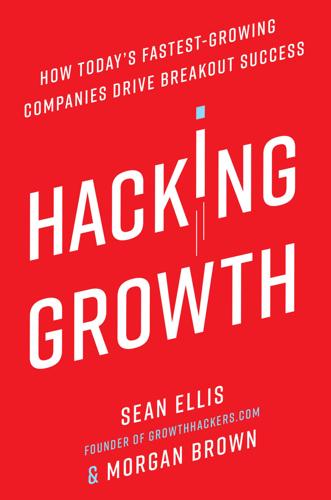
Hacking Growth: How Today's Fastest-Growing Companies Drive Breakout Success
by
Sean Ellis
and
Morgan Brown
Published 24 Apr 2017
LinkedIn gamifies in a gentle fashion, including a progress meter on people’s profile pages that shows them how complete their profiles are, nudging them to fill in more information. This offers the reward of the instant satisfaction of a completed profile, and receiving the implicit approval by those who view it. Khan Academy, an online education website, takes the more overt approach of offering points and awards as users take more courses, creating surprise and delight with rewards as users hit new milestones. The company is careful, though, not to make these the centerpiece of its user experience, as they are aware that such explicit rewards can undermine the actual intrinsic reward of skills acquisition that is offered by learning.
…
Jackson, The PayPal Wars: Battles with eBay, the Media, the Mafia, and the Rest of Planet Earth (WND Books: 2012), 35–40. 5. Josh Elman, “3 Growth Hacks: The Secrets to Driving Massive User Growth,” filmed August 2013; posted on YouTube August 2013, youtube.com/watch?v=AaMqCWOfA1o. 6. “Conversation with Elon Musk,” online video clip, Khan Academy, April 17, 2013. Accessed September 13, 2016. 7. LeanStartup.co, “Dropbox @ Startup Lessons Learned Conference 2010,” July 2, 2014, youtube.com/watch?v=y9hg-mUx8sE. 8. Douglas MacMillan, “Chasing Facebook’s Next Billion Users,” Bloomberg.com, July 26, 2012, bloomberg.com/news/articles/2012-07-25/chasing-facebooks-next-billion-users. 9.
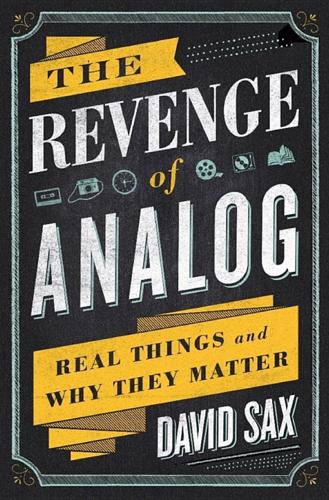
The Revenge of Analog: Real Things and Why They Matter
by
David Sax
Published 8 Nov 2016
Schram had encouraged wild and imaginative ideas, and these included an MBA that consisted only of internships and online classes, an international MBA Olympiad, round-the-clock online faculty-on-demand, and the Flaming Sword, a choose-your-own-adventure video game that automatically selected a student’s courses. All the proposals dispensed with the traditional framework of Rotman as a physical school with classrooms, professors, and classes five days a week. “We’re not going to waste your time in lectures,” said one of the students from the group Designed Sealed Delivered. “It will be like the Khan Academy,” he added, referring to the popular online mathematics lecture series. After all, they were building the school of the future, and as Christopher Federico mentioned the last time I was in this very building, virtual schools seemed to be that future. But when the groups presented their prototypes to current MBA students, that future didn’t look so certain.
…
91 Hill, Jon, 114 Hirschfeld, James, 44–45 HMV, 13, 16 Hoarders, 97 hobby game market, 77 hobby stores, 78, 79, 85 Holley, Willie, 160 Hollywood Reporter (magazine), 72 home libraries, 128, 208, 227 Houstonia (magazine), 109 HP computers, 65 Huffington Post, 115 Huizar, Jose, 185 human assistance, preference for, 134 human-in-the-loop processes, 224 Hungry Hungry Hippos, 76 Husni, Samir, 104–105 hypercapitalism, 157 IBM computers, 65 ICQ, 217 IdeaPaint, 191 IDEO, 193, 225 Ilford film, 55, 71 I’m the Boss, 86 Impossible Project, 66, 67–70 In Wilderness Is the Preservation of the World (Thoreau), 232 independent booksellers increase in, 125 See also bookstores independent magazine publishing, 103–107 independent record stores, annual meeting of, 13 See also record stores Indigo, 127 information age, 219 information overload, 37, 111 information persistence, 191 Initiative, 108 innovation building blocks for, buzzwords in, 192 culture of, fostering, 214 deeply held values around technology and, 179 different narrative of, xvi driver of, 36 standard narrative of, trend running counter to, xiv, 155 Instacart, 166 Instagram, 62, 80, 94, 162, 170, 217, 224, 234, 235, 241 instant film photography, xv, 66, 67, 69–70 Instax camera, 70 integrative thinking, 175, 176–177, 197, 199 Intel, 163 Internet/web access to, in education, 183, 185 growing use of, economy based on, 152, 154 role in saving vinyl, 11–12, 20–21 at summer camp, 231, 235 trust and, challenge of, 145–146 view of, 46, 238 See also online entries investing, 170–172 iPads, 13, 42, 81, 84, 110, 111, 113, 132, 180, 182, 185–186, 188, 208, 234, 241 iPhone, ix, xiii, 62, 63, 73, 84, 140, 144 iPods, 7, 9, 12, 18, 19, 27, 28, 233 IRL, 237 See also reality iTunes, ix, 12, 19 Jackman School, 187–188, 203 Jackson, Wanda, 22 Jaipur, 87 job creation, 151, 152, 160, 161–166, 167, 171–173, 173 job market, 164, 165–166, 175 See also digital work; manual work Jobs, Steve, 138, 139, 206, 207–208 Johnson, Jeff, 182 Johnson, Ron, 139, 140 jukeboxes, 8, 9, 18 June Records, ix, xi–xii, 137 Kalanick, Travis, 155 Kaps, Florian “Doc,” 66–68, 69 Kartsotis, Tom, 150–151, 160, 167, 169, 172 Kassem, Chad, 17 Katigbak, Everett, 214, 215–216 Kaufman, Donna Paz, 127, 128 Kelly, Kevin, 226–230 keyboards, xvii, 186, 237 Keynes, John Maynard, 164 Khan Academy, 200 Kickbox, 208–209 Kickstarter, 43, 73, 91–92, 94, 95–96, 98 Kim, Eurie, 137, 138 Kind of Blue (album), 25 Kindle, 124, 130, 142, 143, 228 Kinfolk (magazine), 105 Kleinman, Gabe, 214 Kobo, 142 Kodak, 54, 55, 56, 57, 59, 63, 64, 71, 153 Kroger, 134 Krugman, Paul, 171 Kurtz, Michael, 13–14, 15, 16, 20 Kwizniac, 91 laboratory school, 187–188 Landor Associates, 36 Lanier, Jaron, 157 laptops early childhood education and, 182 in education, learning outcomes and, 183–185, 188, 190 See also computers Launch Monitor (blog), 111 Lazaretto (album), 21 LC-A camera, 59–60 Lechtturm, 43 LEGOs, 182, 198 Lennon, John, 26 Leslie, Jeremy, 104, 106, 111 letterpress cards/invitations, xiv letterpress printing, 44, 215 Levin, Diane, 180–181 Levin, Eric, 14 Levitin, Daniel, 37 Levy, David, ix Lexus and the Olive Tree, The (Friedman), 154 liberal arts programs, 192 Libin, Phil, 222 Lichtenegger, Heinz, 11, 17 Lieu, John, 213 Lim, Sen-Foong, 98 limitless selection, issue with, 130, 134 LinkedIn, 45, 46 Little Brother (magazine), 104–105 Live Action Role Play (LARP) retreat, 82 live performances, xv, 6, 15, 22, 27, 28 Livescribe, 47, 228 Lomographic Society International, 60 Lomography, 59–62, 64, 66, 71 Lonely Typewriter, The (Ackerman), 131 Long Good Read, The (newspaper), 116, 117 Long Tail, The (Anderson), 208 Los Angeles Times (newspaper), 185 Los Angeles Unified School District, 185–186 Lowery, David, 20 Lucas, George, 72 Lululemon, 126–127 luxury approach, 112, 114, 116, 150, 151, 168 MacArthur, Rick, 142 made-in-America approach, 150, 151, 152, 160, 167, 168 Maffé, Carlo Alberto Carnevale, 39, 40 Mag Culture (blog), 104 magazine ads, 108, 109 magazine market, 105–106 magazine publishing, 103–107, 108, 112 magazine subscription service, 103, 106 magazines ability to charge for, 109, 110, 112 circulation of, 104, 105 luxury approach to, 112–113 See also digital publications; print publications Magic cards, 78 Magnetic, 108 magnetic tape, 23, 24, 25, 72 mah-jongg, 82 manual work classic educational model for, 199 investing in, 172 skilled, manufacturing providing, 150, 151, 152, 157–158, 159–161, 167, 168, 169 standard narrative on, 154, 155, 160 value gap involving, 160, 161, 171 Mara, Chris, 24–25 Marazza, Antonio, 35–36 market logic/laws, 132–133, 140 See also capitalism Martin, Penny, 112 Matsudaira, Kate, 43 Mattel, 85 Mazzucca, Daren, 111 McAfee, Andrew, 162, 163 McAlister, Matt, 116–117 McBeth, Leslie, 198–199 McCartney, Paul, 26 MCIR (magazine), 106 McNally, Sarah, 129 McNally Jackson, 129, 148 McNally Robinson, 129 McNeish, Joanne, 188–189 Medina, Allison, 132 meditation, xv, 205–206, 207, 209–210, 210 Medium, 208, 213–214 meetings, improving, 219–220 Meetup, 220 merchandising appeal, 131–132 merchandising tactics, 133 Michaels, Mark, 9–10, 16 microphones, 83 Microsoft, 43, 154, 163, 206, 211 Microtouch, 190–191 Millar, Jay, 6, 7–8 Mille Bornes, 78 millennials, xii Milton Bradley, 76, 92 mindfulness, xv, 206, 207 Minecraft (game), 81 Mitchell, Jenny, 97 Mittelstein apprentice system, 160 Mod Notebooks, 43 Modo & Modo, 32, 33, 34 Mohawk Paper, 46 Moleskine (company), 31–32, 38, 39, 40, 41–43, 46, 47, 48–49 Moleskine notebooks appeal of, 31, 34–35, 36, 38, 39, 40, 43, 49, 111, 228 branding of, 35–36, 39, 40, 41, 48 buyers of, change in, 36–37 history of, 33–34 integration of, with digital companies, 46, 47–48, 222–223 and the notebook market, 31, 41, 43–44 sales of, 39, 41, 48, 223 Moleskinerie (blog), 38 Monocle (magazine), 112–113 monopolies, 162–163 Monopoly, 76, 77, 78, 86, 88–89 Montessori school, 208 MOO (Pleasure Cards), 45–46 MOOC (massive open online course), 201–202, 203 Moore’s Law, 225 Moross, Richard, 45, 46 motion picture film, 52, 53, 55, 56, 71–73 Motown, 6 Mousetrap, 76 movie sets and props, 72 MP3s, xvi, 7, 9, 12, 19, 23, 143, 231, 242 Mraz, Jason, 15 multiplayer gaming, massive, 77, 80–81, 83 Munchkin, 85 Murchison, Mike, 227 Muscle Shoals, 25 music, evolution of technology used to listen to, xv–xvi See also digital music; live performances; record stores; recording studios; vinyl records MusicWatch, 12, 18 Musk, Elon, 155 MySpace, 217 Nadaraja, Nish, 217, 218 Nakamura, Yoshitaka, 70 Napster, x, 12 National Bureau of Economic Research, 192 NBA Jam (game), 80 Negroponte, Nicholas, 184 neoliberalism, 153 nerd/geek culture, 14, 78, 84–85, 94, 211 Netflix, 223 Netscape, 154 New 55, 70 New York Times Magazine, 238 New York Times (newspaper), 92, 108, 110, 114–115, 136, 151, 154, 171 New Yorker (magazine), 89 NewBilt Machinery, 17 News Corp, 186 Newspaper Club, 117–120, 121 newspaper-printing plants, 117, 119–120 newspapers appeal of, 114–155, 238, 239 custom, 116, 117–120 decline of, 117, 120 integrating digital and new business models for, 116–120 online versions of, 114, 115–116 See also print publications Nicholson, Scott, 82–83 Nielsen BookScan, 142 Night (Wiesel), 130 1989 (album), 6, 18, 27, 69 nineteenth-and twentieth-century model of education, 198–199 Nintendo, 76 Noah, David, 189–190 Nolan, Christopher, 71, 72 Nook, 142, 143 Nordstrom, 44, 137, 150 Norvig, Peter, 201 nostalgia, xii, xvii, 18, 44, 46, 62, 85, 189, 221, 238, 239 notebook market, 34, 41, 43–44, 48 notebooks/journals, 31, 34, 37, 41, 43–44, 49, 72, 104, 126, 142, 149, 207, 208, 218 See also Evernote; Moleskine notebooks Observer, The (newspaper), 116 obsolescence, xiv, xv, 12, 21, 44, 153, 187 offshoring, 156, 163, 165, 167, 168 omnichannel retail strategy, 126, 134 on-demand freelance work, 164, 165–166 on-demand printing of card games, 91 of newspapers, 117 of photos, 70 One Laptop per Child (OLPC), 184, 185 O’Neal, Johnny, 85 online communities, 38, 47, 60–61, 91, 96, 146, 215, 217–218, 218, 226 See also social media/networks online education, 176, 200–202 online gaming, 76–77, 80–81, 82, 83, 94 online retailing appeal of, 124 creating brick-and-mortar stores in, xv, 137–140, 208 disadvantages of, 132, 136 See also specific retailers online schools.
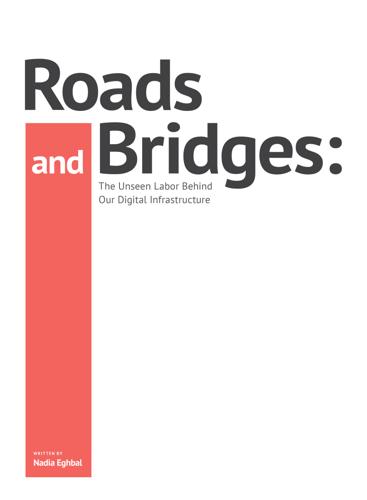
Roads and Bridges
by
Nadia Eghbal
Thankfully the jQuery project is running quite smoothly these days, allowing me to scale back my involvement to a more-reasonable amount of time and take on other development work. [141] After using his time at Mozilla to get jQuery the organizational support it needed, John announced he would join Khan Academy to focus on new projects outside of jQuery. Cory Benfield, a Python developer, has a similar story. Cory contributed to open source projects in his spare time, eventually becoming a core developer for a critical Python library called Requests. Benfield notes: This library is up there with Django in terms of being “critical infrastructure” for Python developers, and yet before I came on to [sic] the project was essentially maintained by a single individual. [142] Benfield estimates that he volunteered on the project roughly 12 hours per week for nearly four years, in addition to his full-time job. [143] Nobody was paid to work on Requests.

Rise of the Robots: Technology and the Threat of a Jobless Future
by
Martin Ford
Published 4 May 2015
Students as young as ten and as old as seventy signed up to learn the basics of AI directly from two of the field’s preeminent researchers—an extraordinary opportunity previously available only to about 200 Stanford students.6 The ten-week course was divided into short segments lasting just a few minutes and modeled roughly on the enormously successful videos for middle and high school students created by the Khan Academy. I completed several units of the class myself and found the format to be a powerful and engaging learning vehicle. The production employed no visual wizardry; instead, it consisted primarily of either Thrun or Norvig presenting topics while writing on a notepad. Each brief segment was followed by an interactive quiz—a technique that virtually guarantees that key concepts are assimilated as you proceed through the course.
…
(television program), Watson and, xiv, 96–101, 104 job creation, xi by decade, 44 diminishing, 43–44 following Great Recession, 280 information technology and, 176 Internet companies vs. automotive industry and, 76 keeping pace with population growth, 26, 44, 249 jobless recoveries, 44–46, 52, 280 job-market polarization, 50–51, 53 jobs disappearance of middle-class, 49 low-wage, 26–27 part-time, 49–51 purchasing power and, xvii, 197 reshoring and manufacturing, 8–12 See also employment; knowledge-based jobs; white-collar jobs Jobs, Steve, 161 Johns Hopkins, 133 Johnson, Lyndon, 29, 31, 32–33, 258 Jones, Charles I., 265, 266 Joy, Bill, 243–244 Kaiser Health News, 164 Kaku, Michio, 247 Karabarbounis, Loukas, 41 Kasparov, Garry, xiv, 97, 122, 239 Kennedy, John F., 249–250, 280 Kerala sardine fisherman, mobile phones and, 78–79 Keynes, John Maynard, 38, 206 Khan Academy, 132–133 Khoshnevis, Behrokh, 180 Kinect, 4–5, 7, 105 King, Martin Luther, Jr., 29–30, 250 kiosks, intelligent, 17–19 Kiva Systems, 16 K’NEX, 5–6 knowledge-based jobs automation of, 85–86 big data and, 93–96 collaboration with machines and, 121–128 See also white-collar jobs Koller, Daphne, 133 Koza, John, 110 Kroger Company, 17 Krueger, Alan, 119 Krugman, Paul, 60, 203–204, 204n, 205 Kuka AG, 10 Kura sushi restaurant chain, 14–15 Kurzweil, Ray, 78, 233, 234–235, 237 labor organized, 57–58 role in economy, 279 share of national income, 38–39, 41, 56, 58 See also workers/workforce Lanier, Jaron, 77 Law, Legislation and Liberty (Hayek), 257–258 law school bubble, 173n LeCun, Yann, 231 legal discovery, trends in, 124–125 Lehman, Betsy, 149 leisure time, basic income guarantee and, 263 Leno, Jay, 177 Levy, Steven, 85 liability autonomous cars and, 183–184, 186, 190 health care, 150, 150n Lickel, Charles, 96 The Lights in the Tunnel (Ford), xiii, 60, 264 Lipson, Hod, 108, 109, 110, 180 liquidity trap, 218n London Symphony Orchestra, 111 London taxi drivers, 209n long-tail distribution, in Internet sector, 76–78 long-term unemployment, ix, xvi, 45–46, 211, 280 Los Angeles Angels, 83 low-wage jobs, automation and, 26–27 Luddites, 31, 33, 256 machine essay grading, 129–131 machine intelligence, 72, 75, 80.

Frenemies: The Epic Disruption of the Ad Business
by
Ken Auletta
Published 4 Jun 2018
These paid messages can arouse empathy, and don’t beat the consumer over the head with a sales pitch; they often tell a story about something noble the brand is associated with, arouse emotion, and are most successful when the consumer doesn’t realize the advertisement is an ad because it tells a compelling story or provides valuable information. This is why BofA partnered with the nonprofit online education Khan Academy in 2013, offering videos that explain complicated financial topics—like their series “Better Money Habits,” elucidating compound interest—on sites like Pinterest. The ideal for a subtle ad pitch is the two-minute television narrative that BBDO’s Indian agency created for Procter & Gamble’s local detergent, Ariel.
…
Walter Thompson, 45, 107 Jakeman, Brad, 78, 220 James Gulliver Associates, 104 Johnson, Boris, 112 Johnson, Erin, 230–32 journalism, 23–24 native ads and, 177–78 K2 Intelligence, 17–18 K2 transparency report, 239–45, 319 Kahneman, Daniel, 184 Kapadia, Sunil, 66 Kargman, Harry, 125–26, 199 Kassan, Michael, 11–14, 31, 41, 48–50, 51–74, 275, 311, 339–40 on ad blockers, 174, 176 on agency-client relationship, 44 on agency transparency, 18–19 as attorney, 56–57 broker’s sale of Western International Media to IPG, 59–60 Cannes Lions Festival and, 247–50, 258, 338 on celebrity endorsements, 296 CES and, 223–27 on challenges facing advertising world and opportunities for MediaLink, 48–50, 99–100 as consultant, 62 courtship and marriage of, 53–55 on creative agencies, 205–6 on digital ad agencies, 209 education of, 53, 55 at El Pollo Loco, 56–58 Everson and, 119–20, 122–23 on Facebook, 124, 324 founds MediaLink, 62 grand theft felony conviction and legal suspension of, 57–59, 258–59, 339–40 on health of networks, 193 at International Video Entertainment, 55–56 on lack of new leadership at agencies, 99–100 at Massive Media, 61 on Moonves and CBS, 188, 203 on native ads, 175 New Front and, 198–99 on privacy and requiring consumer opt in, 157–58 on programmatic advertising, 263–64 skill at pleasing others, 51–52 on Sorrell-Levy bad blood, 113–14 termination from and lawsuit with IPG, 60–61 youth of, 52–53 See also MediaLink Kassan, Ronnie Klein, 53–55, 60, 73 Kassaei, Amir, 253 Kawaja, Terry, 124–25, 213, 301–2 KBM, 150 Keane, Patrick, 125, 136 Keller, Andrew, 127 Khan Academy, 96 kickbacks/rebates by advertising agencies agency reviews and, 13–15, 18–22 ANA report on, 239–45, 319 ANA task force to study, 17–18 Dentsu and, 241 Gotlieb denies use of, 11, 15, 16 Mandel’s speech alleging, 7–11 MediaLink’s agency review business and, 13–14, 18–22 reaction of agencies to allegations of, 14–16 SEC settlement with IPG for, 241 King, Bernice, 309 King, Zach, 128 Kirkpatrick, David, 130 Kittlaus, Dag, 262, 268–69 Klein, Lesley, 19, 64, 65 Klein, Naomi, 24, 47 Koenigsberg, Bill, 15–16, 18, 45–46, 101, 234–35 Kroll, Jeremy, 17 Kroll, Jules B., 17, 18 Kuperman, Aleen, 220–22 Ladin, Joel, 57 Law, Nick, 284, 285, 286 Lazarus, Shelly, 116–17 Lee, Bessie, 145–46 Lee, Lori, 280 Lehman Brothers, 2–3 Lesser, Brian, 158, 198, 264, 268, 332–33 Levien, Meredith, 65, 206 Levy, Maurice, 22–23, 79, 100, 144 on list of best performing CEOs, 117 on Martinez sexual harassment suit, 233–34 Sorrell and, 113–14, 233, 234 Lewnes, Anne, 214 Lexus, 132 Liodice, Bob, 10, 77, 241–42, 272–73 Lipton, Martin, 334 Loerke, Stephan, 145 Lois, George, 39, 40 Lubars, David, 86 Lynch, Robert Porter, 120 McAdam, Lowell, 334 McCann, 309–10 McCormack, Mark, 103–4 McCue, Scott, 258 McDonald’s, 282 McNamee, Roger, 277 Madison Avenue Manslaughter (Farmer), 44 Mad Men (TV show), 39, 41, 109–10 Mahoney, Jim, 94 Maker Studios, 66 Mandel, Jon agencies’ reactions to kickback allegations of, 14–16 kickback/rebate allegations of, 7–11 Manjoo, Farhad, 228–29 marketing.
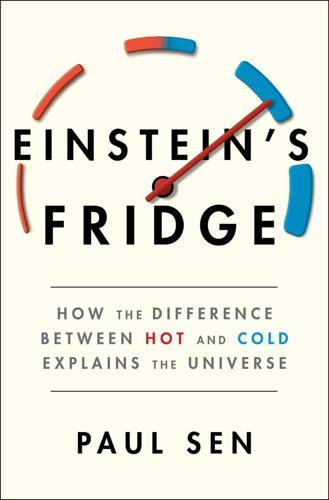
Einstein's Fridge: How the Difference Between Hot and Cold Explains the Universe
by
Paul Sen
Published 16 Mar 2021
This has wide applicability because many chemical reactions do occur under these conditions, especially in biochemistry. For an excellent and not too technical explanation see the Khan Academy video and website https://www.khanacademy.org/science/biology/energy-and-enzymes/free-energy-tutorial/a/gibbs-free-energy. There is another term, Helmholtz free energy, which deals with processes that occur in systems at constant volume and temperature. very first step in the process—photosynthesis: An excellent primer on all the steps in this process are on the Khan Academy website. sunshine and a sewer: An excellent, pithy video by physicist Sean Carroll on the YouTube channel minutephysics describes this: “What Is the Purpose of Life?

The New Prophets of Capital
by
Nicole Aschoff
Published 10 Mar 2015
Today, the centrality of social and cultural capital is obscured (sometimes deliberately), as demonstrated in the implicit and explicit message of Oprah and her ideological colleagues. In their stories, and many others like them, cultural and social capital are easy to acquire. They tell us to get an education. Too poor? Take an online course. Go to Khan Academy. They tell us to meet people, build up our network. Don’t have any connected family members? Join LinkedIn. It’s simple. Anyone can become anything. There’s no distinction between the quality and productivity of different people’s social and cultural capital. We’re all building our skills. We’re all networking.
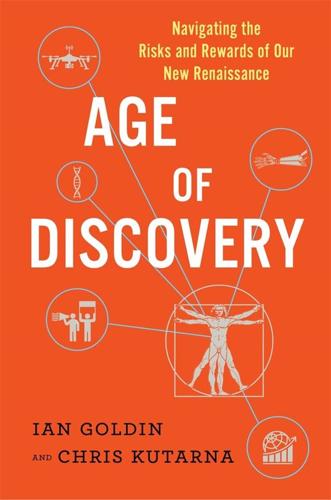
Age of Discovery: Navigating the Risks and Rewards of Our New Renaissance
by
Ian Goldin
and
Chris Kutarna
Published 23 May 2016
Globally, the share of secondary school graduates enrolled in higher education has more than doubled since 1990, from under 14 percent to over 33 percent by 2014.37 By our own estimates, the number of people alive today with a higher education degree is greater than the total number of degrees awarded prior to 1980. Every year, a further 25 to 50 million degree-holders are being added to the total. Massive Open Online Courses (MOOCs), like Khan Academy and Coursera, are helping to raise that figure even more rapidly. Although higher education enrollment rates are highest in the developed world (at 74 percent of secondary school graduates, versus 23 percent in the developing world), in terms of absolute numbers the developing world is coming on strong.38 Already at least 40 percent of the world’s science and engineering doctoral students, and 37 percent of degree-holding science researchers, are in the developing world.39 Women are rapidly advancing, too.
…
It has already made its presence felt in entertainment and other popular content. In China, Hollywood blockbusters and hit HBO television series are available online within a day of their US release, complete with Mandarin subtitles (the latter having been added by avid fans practicing their English). Khan Academy, an online education portal, has seen most of its 6,000 instructional videos subtitled into one or more of 65 languages by volunteers. TED, another online portal, has attracted more than 22,000 volunteers to translate over 80,000 “TED Talks” into more than 100 languages. Altogether in 2015, we estimate that the global pool of volunteer translators totaled some 2 to 4 million people, who in a single year gave humanity 25–50 million hours of free translation service in areas such as entertainment, education, news and disaster relief (e.g., by translating victims’ Tweets in real time for emergency responders).

New Laws of Robotics: Defending Human Expertise in the Age of AI
by
Frank Pasquale
Published 14 May 2020
First, deciding what works is a complex process, all too prone to being manipulated.77 Second, the same investors may be backing both the edtech and those evaluating it.78 That situation sets up an inherent conflict of interest, biasing the research. Similar commercial pressures may be leading to a premature plunge into online education. Based on the success of Khan Academy, enthusiasts breathlessly project that a college education can be had for a fraction of the current tuition costs; just record all the lectures, automate evaluation of students, and invite the world to attend, with grades recorded on a blockchain transcript. Get stuck on a lesson? Just keep interfacing with a keyboard, camera, and perhaps haptic sensors.
…
See education; workers Johnson, Mark, 212–213 Jones, Alex, 94 Joseph, Lawrence, 202; “Visions of Labour,” 220–223 journalism: and AI as a helpful tool, 2, 91; devastated by digital transition and in need of revitalization, 29, 30, 116–118; and the importance of genuine reporting and human values, 5, 28, 171, 192; and the vetting of news and online media content, 18, 93, 95, 113–115 Kaminski, Margot, 80 Kashmir, 154 Kelly, Sean Dorrance, 218–219 Kenya, 92 Keynes, John Maynard, 189, 194, 195, 224; Keynesian economics, 181, 183, 191, 194–195 Khan Academy, 84 “killer robots.” See weapons: robots as King, Thomas, 112 Klee, Paul, 310n103 Knight Capital, 155 Korte, Travis, 112 Krauss, Rosalind, 222, 307n75 Kurzweil, Ray, 218 labor. See unions; workers Lakoff, George, 212–213 land mines, 156–157, 289n51 law enforcement, 17–18, 102, 122–124, 131, 165, 199.
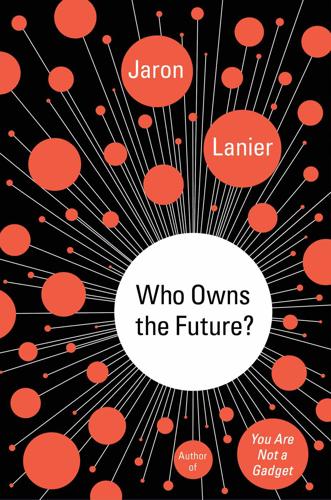
Who Owns the Future?
by
Jaron Lanier
Published 6 May 2013
Without MIT or Caltech, I imagine figures like Marvin Minsky or Richard Feynman would have been employed deep in the bunkers of Los Alamos or Bell Labs at the time, which were places less likely to be generous about having a weird kid roaming the hallways without official license. Everyone in the high-tech world appreciates the universities deeply. Yet we are happy to rush headlong into flattening the levees that sustain them, just as we did with music, journalism, and photography. Will the result be any different this time? Factoring the City on a Hill The Khan Academy might be the most celebrated effort of the moment to bring free education to anyone with online access. It is filled with videos teaching every common topic, and its lessons have already been taken hundreds of millions of times. Stanford professor and Google researcher Sebastian Thrun was inspired by Khan to share a graduate artificial-intelligence class online, and tens of thousands of people graduated from it.
…
M., 129–30, 261, 328 “Forum,” 214 Foucault, Michel, 308n 4chan, 335 4′33″ (Cage), 212 fractional reserve system, 33 Franco, Francisco, 159–60 freedom, 13–15, 32–33, 90–92, 277–78, 336 freelancing, 253–54 Free Print Shop, 228 “free rise,” 182–89, 355 free speech, 223, 225 free will, 166–68 “friction,” 179, 225, 230, 235, 354 Friendster, 180, 181 Fukuyama, Francis, 165, 189 fundamentalism, 131, 193–94 future: chaos in, 165–66, 273n, 331 economic analysis of, 1–3, 15, 22, 37, 38, 40–41, 42, 67, 122, 143, 148–52, 153, 155–56, 204, 208, 209, 236, 259, 274, 288, 298–99, 311, 362n, 363 humanistic economy for, 194, 209, 233–351 361–367 “humors” of, 124–40, 230 modern conception of, 123–40, 193–94, 255 natural basis of, 125, 127, 128–29 optimism about, 32–35, 45, 130, 138–40, 218, 230n, 295 politics of, 13–18, 22–25, 85, 122, 124–26, 128, 134–37, 199–234, 295–96, 342 technological trends in, 7–18, 21, 53–54, 60–61, 66–67, 85–86, 87, 97–98, 129–38, 157–58, 182, 188–90, 193–96, 217 utopian conception of, 13–18, 21, 30, 31, 37–38, 45–46, 96, 128, 130, 167, 205, 207, 265, 267, 270, 283, 290, 291, 308–9, 316 future-oriented money, 32–34, 35 Gadget, 186 Gallant, Jack, 111–12 games, 362, 363 Gates, Bill, 93 Gattaca, 130 Gawker, 118n Gelernter, David, 313 “general” machines, 158 General Motors, 56–57 general relativity theory, 167n Generation X, 346 genetic engineering, 130 genetics, 109–10, 130, 131, 146–47, 329, 366 genomics, 109–10, 146–47, 366 Germany, 45 Ghostery, 109 ghost suburbs, 296 Gibson, William, 137, 309 Gizmodo, 117–18 Global Business Network (GBN), 214–15 global climate change, 17, 32, 53, 132, 133, 134, 203, 266, 295, 296–97, 301–2, 331 global economy, 33n, 153–56, 173, 201, 214–15, 280 global village, 201 God, 29, 30–31, 139 Golden Goblet, 121, 121, 175, 328 golden rule, 335–36 gold standard, 34 Google, 14, 15, 19, 69, 74, 75–76, 90, 94, 106, 110, 120, 128, 153, 154, 170, 171, 174, 176, 180, 181–82, 188, 191, 192, 193, 199–200, 201, 209, 210, 217, 225, 227, 246, 249, 265, 267, 272, 278, 280, 286, 305n, 307, 309–10, 322, 325, 330, 344, 348, 352 Google Goggles, 309–10 Googleplex, 199–200 goops, 85–89, 99 Gore, Al, 80n Graeber, David, 30n granularity, 277 graph-shaped networks, 241, 242–43 Great Britain, 200 Great Depression, 69–70, 75, 135, 299 Great Recession, 31, 54, 60, 76–77, 204, 311, 336–37 Greece, 22–25, 45, 125 Grigorov, Mario, 267 guitars, 154 guns, 310–11 Gurdjieff, George, 215, 216 gurus, 211–13 hackers, 14, 82, 265, 306–7, 345–46 Hardin, Garrett, 66n Hartmann, Thom, 33n Hayek, Friedrich, 204 health care, 66–67, 95, 98–99, 100, 132–33, 153–54, 249, 253, 258, 337, 346 health insurance, 66–67, 95, 98–99, 100, 153–54 Hearts and Minds, 353n heart surgery, 11–13, 17, 18, 157–58 heat, 56 hedge funds, 69, 106, 137 Hephaestus, 22, 23 high-dimensional problems, 145 high-frequency trading, 56, 76–78, 154 highways, 79–80, 345 Hinduism, 214 Hippocrates, 124n Hiroshima bombing (1945), 127 Hollywood, 204, 206, 242 holographic radiation, 11 Homebrew Club, 228 homelessness, 151 homeopathy, 131–32 Homer, 23, 55 Honan, Mat, 82 housing market, 33, 46, 49–52, 61, 78, 95–96, 99, 193, 224, 227, 239, 245, 255, 274n, 289n, 296, 298, 300, 301 HTML, 227, 230 Huffington Post, 176, 180, 189 human agency, 8–21, 50–52, 85, 88, 91, 124–40, 144, 165–66, 175–78, 191–92, 193, 217, 253–64, 274–75, 283–85, 305–6, 328, 341–51, 358–60, 361, 362, 365–67 humanistic information economy, 194, 209, 233–351 361–367 human reproduction, 131 humors (tropes), 124–40, 157, 170, 230 hunter-gatherer societies, 131, 261–62 hyperefficient markets, 39, 42–43 hypermedia, 224–30, 245 hyper-unemployment, 7–8 hypotheses, 113, 128, 151 IBM, 191 identity, 14–15, 82, 124, 173–74, 175, 248–51, 283–90, 305, 306, 307, 315–16, 319–21 identity theft, 82, 315–16 illusions, 55, 110n, 120–21, 135, 154–56, 195, 257 immigration, 91, 97, 346 immortality, 193, 218, 253, 263–64, 325–31, 367 imports, 70 income levels, 10, 46–47, 50–54, 152, 178, 270–71, 287–88, 291–94, 338–39, 365 incrementalism, 239–40 indentured servitude, 33n, 158 India, 54, 211–13 industrialization, 49, 83, 85–89, 123, 132, 154, 343 infant mortality rates, 17, 134 infinity, 55–56 inflation, 32, 33–34 information: age of, 15–17, 42, 166, 241 ambiguity of, 41, 53–54, 155–56 asymmetry of, 54–55, 61–66, 118, 188, 203, 246–48, 285–88, 291–92, 310 behavior influenced by, 32, 121, 131, 173–74, 286–87 collection of, 61–62, 108–9 context of, 143–44, 178, 188–89, 223–24, 225, 245–46, 247, 248–51, 338, 356–57, 360 correlations in, 75–76, 114–15, 192, 274–75 for decision-making, 63–64, 184, 266, 269–75, 284n digital networks for, see digital networks duplication of, 50–52, 61, 74, 78, 88, 223–30, 239–40, 253–64, 277, 317–24, 335, 349 economic impact of, 1–3, 8–9, 15–17, 18, 19–20, 21, 35, 60–61, 92–97, 118, 185, 188, 201, 207, 209, 241–43, 245–46, 246–48, 256–58, 263, 283–87, 291–303, 331, 361–67 in education, 92–97 encrypted, 14–15, 175, 239–40, 305–8, 345 false, 119–21, 186, 275n, 287–88, 299–300 filters for, 119–20, 200, 225, 356–57 free, 7–9, 15–16, 50–52, 61, 74, 78, 88, 214, 223–30, 239–40, 246, 253–64, 277, 317–24, 335, 349 history of, 29–31 human agency in, 22–25, 69–70, 120–21, 122, 190–91 interpretation of, 29n, 114–15, 116, 120–21, 129–32, 154, 158, 178, 183, 184, 188–89 investment, 59–60, 179–85 life cycle of, 175–76 patterns in, 178, 183, 184, 188–89 privacy of, see privacy provenance of, 245–46, 247, 338 sampling of, 71–72, 191, 221, 224–26, 259 shared, 50–52, 61, 74, 78, 88, 100, 223–30, 239–40, 253–64, 277, 317–24, 335, 349 signals in, 76–78, 148, 293–94 storage of, 29, 167n, 184–85; see also cloud processors and storage; servers superior, 61–66, 114, 128, 143, 171, 246–48 technology of, 7, 32–35, 49, 66n, 71–72, 109, 110, 116, 120, 125n, 126, 135, 136, 254, 312–16, 317 transparency of, 63–66, 74–78, 118, 190–91, 306–7 two-way links in, 1–2, 227, 245, 289 value of, 1–3, 15–16, 20, 210, 235–43, 257–58, 259, 261–63, 271–75, 321–24, 358–60 see also big data; data infrastructure, 79–80, 87, 179, 201, 290, 345 initial public offerings (IPOs), 103 ink, 87, 331 Inner Directeds, 215 Instagram, 2, 53 instant prices, 272, 275, 288, 320 insurance industry, 44, 56, 60, 66–67, 95, 98–99, 100, 153–54, 203, 306 intellectual property, 44, 47, 49, 60, 61, 96, 102, 183, 204, 205–10, 223, 224–26, 236, 239–40, 246, 253–64 intelligence agencies, 56, 61, 199–200, 291, 346 intelligence tests, 39, 40 interest rates, 81 Internet: advertising on, 14, 20, 24, 42, 66, 81, 107, 109, 114, 129, 154, 169–74, 177, 182, 207, 227, 242, 266–67, 275, 286, 291, 322–24, 347–48, 354, 355 anonymity of, 172, 248–51, 283–90 culture of, 13–15, 25 development of, 69, 74, 79–80, 89, 129–30, 159, 162, 190–96, 223, 228 economic impact of, 1–2, 18, 19–20, 24, 31, 43, 60–66, 79–82, 117, 136–37, 169–74, 181, 186 employment and, 2, 7–8, 56–57, 60, 71–74, 79, 117, 123, 135, 149, 178, 201, 257–58 file sharing on, 50–52, 61, 74, 78, 88, 100, 223–30, 239–40, 253–64, 277, 317–24, 335, 349 free products and services of, 7n, 10, 60–61, 73, 81, 82, 90, 94–96, 97, 128, 154, 176, 183, 187, 201, 205–10, 234, 246–48, 253–64, 283–88, 289, 308–9, 317–24, 337–38, 348–50, 366 human contributions to, 19–21, 128, 129–30, 191–92, 253–64 identity in, 14–15, 82, 173–74, 175, 283–90, 315–16 investment in, 117–20, 181 legal issues in, 63, 79–82, 204, 206, 318–19 licensing agreements for, 79–82 as network, 2–3, 9, 11, 12, 14, 15, 16, 17, 19–21, 31, 49, 50–51, 53, 54–55, 56, 57, 75, 92, 129–30, 143–48, 228–29, 259, 286–87, 308–9 political aspect of, 13–15, 205–10 search engines for, 51, 60, 70, 81, 120, 191, 267, 289, 293; see also Google security of, 14–15, 175, 239–40, 305–8, 345 surveillance of, 1–2, 11, 14, 50–51, 64, 71–72, 99, 108–9, 114–15, 120–21, 152, 177n, 199–200, 201, 206–7, 234–35, 246, 272, 291, 305, 309–11, 315, 316, 317, 319–24 transparency of, 63–66, 176, 205–6, 278, 291, 308–9, 316, 336 websites on, 80, 170, 200, 201, 343 Internet2, 69 Internet service providers (ISPs), 171–72 Interstate Highway System, 79–80, 345 “In-valid,” 130 inventors, 117–20 investment, financial, 45, 50, 59–67, 74–80, 115, 116–20, 155, 179–85, 208, 218, 257, 258, 277–78, 298, 301, 348, 350 Invisible Hand humor, 126, 128 IP addresses, 248 iPads, 267 Iran, 199, 200 irony, 130 Islam, 184 Italy, 133 Jacquard programmable looms, 23n “jailbreaking,” 103–4 Japan, 85, 97, 98, 133 Jeopardy, 191 Jeremijenko, Natalie, 302 jingles, 267 jobs, see employment Jobs, Steve, 93, 166n, 192, 358 JOBS Act (2012), 117n journalism, 92, 94 Kapital, Das (Marx), 136 Keynesianism, 38, 151–52, 204, 209, 274, 288 Khan Academy, 94 Kickstarter, 117–20, 186–87, 343 Kindle, 352 Kinect, 89n, 265 “Kirk’s Wager,” 139 Klout, 365 Kodak, 2, 53 Kottke, Dan, 211 KPFA, 136 Kurzweil, Ray, 127, 325, 327 Kushner, Tony, 165, 189 LaBerge, Stephen, 162 labor, human, 85, 86, 87, 88, 99–100, 257–58, 292 labor unions, 44, 47–48, 49, 96, 239, 240 Laffer curve, 149–51, 150, 152 Las Vegas, Nev., 296, 298 lawyers, 98–99, 100, 136, 184, 318–19 leadership, 341–51 legacy prices, 272–75, 288 legal issues, 49, 63, 74–82, 98–99, 100, 104–5, 108, 136, 184, 204, 206, 318–19 Lehman Brothers, 188 lemonade stands, 79–82 “lemons,” 118–19 Lennon, John, 211, 213 levees, economic, 43–45, 46, 47, 48, 49–50, 52, 92, 94, 96, 98, 108, 171, 176n, 224–25, 239–43, 253–54, 263, 345 leveraged mortgages, 49–50, 61, 227, 245, 289n, 296 liberal arts, 97 liberalism, 135–36, 148, 152, 202, 204, 208, 235, 236, 251, 253, 256, 265, 293, 350 libertarianism, 14, 34, 80, 202, 208, 210, 262, 321 liberty, 13–15, 32–33, 90–92, 277–78, 336 licensing agreements, 79–82 “Lifestreams” (Gelernter), 313 Lights in the Tunnel, The (Ford), 56n Linux, 206, 253, 291, 344 litigation, 98–99, 100, 104–5, 108, 184 loans, 32–33, 42, 43, 74, 151–52, 306 local advantages, 64, 94–95, 143–44, 153–56, 173, 203, 280 Local/Global Flip, 153–56, 173, 280 locked-in software, 172–73, 182, 273–74 logical copies, 223 Long-Term Capital Management, 49, 74–75 looms, 22, 23n, 24 loopholes, tax, 77 lotteries, 338–39 lucid dreaming, 162 Luddites, 135, 136 lyres, 22, 23n, 24 machines, 19–20, 86, 92, 123, 129–30, 158, 261, 309–11, 328 see also computers “Machine Stops, The” (Forster), 129–30, 261, 328 machine translations, 19–20 machine vision, 309–11 McMillen, Keith, 117 magic, 110, 115, 151, 178, 216, 338 Malthus, Thomas, 132, 134 Malthusian humor, 125, 127, 132–33 management, 49 manufacturing sector, 49, 85–89, 99, 123, 154, 343 market economies, see economies, market marketing, 211–13, 266–67, 306, 346 “Markets for Lemons” problem, 118–19 Markoff, John, 213 marriage, 167–68, 274–75, 286 Marxism, 15, 22, 37–38, 48, 136–37, 262 as humor, 126 mash-ups, 191, 221, 224–26, 259 Maslow, Abraham, 260, 315 Massachusetts Institute of Technology (MIT), 75, 93, 94, 96–97, 157–58, 184 mass media, 7, 66, 86, 109, 120, 135, 136, 185–86, 191, 216, 267 material extinction, 125 materialism, 125n, 195 mathematics, 11, 20, 40–41, 70, 71–72, 75–78, 116, 148, 155, 161, 189n, 273n see also statistics Matrix, The, 130, 137, 155 Maxwell, James Clerk, 55 Maxwell’s Demon, 55–56 mechanicals, 49, 51n Mechanical Turk, 177–78, 185, 187, 349 Medicaid, 99 medicine, 11–13, 17, 18, 54, 66–67, 97–106, 131, 132–33, 134, 150, 157–58, 325, 346, 363, 366–67 Meetings with Remarkable Men (Gurdjieff), 215 mega-dossiers, 60 memes, 124 Memex, 221n memories, 131, 312–13, 314 meta-analysis, 112 metaphysics, 12, 127, 139, 193–95 Metcalf’s Law, 169n, 350 Mexico City, 159–62 microfilm, 221n microorganisms, 162 micropayments, 20, 226, 274–75, 286–87, 317, 337–38, 365 Microsoft, 19, 89, 265 Middle Ages, 190 middle class, 2, 3, 9, 11, 16–17, 37–38, 40, 42–45, 47, 48, 49, 50, 51, 60, 74, 79, 91, 92, 95, 98, 171, 205, 208, 210, 224–25, 239–43, 246, 253–54, 259, 262, 263, 280, 291–94, 331, 341n, 344, 345, 347, 354 milling machines, 86 mind reading, 111 Minority Report, 130, 310 Minsky, Marvin, 94, 157–58, 217, 326, 330–31 mission statements, 154–55 Mixed (Augmented) Reality, 312–13, 314, 315 mobile phones, 34n, 39, 85, 87, 162, 172, 182n, 192, 229, 269n, 273, 314, 315, 331 models, economic, 40–41, 148–52, 153, 155–56 modernity, 123–40, 193–94, 255 molds, 86 monetization, 172, 176n, 185, 186, 207, 210, 241–43, 255–56, 258, 260–61, 263, 298, 331, 338, 344–45 money, 3, 21, 29–35, 86, 108, 124, 148, 152, 154, 155, 158, 172, 185, 241–43, 278–79, 284–85, 289, 364 monocultures, 94 monopolies, 60, 65–66, 169–74, 181–82, 187–88, 190, 202, 326, 350 Moondust, 362n Moore’s Law, 9–18, 20, 153, 274–75, 288 morality, 29–34, 35, 42, 50–52, 54, 71–74, 188, 194–95, 252–64, 335–36 Morlocks, 137 morning-after pill, 104 morphing, 162 mortality, 193, 218, 253, 263–64, 325–31, 367 mortgages, 33, 46, 49–52, 61, 78, 95–96, 99, 224, 227, 239, 245, 255, 274n, 289n, 296, 300 motivation, 7–18, 85–86, 97–98, 216 motivational speakers, 216 movies, 111–12, 130, 137, 165, 192, 193, 204, 206, 256, 261–62, 277–78, 310 Mozart, Wolfgang Amadeus, 23n MRI, 111n music industry, 11, 18, 22, 23–24, 42, 47–51, 54, 61, 66, 74, 78, 86, 88, 89, 92, 94, 95–96, 97, 129, 132, 134–35, 154, 157, 159–62, 186–87, 192, 206–7, 224, 227, 239, 253, 266–67, 281, 318, 347, 353, 354, 355, 357 Myspace, 180 Nancarrow, Conlon, 159–62 Nancarrow, Yoko, 161 nanopayments, 20, 226, 274–75, 286–87, 317, 337–38, 365 nanorobots, 11, 12, 17 nanotechnology, 11, 12, 17, 87, 162 Napster, 92 narcissism, 153–56, 188, 201 narratives, 165–66, 199 National Security Agency (NSA), 199–200 natural medicine, 131 Nelson, Ted, 128, 221, 228, 245, 349–50 Nelsonian systems, 221–30, 335 Nelson’s humor, 128 Netflix, 192, 223 “net neutrality,” 172 networked cameras, 309–11, 319 networks, see digital networks neutrinos, 110n New Age, 211–17 Newmark, Craig, 177n New Mexico, 159, 203 newspapers, 109, 135, 177n, 225, 284, 285n New York, N.Y., 75, 91, 266–67 New York Times, 109 Nobel Prize, 40, 118, 143n nodes, network, 156, 227, 230, 241–43, 350 “no free lunch” principle, 55–56, 59–60 nondeterministic music, 23n nonlinear solutions, 149–50 nonprofit share sites, 59n, 94–95 nostalgia, 129–32 NRO, 199–200 nuclear power, 133 nuclear weapons, 127, 296 nursing, 97–100, 123, 296n nursing homes, 97–100, 269 Obama, Barack, 79, 100 “Obamacare,” 100n obsolescence, 89, 95 oil resources, 43, 133 online stores, 171 Ono, Yoko, 212 ontologies, 124n, 196 open-source applications, 206, 207, 272, 310–11 optical illusions, 121 optimism, 32–35, 45, 130, 138–40, 218, 230n, 295 optimization, 144–47, 148, 153, 154–55, 167, 202, 203 Oracle, 265 Orbitz, 63, 64, 65 organ donors, 190, 191 ouroboros, 154 outcomes, economic, 40–41, 144–45 outsourcing, 177–78, 185 Owens, Buck, 256 packet switching, 228–29 Palmer, Amanda, 186–87 Pandora, 192 panopticons, 308 papacy, 190 paper money, 34n parallel computers, 147–48, 149, 151 paranoia, 309 Parrish, Maxfield, 214 particle interactions, 196 party machines, 202 Pascal, Blaise, 132, 139 Pascal’s Wager, 139 passwords, 307, 309 “past-oriented money,” 29–31, 35, 284–85 patterns, information, 178, 183, 184, 188–89 Paul, Ron, 33n Pauli exclusion principle, 181, 202 PayPal, 60, 93, 326 peasants, 565 pensions, 95, 99 Perestroika (Kushner), 165 “perfect investments,” 59–67, 77–78 performances, musical, 47–48, 51, 186–87, 253 perpetual motion, 55 Persian Gulf, 86 personal computers (PCs), 158, 182n, 214, 223, 229 personal information systems, 110, 312–16, 317 Pfizer, 265 pharmaceuticals industry, 66–67, 100–106, 123, 136, 203 philanthropy, 117 photography, 53, 89n, 92, 94, 309–11, 318, 319, 321 photo-sharing services, 53 physical trades, 292 physicians, 66–67 physics, 88, 153n, 167n Picasso, Pablo, 108 Pinterest, 180–81, 183 Pirate Party, 49, 199, 206, 226, 253, 284, 318 placebos, 112 placement fees, 184 player pianos, 160–61 plutocracy, 48, 291–94, 355 police, 246, 310, 311, 319–21, 335 politics, 13–18, 21, 22–25, 47–48, 85, 122, 124–26, 128, 134–37, 149–51, 155, 167, 199–234, 295–96, 342 see also conservatism; liberalism; libertarianism Ponzi schemes, 48 Popper, Karl, 189n popular culture, 111–12, 130, 137–38, 139, 159 “populating the stack,” 273 population, 17, 34n, 86, 97–100, 123, 125, 132, 133, 269, 296n, 325–26, 346 poverty, 37–38, 42, 44, 53–54, 93–94, 137, 148, 167, 190, 194, 253, 256, 263, 290, 291–92 power, personal, 13–15, 53, 60, 62–63, 86, 114, 116, 120, 122, 158, 166, 172–73, 175, 190, 199, 204, 207, 208, 278–79, 290, 291, 302–3, 308–9, 314, 319, 326, 344, 360 Presley, Elvis, 211 Priceline, 65 pricing strategies, 1–2, 43, 60–66, 72–74, 145, 147–48, 158, 169–74, 226, 261, 272–75, 289, 317–24, 331, 337–38 printers, 90, 99, 154, 162, 212, 269, 310–11, 316, 331, 347, 348, 349 privacy, 1–2, 11, 13–15, 25, 50–51, 64, 99, 108–9, 114–15, 120–21, 152, 177n, 199–200, 201, 204, 206–7, 234–35, 246, 272, 291, 305, 309–13, 314, 315–16, 317, 319–24 privacy rights, 13–15, 25, 204, 305, 312–13, 314, 315–16, 321–22 product design and development, 85–89, 117–20, 128, 136–37, 145, 154, 236 productivity, 7, 56–57, 134–35 profit margins, 59n, 71–72, 76–78, 94–95, 116, 177n, 178, 179, 207, 258, 274–75, 321–22 progress, 9–18, 20, 21, 37, 43, 48, 57, 88, 98, 123, 124–40, 130–37, 256–57, 267, 325–31, 341–42 promotions, 62 property values, 52 proprietary hardware, 172 provenance, 245–46, 247, 338 pseudo-asceticism, 211–12 public libraries, 293 public roads, 79–80 publishers, 62n, 92, 182, 277–78, 281, 347, 352–60 punishing vs. rewarding network effects, 169–74, 182, 183 quants, 75–76 quantum field theory, 167n, 195 QuNeo, 117, 118, 119 Rabois, Keith, 185 “race to the bottom,” 178 radiant risk, 61–63, 118–19, 120, 156, 183–84 Ragnarok, 30 railroads, 43, 172 Rand, Ayn, 167, 204 randomness, 143 rationality, 144 Reagan, Ronald, 149 real estate, 33, 46, 49–52, 61, 78, 95–96, 99, 193, 224, 227, 239, 245, 255, 274n, 289n, 296, 298, 300, 301 reality, 55–56, 59–60, 124n, 127–28, 154–56, 161, 165–68, 194–95, 203–4, 216–17, 295–303, 364–65 see also Virtual Reality (VR) reason, 195–96 recessions, economic, 31, 54, 60, 76–77, 79, 151–52, 167, 204, 311, 336–37 record labels, 347 recycling, 88, 89 Reddit, 118n, 186, 254 reductionism, 184 regulation, economic, 37–38, 44, 45–46, 49–50, 54, 56, 69–70, 77–78, 266n, 274, 299–300, 311, 321–22, 350–51 relativity theory, 167n religion, 124–25, 126, 131, 139, 190, 193–95, 211–17, 293, 300n, 326 remote computers, 11–12 rents, 144 Republican Party, 79, 202 research and development, 40–45, 85–89, 117–20, 128, 136–37, 145, 154, 215, 229–30, 236 retail sector, 69, 70–74, 95–96, 169–74, 272, 349–51, 355–56 retirement, 49, 150 revenue growth plans, 173n revenues, 149, 149, 150, 151, 173n, 225, 234–35, 242, 347–48 reversible computers, 143n revolutions, 199, 291, 331 rhythm, 159–62 Rich Dad, Poor Dad (Kiyosaki), 46 risk, 54, 55, 57, 59–63, 71–72, 85, 117, 118–19, 120, 156, 170–71, 179, 183–84, 188, 242, 277–81, 284, 337, 350 externalization of, 59n, 117, 277–81 risk aversion, 188 risk pools, 277–81, 284 risk radiation, 61–63, 118–19, 120, 156, 183–84 robo call centers, 177n robotic cars, 90–92 robotics, robots, 11, 12, 17, 23, 42, 55, 85–86, 90–92, 97–100, 111, 129, 135–36, 155, 157, 162, 260, 261, 269, 296n, 342, 359–60 Roman Empire, 24–25 root nodes, 241 Rousseau, Jean-Jacques, 129 Rousseau humor, 126, 129, 130–31 routers, 171–72 royalties, 47, 240, 254, 263–64, 323, 338 Rubin, Edgar, 121 rupture, 66–67 salaries, 10, 46–47, 50–54, 152, 178, 270–71, 287–88, 291–94, 338–39, 365 sampling, 71–72, 191, 221, 224–26, 259 San Francisco, University of, 190 satellites, 110 savings, 49, 72–74 scalable solutions, 47 scams, 119–21, 186, 275n, 287–88, 299–300 scanned books, 192, 193 SceneTap, 108n Schmidt, Eric, 305n, 352 Schwartz, Peter, 214 science fiction, 18, 126–27, 136, 137–38, 139, 193, 230n, 309, 356n search engines, 51, 60, 70, 81, 120, 191, 267, 289, 293 Second Life, 270, 343 Secret, The (Byrne), 216 securitization, 76–78, 99, 289n security, 14–15, 175, 239–40, 305–8, 345 self-actualization, 211–17 self-driving vehicles, 90–92, 98, 311, 343, 367 servants, 22 servers, 12n, 15, 31, 53–57, 71–72, 95–96, 143–44, 171, 180, 183, 206, 245, 358 see also Siren Servers “Sexy Sadie,” 213 Shakur, Tupac, 329 Shelley, Mary, 327 Short History of Progress, A (Wright), 132 “shrinking markets,” 66–67 shuttles, 22, 23n, 24 signal-processing algorithms, 76–78, 148 silicon chips, 10, 86–87 Silicon Valley, 12, 13, 14, 21, 34n, 56, 59, 60, 66–67, 70, 71, 75–76, 80, 93, 96–97, 100, 102, 108n, 125n, 132, 136, 154, 157, 162, 170, 179–89, 192, 193, 200, 207, 210, 211–18, 228, 230, 233, 258, 275n, 294, 299–300, 325–31, 345, 349, 352, 354–58 singularity, 22–25, 125, 215, 217, 327–28, 366, 367 Singularity University, 193, 325, 327–28 Sirenic Age, 66n, 354 Siren Servers, 53–57, 59, 61–64, 65, 66n, 69–78, 82, 91–99, 114–19, 143–48, 154–56, 166–89, 191, 200, 201, 203, 210n, 216, 235, 246–50, 258, 259, 269, 271, 272, 280, 285, 289, 293–94, 298, 301, 302–3, 307–10, 314–23, 326, 336–51, 354, 365, 366 Siri, 95 skilled labor, 99–100 Skout, 280n Skype, 95, 129 slavery, 22, 23, 33n Sleeper, 130 small businesses, 173 smartphones, 34n, 39, 162, 172, 192, 269n, 273 Smith, Adam, 121, 126 Smolin, Lee, 148n social contract, 20, 49, 247, 284, 288, 335, 336 social engineering, 112–13, 190–91 socialism, 14, 128, 254, 257, 341n social mobility, 66, 97, 292–94 social networks, 18, 51, 56, 60, 70, 81, 89, 107–9, 113, 114, 129, 167–68, 172–73, 179, 180, 190, 199, 200–201, 202, 204, 227, 241, 242–43, 259, 267, 269n, 274–75, 280n, 286, 307–8, 317, 336, 337, 343, 349, 358, 365–66 see also Facebook social safety nets, 10, 44, 54, 202, 251, 293 Social Security, 251, 345 software, 7, 9, 11, 14, 17, 68, 86, 99, 100–101, 128, 129, 147, 154, 155, 165, 172–73, 177–78, 182, 192, 234, 236, 241–42, 258, 262, 273–74, 283, 331, 347, 357 software-mediated technology, 7, 11, 14, 86, 100–101, 165, 234, 236, 258, 347 South Korea, 133 Soviet Union, 70 “space elevator pitch,” 233, 342, 361 space travel, 233, 266 Spain, 159–60 spam, 178, 275n spending levels, 287–88 spirituality, 126, 211–17, 325–31, 364 spreadsheet programs, 230 “spy data tax,” 234–35 Square, 185 Stalin, Joseph, 125n Stanford Research Institute (SRI), 215 Stanford University, 60, 75, 90, 95, 97, 101, 102, 103, 162, 325 Starr, Ringo, 256 Star Trek, 138, 139, 230n startup companies, 39, 60, 69, 93–94, 108n, 124n, 136, 179–89, 265, 274n, 279–80, 309–10, 326, 341, 343–45, 348, 352, 355 starvation, 123 Star Wars, 137 star (winner-take-all) system, 38–43, 50, 54–55, 204, 243, 256–57, 263, 329–30 statistics, 11, 20, 71–72, 75–78, 90–91, 93, 110n, 114–15, 186, 192 “stickiness,” 170, 171 stimulus, economic, 151–52 stoplights, 90 Strangelove humor, 127 student debt, 92, 95 “Study 27,” 160 “Study 36,” 160 Sumer, 29 supergoop, 85–89 supernatural phenomena, 55, 124–25, 127, 132, 192, 194–95, 300 supply chain, 70–72, 174, 187 Supreme Court, U.S., 104–5 surgery, 11–13, 17, 18, 98, 157–58, 363 surveillance, 1–2, 11, 14, 50–51, 64, 71–72, 99, 108–9, 114–15, 120–21, 152, 177n, 199–200, 201, 206–7, 234–35, 246, 272, 291, 305, 309–11, 315, 316, 317, 319–24 Surviving Progress, 132 sustainable economies, 235–37, 285–87 Sutherland, Ivan, 221 swarms, 99, 109 synthesizers, 160 synthetic biology, 162 tablets, 85, 86, 87, 88, 113, 162, 229 Tahrir Square, 95 Tamagotchis, 98 target ads, 170 taxation, 44, 45, 49, 52, 60, 74–75, 77, 82, 149, 149, 150, 151, 202, 210, 234–35, 263, 273, 289–90 taxis, 44, 91–92, 239, 240, 266–67, 269, 273, 311 Teamsters, 91 TechCrunch, 189 tech fixes, 295–96 technical schools, 96–97 technologists (“techies”), 9–10, 15–16, 45, 47–48, 66–67, 88, 122, 124, 131–32, 134, 139–40, 157–62, 165–66, 178, 193–94, 295–98, 307, 309, 325–31, 341, 342, 356n technology: author’s experience in, 47–48, 62n, 69–72, 93–94, 114, 130, 131–32, 153, 158–62, 178, 206–7, 228, 265, 266–67, 309–10, 325, 328, 343, 352–53, 362n, 364, 365n, 366 bio-, 11–13, 17, 18, 109–10, 162, 330–31 chaos and, 165–66, 273n, 331 collusion in, 65–66, 72, 169–74, 255, 350–51 complexity of, 53–54 costs of, 8, 18, 72–74, 87n, 136–37, 170–71, 176–77, 184–85 creepiness of, 305–24 cultural impact of, 8–9, 21, 23–25, 53, 130, 135–40 development and emergence of, 7–18, 21, 53–54, 60–61, 66–67, 85–86, 87, 97–98, 129–38, 157–58, 182, 188–90, 193–96, 217 digital, 2–3, 7–8, 15–16, 18, 31, 40, 43, 50–51, 132, 208 economic impact of, 1–3, 15–18, 29–30, 37, 40, 53–54, 60–66, 71–74, 79–110, 124, 134–37, 161, 162, 169–77, 181–82, 183, 184–85, 218, 254, 277–78, 298, 335–39, 341–51, 357–58 educational, 92–97 efficiency of, 90, 118, 191 employment in, 56–57, 60, 71–74, 79, 123, 135, 178 engineering for, 113–14, 123–24, 192, 194, 217, 218, 326 essential vs. worthless, 11–12 failure of, 188–89 fear of (technophobia), 129–32, 134–38 freedom as issue in, 32–33, 90–92, 277–78, 336 government influence in, 158, 199, 205–6, 234–35, 240, 246, 248–51, 307, 317, 341, 345–46, 350–51 human agency and, 8–21, 50–52, 85, 88, 91, 124–40, 144, 165–66, 175–78, 191–92, 193, 217, 253–64, 274–75, 283–85, 305–6, 328, 341–51, 358–60, 361, 362, 365–67 ideas for, 123, 124, 158, 188–89, 225, 245–46, 286–87, 299, 358–60 industrial, 49, 83, 85–89, 123, 132, 154, 343 information, 7, 32–35, 49, 66n, 71–72, 109, 110, 116, 120, 125n, 126, 135, 136, 254, 312–16, 317 investment in, 66, 181, 183, 184, 218, 277–78, 298, 348 limitations of, 157–62, 196, 222 monopolies for, 60, 65–66, 169–74, 181–82, 187–88, 190, 202, 326, 350 morality and, 50–51, 72, 73–74, 188, 194–95, 262, 335–36 motivation and, 7–18, 85–86, 97–98, 216 nano-, 11, 12, 17, 162 new vs. old, 20–21 obsolescence of, 89, 97 political impact of, 13–18, 22–25, 85, 122, 124–26, 128, 134–37, 199–234, 295–96, 342 progress in, 9–18, 20, 21, 37, 43, 48, 57, 88, 98, 123, 124–40, 130–37, 256–57, 267, 325–31, 341–42 resources for, 55–56, 157–58 rupture as concept in, 66–67 scams in, 119–21, 186, 275n, 287–88, 299–300 singularity of, 22–25, 125, 215, 217, 327–28, 366, 367 social impact of, 9–21, 124–40, 167n, 187, 280–81, 310–11 software-mediated, 7, 11, 14, 86, 100–101, 165, 234, 236, 258, 347 startup companies in, 39, 60, 69, 93–94, 108n, 124n, 136, 179–89, 265, 274n, 279–80, 309–10, 326, 341, 343–45, 348, 352, 355 utopian, 13–18, 21, 31, 37–38, 45–46, 96, 128, 130, 167, 205, 207, 265, 267, 270, 283, 290, 291, 308–9, 316 see also specific technologies technophobia, 129–32, 134–38 television, 86, 185–86, 191, 216, 267 temperature, 56, 145 Ten Commandments, 300n Terminator, The, 137 terrorism, 133, 200 Tesla, Nikola, 327 Texas, 203 text, 162, 352–60 textile industry, 22, 23n, 24, 135 theocracy, 194–95 Theocracy humor, 124–25 thermodynamics, 88, 143n Thiel, Peter, 60, 93, 326 thought experiments, 55, 139 thought schemas, 13 3D printers, 7, 85–89, 90, 99, 154, 162, 212, 269, 310–11, 316, 331, 347, 348, 349 Thrun, Sebastian, 94 Tibet, 214 Time Machine, The (Wells), 127, 137, 261, 331 topology, network, 241–43, 246 touchscreens, 86 tourism, 79 Toyota Prius, 302 tracking services, 109, 120–21, 122 trade, 29 traffic, 90–92, 314 “tragedy of the commons,” 66n Transformers, 98 translation services, 19–20, 182, 191, 195, 261, 262, 284, 338 transparency, 63–66, 74–78, 118, 176, 190–91, 205–6, 278, 291, 306–9, 316, 336 transportation, 79–80, 87, 90–92, 123, 258 travel agents, 64 Travelocity, 65 travel sites, 63, 64, 65, 181, 279–80 tree-shaped networks, 241–42, 243, 246 tribal dramas, 126 trickle-down effect, 148–49, 204 triumphalism, 128, 157–62 tropes (humors), 124–40, 157, 170, 230 trust, 32–34, 35, 42, 51–52 Turing, Alan, 127–28, 134 Turing’s humor, 127–28, 191–94 Turing Test, 330 Twitter, 128, 173n, 180, 182, 188, 199, 200n, 201, 204, 245, 258, 259, 349, 365n 2001: A Space Odyssey, 137 two-way links, 1–2, 227, 245, 289 underemployment, 257–58 unemployment, 7–8, 22, 79, 85–106, 117, 151–52, 234, 257–58, 321–22, 331, 343 “unintentional manipulation,” 144 United States, 25, 45, 54, 79–80, 86, 138, 199–204 universities, 92–97 upper class, 45, 48 used car market, 118–19 user interface, 362–63, 364 utopianism, 13–18, 21, 30, 31, 37–38, 45–46, 96, 128, 130, 167, 205, 207, 265, 267, 270, 283, 290, 291, 308–9, 316 value, economic, 21, 33–35, 52, 61, 64–67, 73n, 108, 283–90, 299–300, 321–22, 364 value, information, 1–3, 15–16, 20, 210, 235–43, 257–58, 259, 261–63, 271–75, 321–24, 358–60 Values, Attitudes, and Lifestyles (VALS), 215 variables, 149–50 vendors, 71–74 venture capital, 66, 181, 218, 277–78, 298, 348 videos, 60, 100, 162, 185–86, 204, 223, 225, 226, 239, 240, 242, 245, 277, 287, 329, 335–36, 349, 354, 356 Vietnam War, 353n vinyl records, 89 viral videos, 185–86 Virtual Reality (VR), 12, 47–48, 127, 129, 132, 158, 162, 214, 283–85, 312–13, 314, 315, 325, 343, 356, 362n viruses, 132–33 visibility, 184, 185–86, 234, 355 visual cognition, 111–12 VitaBop, 100–106, 284n vitamins, 100–106 Voice, The, 185–86 “voodoo economics,” 149 voting, 122, 202–4, 249 Wachowski, Lana, 165 Wall Street, 49, 70, 76–77, 181, 184, 234, 317, 331, 350 Wal-Mart, 69, 70–74, 89, 174, 187, 201 Warhol, Andy, 108 War of the Worlds, The (Wells), 137 water supplies, 17, 18 Watts, Alan, 211–12 Wave, 189 wealth: aggregate or concentration of, 9, 42–43, 53, 60, 61, 74–75, 96, 97, 108, 115, 148, 157–58, 166, 175, 201, 202, 208, 234, 278–79, 298, 305, 335, 355, 360 creation of, 32, 33–34, 46–47, 50–51, 57, 62–63, 79, 92, 96, 120, 148–49, 210, 241–43, 270–75, 291–94, 338–39, 349 inequalities and redistribution of, 20, 37–45, 65–66, 92, 97, 144, 254, 256–57, 274–75, 286–87, 290–94, 298, 299–300 see also income levels weather forecasting, 110, 120, 150 weaving, 22, 23n, 24 webcams, 99, 245 websites, 80, 170, 200, 201, 343 Wells, H.

The Driver in the Driverless Car: How Our Technology Choices Will Create the Future
by
Vivek Wadhwa
and
Alex Salkever
Published 2 Apr 2017
First was the promise of One Laptop per Child; but proof that students using computers regularly for classwork and homework do better than those without has remained elusive. And in some major school districts, such as Los Angeles Unified, experiments in giving a tablet to each student have proven unqualified failures. Indeed, the jury remains out on computer-assisted education altogether. Then there was the hope of online education. We’d all be learning from the Khan Academy or other online site. All the knowledge of the world would be accessible to everyone. And, to highly motivated students who could sit through lectures and quickly grasp concepts, it proved to be so. Unfortunately, those students represented a very small percentage of the total. Online education didn’t lead to mass learning or competence.

Blockchain: Blueprint for a New Economy
by
Melanie Swan
Published 22 Jan 2014
Much in the way that Bitcoin is the decentralized (very low fee charging, no intermediary) means of exchanging currencies between countries, a decentralized contract system could be helpful for setting up learning contracts directly with students/student groups in a similar peer-to-peer manner, conceptually similar to a personalized Khan Academy curriculum program. Learners would receive Bitcoin, Learncoin, or the local token directly into their digital wallets—like 37Coins, Coinapolt, or Kipochi (used as Bitcoin or converted into local fiat currency)—from worldwide peer donors, and use this to fund their education expenses at school or separately on their own.
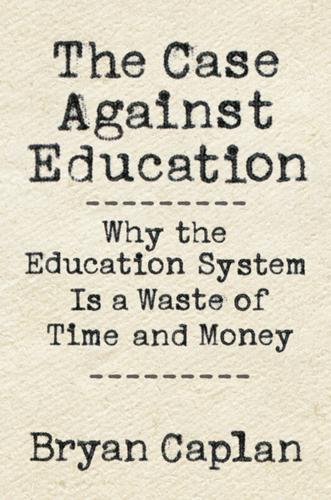
The Case Against Education: Why the Education System Is a Waste of Time and Money
by
Bryan Caplan
Published 16 Jan 2018
As long as traditional education receives hundreds of billions of taxpayer dollars every year, the status quo will stand. Online education will slowly carve out a niche, but that is all. Technophiles would have a compelling case if education’s sole function were teaching job skills. Online education has clear pedagogical advantages over traditional education. Coursera, Khan Academy, Marginal Revolution University, and their rivals hire the best teachers in the world.47 Students can learn at their own pace—pausing whenever they need to reflect, rewinding whenever they need review, fast forwarding as soon as they master the material. Anyone who’s lost can drop a level without looking like a loser.
…
L., 239 Jarjoura, Roger, 331n27 Jepsen, Lisa, 322n100 job satisfaction: for a Good Student, 134; social return to education and, 170–71 Johnson, Lyndon, 213–14 Johnson, William, 303n17 Jones, Garett, 300n89, 315n95 Kalmijn, Matthijs, 322n100 Kam, Cindy, 333n41 Kambourov, Gueorgui, 301n89 Kane, Thomas, 307n3, 309n4, 309n9, 323n116 Kasim, Rafa, 309n11 Katz, Lawrence, 328n19 Keith, Toby, 239 Khan Academy, 219 Kleiner, Morris, 305n67 Kling, Arnold, 26 knowledge: of foreign languages, 48–49; of history and civics/politics, 44–46; inert, 57; learning, as a measure of, 40; literacy and numeracy, 40–43; of science, 47–48; staggering lack of, 48–49 Kotkin, Minna, 305n78 Krampe, Ralf, 301n93 Krueger, Alan, 149–50, 303n27, 305n67, 314n78, 314n84, 320n78–80, 321n81–82 Krugman, Paul, 295n13 Kuncel, Nathan, 299n46 Labaree, David, 260 labor economists: ability bias versus, the Card Consensus and, 76–79; signaling versus, 121–23, 270 labor market: curriculum and, disconnect between, 10–13; dehiring, 25; deliberate practice as route to expertise in, 63–64; diploma dilemma and, 27; earnings premium of education in (see earnings premium of education); employment/unemployment for a Good Student, 131, 133; failing versus forgetting, implications of, 27–28; foot in the door, signaling to get your, 24–25; networking in school and, 66–67; overqualified workers (see malemployment); payment for unused education, 104–8; rewarding useless education by (see signaling model of education); school ethic versus work ethic, 64–66; signaling in (see signaling model of education); workforce participation, 176–77.
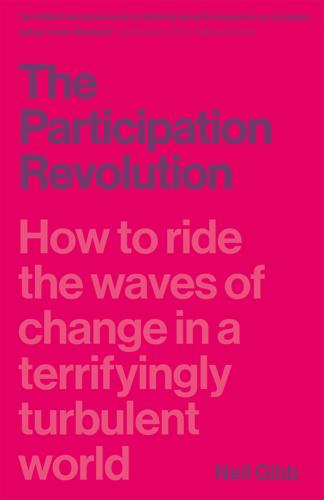
The Participation Revolution: How to Ride the Waves of Change in a Terrifyingly Turbulent World
by
Neil Gibb
Published 15 Feb 2018
Schools in other countries are beginning to use Minecraft as a way to help students develop design and collaboration skills. Parents, realising the positive effect it has on their children, are beginning to rethink their views on gaming as a good/bad use of time. Universities and business schools are seeing their model challenged by online educational offerings like the Khan Academy and massive open online courses, or MOOCs. Minecraft shows how participatory innovation can be used not just to bring education online, but to engage people in a whole different way of learning – through group participation rather than individual study; learning through doing together, rather than learning alone, then doing.

What's Yours Is Mine: Against the Sharing Economy
by
Tom Slee
Published 18 Nov 2015
The open systems that Rosenberg advocates serve as complements to closed “black box” algorithms (as law professor Frank Pasquale describes them in his recent book)10 which are the key to Google’s business. Three years on, Rosenberg was an advisor to Google management, and found himself in “a world that has outstripped even his wildest expectations.” 11 Drawing on stories from books like Wikinomics,12 on the Government of Canada’s Open Government Declaration, on the non-profit Khan Academy’s video lectures, on PatientsLikeMe in healthcare and Google’s mapping tools, as well as Google’s own success with Android smartphones and the Chrome browser, Rosenberg believes that openness needs to go even further: “We must aim beyond even an open internet. Institutions in general must continue to embrace this ethos.”

Effective Programming: More Than Writing Code
by
Jeff Atwood
Published 3 Jul 2012
Your goal shouldn’t be merely to get a job, or hire someone for a job, but to have fun and create a love connection. Don’t rush into anything unless it feels right on both sides. (As an aside, if you’re looking for ways to attract programmers, you can’t go wrong with this excellent advice from Samuel Mullen.) Ben Hammersley@benhammersley “Two job candidates. One with only the top badges from Khan Academy and StackOverflow. The other with a 1:1 from top school. Choose.” 2:59 AM – 30 Jan 12 Getting the Interview Phone Screen Right It is very expensive to get the phone screen wrong — a giant waste of time for everyone involved. The best phone screen article you’ll ever find is Steve Yegge’s Five Essential Phone-Screen Questions, another gift to us from Steve’s stint at Amazon.
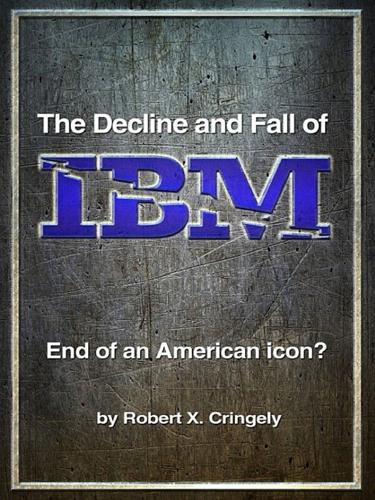
The Decline and Fall of IBM: End of an American Icon?
by
Robert X. Cringely
Published 1 Jun 2014
When asked, HR and finance partners would never clarify whether employees could register for a conference (5 days X 8 hours = 40) under this program or not. They would only say Internet podcasts qualify. In practice, it further degraded management’s credibility as it simply turned into a cheap accounting trick – record in a database when you decide to follow a free khan academy class. Think40 is one illustration of how PR works in this company. Deadbeef / August 27, 2013 / 2:23 am Training program is a ‘joke’ Internal blogs and Jams. Ha ha. No one in their right mind says what they really think so you may as well just shoot any career you might have in the foot as do that.

Empire of AI: Dreams and Nightmares in Sam Altman's OpenAI
by
Karen Hao
Published 19 May 2025
He told the team that he would only start paying attention once GPT-4 scored a 5 on an AP Biology test—AP Bio because he felt it tested critical scientific thinking rather than a memorization of facts. “I thought, ‘Okay, that’ll give me three years to work on HIV and malaria,’ ” Gates later recounted in his podcast. Brockman took Gates’s remark as a challenge. He immediately reached out to Sal Khan, the CEO of online education platform Khan Academy, and asked him to tap into the company’s large repository of AP Bio questions as training data. Khan was skeptical but agreed to do so in exchange for his platform getting access to the model. Brockman also amassed a team of employees to build a special user interface for the new Gates Demo. By late August, much to Gates’s surprise, Altman and Brockman were pinging him again.
…
(TV series), 99 Jernite, Yacine, 276–77, 309 Jobs, Laurene Powell, 2 Jobs, Steve, 2, 34, 35, 37 Johansson, Scarlett, 382, 390–92, 393 John Burroughs School, 30–31, 329 Johnson, Josh, 381 Johnson, Simon, 88–89 Jones, Peter-Lucas, 410–13 Jones, Shane, 238–39 Jonze, Spike, 246 Jordan, Michael, 34 K Kacholia, Megan, 166–68, 170 kaitiakitanga, 412 Kalluri, Ria, 102, 106, 418–19 Kaplan, Jared, 156–57 Karnofsky, Holden, 56, 57–58, 230, 321–22 Karpathy, Andrej, 64 Kay, Alan, 321 Kelton, Fraser, 150, 236–37, 241, 247 Kennedy, John F., 54 Kennedy, John Neely, 302 Kenya, 137, 179, 190–92 data annotation, 15, 18, 190–92, 206–13, 415–17 RLHF projects, 218–23 ketamine, 35, 42 Khan Academy, 246 Khan, Sal, 246 Khlaaf, Heidy, 179–80 Khosla Ventures, 70 Klein, Ezra, 115 Klein, Naomi, 272 Knight, Will, 126 Koko (gorilla), 254 Kokotajlo, Daniel, 388–90, 394, 403 Kolln, Ryan, 137, 189 Krisiloff, Matt, 41 Krizhevsky, Alex, 47, 100–101, 117–18, 259 Kwon, Jason, 7, 8, 346, 365, 373, 392–96 L labor exploitation, 16, 17, 19–20, 89, 133, 190, 194, 295, 414–16, 418.

The Only Game in Town: Central Banks, Instability, and Avoiding the Next Collapse
by
Mohamed A. El-Erian
Published 26 Jan 2016
More concerning, it is a world that makes cyberterrorism and nonstate terrorism more meaningful threats.3 Governments that look to the technological revolution to materially improve the welfare of both current and future generations while also countering its dark side need to understand the dual nature of these transformative innovations. Think of the following tug-of-war on some of the youth at risk: On the one hand, access to the Khan Academy, an impressive online learning platform, brings academic knowledge, self-improvement, and skill acquisition to them in a highly engaging and cost-effective manner; on the other hand is the relatively easy circulation of impressionable ISIS videos that seek to recruit them for a life of violence and uprooting.

Whiplash: How to Survive Our Faster Future
by
Joi Ito
and
Jeff Howe
Published 6 Dec 2016
Rather than hiring large teams of engineers, designers, and programmers, start-ups and individuals can tap into a global community of freelancers and volunteers who can provide the skills they lack.21 Another important component in the move toward emergence over authority has been the proliferation of free and low-cost online and community education. This not only includes formal classes, such as edX, but also educational websites like Khan Academy, hands-on classes at maker- and hackerspaces, and informal peer tutoring conducted online or in person. The more opportunities people have to learn new skills, the more innovative they become.22 All of these advances are creating a de facto system in which people worldwide are empowered to learn, design, develop, and participate in acts of creative disobedience.
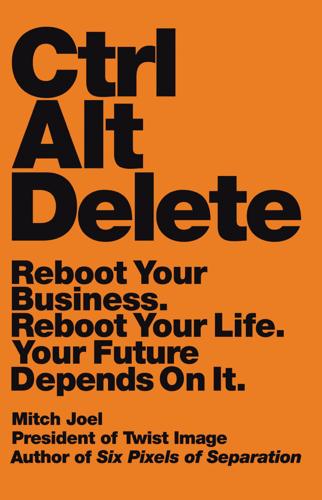
Ctrl Alt Delete: Reboot Your Business. Reboot Your Life. Your Future Depends on It.
by
Mitch Joel
Published 20 May 2013
Sometimes, the most obvious answer to a problem is staring at you right in the face. Salman Khan used to tutor his cousin, Nadia, via long distance by posting videos on YouTube. This very simplistic way of working has turned into an educational movement that is shaking the very foundation of our educational system. The Khan Academy has become a lighthouse for new and different ways to think about education and how kids can learn. iTunes U allows universities to post their lectures online for anyone to download and sample. In short, the technology is becoming simpler, but the solutions to our standard business problems have also become easier because of our connectivity (it’s up to you to piece them together).

The Snowden Files: The Inside Story of the World's Most Wanted Man
by
Luke Harding
Published 7 Feb 2014
Another email arrived. It persisted: ‘Have you done it?’ Frustrated, Greenwald’s unknown correspondent now tried a different strategy. He made a private YouTube tutorial showing step by step how to download the correct encryption software – a ‘how to’ guide for dummies. This video had little in common with the Khan Academy: its author remained anonymous, an off-screen presence. It merely contained a set of instructions. ‘I saw a computer screen and graphics. I didn’t see any hands. He was very cautious,’ Greenwald says. The freelance journalist watched. But – stretched by other demands – didn’t quite get round to following its strictures.
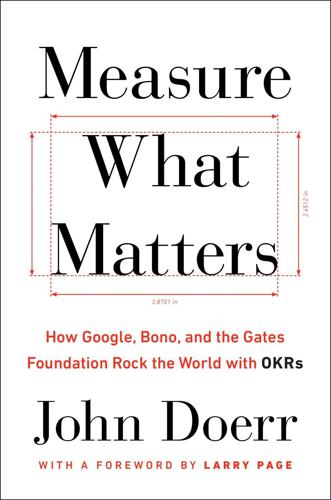
Measure What Matters: How Google, Bono, and the Gates Foundation Rock the World With OKRs
by
John Doerr
Published 23 Apr 2018
From Zume: Julia Collins and Alex Garden. From Coursera: Lila Ibrahim, Daphne Koller, Andrew Ng, Rick Levin, and Jeff Maggioncalda. From Lumeris: Andrew Cole, Art Glasgow, and Mike Long. From Schneider Electric: Hervé Coureil and Sharon Abraham. From Walmart: John Brothers, Becky Schmitt, and Angela Christman. From Khan Academy: Orly Friedman and Sal Khan. I am honored to acknowledge the experts who lent their insights, input, and many contributions to the OKR movement and this book: Alex Barnett; Tracy Beltrane; Ethan Bernstein; Josh Bersin; Ben Brookes; John Brothers; Aaron Butkus; Ivy Choy; John Chu; Roger Corn; Angus Davis; Chris Deptula; Patrick Foley; Uwe Higgen; Arnold Hur; General Tom Kolditz; Cory Kreeck; Jonathan Lesser; Aaron Levie; Kevin Louie; Denise Lyle; Chris Mason; Amelia Merrill; Deep Nishar; Bill Pence; Stephanie Pimmel; Philip Potloff; Aurelie Richard; Dr.

Pivot: The Only Move That Matters Is Your Next One
by
Jenny Blake
Published 14 Jul 2016
Books like Josh Waitzkin’s The Art of Learning, Tim Ferriss’s The 4-Hour Chef, and Josh Kaufman’s The First 20 Hours provide instruction and shortcuts on how to learn just about anything in a fraction of the time you might assume is necessary. There are also dozens of low-cost online learning platforms—including Skillshare, Khan Academy, Codecademy, General Assembly, Udemy, Coursera, Udacity, and more—that you can join to acquire new skills. And thanks to Massive Open Online Courses (MOOCs), we now have access to courses and professors from all over the world via universities that open their doors to thousands of online students each semester.
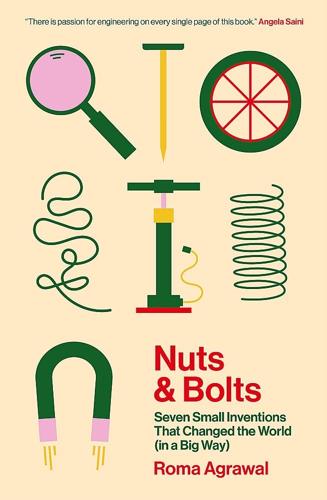
Nuts and Bolts: Seven Small Inventions That Changed the World (In a Big Way)
by
Roma Agrawal
Published 2 Mar 2023
Kansas Historical Society. ‘Almon Strowger’. Kansapedia. https://www.kshs.org/kansapedia/almon-strowger/16911. https://www.biography.com/inventor/james-west. Kantain, Tom. ‘Differences Between a Telephone & Telegraph’. Techwalla. https://www.techwalla.com/articles/differences-between-a-telephone-telegraph. Khan Academy. ‘Experiment: What’s the Shape of a Magnetic Field?’. https://www.khanacademy.org/science/physics/discoveries/electromagnet/a/experiment-electromagnetism. Kramer, John B. ‘The Early History of Magnetism’. Transactions of the Newcomen Society, vol. 14, no. 1, 1 January 1933. https://doi.org/10.1179/tns.1933.013.
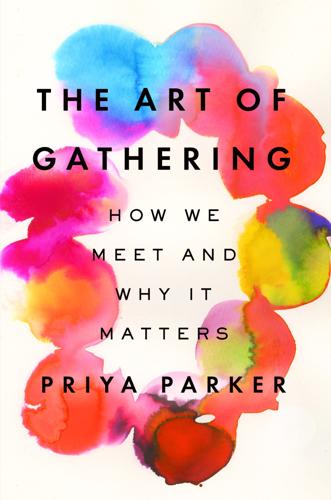
The Art of Gathering: How We Meet and Why It Matters
by
Priya Parker
Published 14 May 2018
“As traditional religion struggles” Angie Thurston and Casper ter Kuile, How We Gather (Cambridge: Crestwood Foundation, 2015), accessed May 15, 2015, https://caspertk.files.wordpress.com/2015/04/how-we-gather.pdf. Chapter 1: Decide Why You’re Really Gathering In college, we stare Digital learning organizations such as the Khan Academy have popularized the “flipped classroom” model where students learn material from online videos and teachers become facilitators of learning rather than imparters of knowledge. not wanting any funeral Alan D. Wolfelt, Creating Meaningful Funeral Ceremonies (Fort Collins, CO: Companion Press), 1.

Beginners: The Joy and Transformative Power of Lifelong Learning
by
Tom Vanderbilt
Published 5 Jan 2021
THERE’S NEVER BEEN A BETTER TIME TO BE A BEGINNER We live in what might justifiably be called a golden age of learning. Each of us has, at our fingertips, access to a vast amount of recorded information. The rise of the internet has also spawned a massive increase in the amount of learning opportunities. Online institutions like Khan Academy offer the promise to “learn almost anything—for free.” Coursera’s smartphone app gives a way to “fit learning into your commute, coffee break, or other quiet moments in your day.” “Learn from anywhere,” promises Skillshare. “Tomorrow is for the taking.” Bolstered by new understanding of the methods for effective learning, programs like Duolingo, meanwhile, promise to compress a semester’s worth of language classes into thirty-four hours of online instruction.
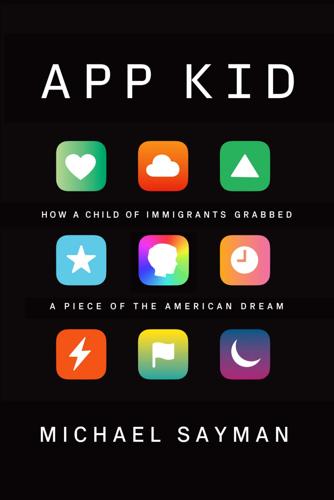
App Kid: How a Child of Immigrants Grabbed a Piece of the American Dream
by
Michael Sayman
Published 20 Sep 2021
So here I was, settled into my bright red couch, making little designs for my new social media app, while other Area 120 founders buzzed around like quiet bees. At a nearby conference table, Laura Holmes, the founder of a smartphone app called Grasshopper, was meeting with her team. Holmes had created the app to teach curious beginners to program through games and quizzes. Like the learning platforms Khan Academy and (today’s) Mimo, this was exactly the kind of thing we needed in the world. It made me downright happy to hear Holmes talking about “expanding the digital ecosystem” and “helping bring underrepresented groups into technology.” She was obviously a good manager, pausing to encourage her team members with constructive feedback while walking them through a long list of assignments.

Breath: The New Science of a Lost Art
by
James Nestor
Published 25 May 2020
“In every culture and in every medical tradition”: This quotation has been attributed to Szent-Györgyi’s lecture “Electronic Biology and Cancer,” which he presented at the Marine Biological Laboratory, Woods Hole, Massachusetts, July, 1972. filled with copies: “Master DeRose,” enacademic.com, https://enacademic.com/dic.nsf/enwiki/11708766. now Afghanistan, Pakistan: The Indus Valley descriptions and details are taken from the following: “Indus River Valley Civilizations,” Khan Academy, https://www.khanacademy.org/humanities/world-history/world-history-beginnings/ancient-india/a/the-indus-river-valley-civilizations; Saifullah Khan, “Sanitation and Wastewater Technologies in Harappa/Indus Valley Civilization (ca. 2600–1900 bce),” https://canvas.brown.edu/files/61957992/download?
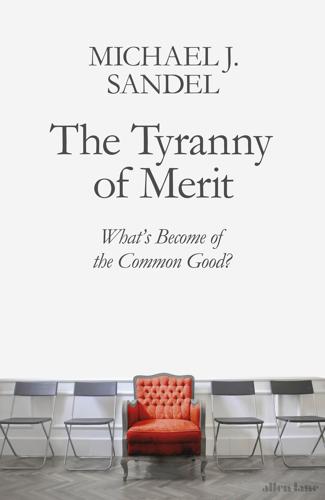
The Tyranny of Merit: What’s Become of the Common Good?
by
Michael J. Sandel
Published 9 Sep 2020
As meritocratic competition for college admission has intensified in recent decades, tutoring and test prep has become a billion-dollar industry. 27 For years, the College Board, which administers the SAT, insisted that its test measured aptitude and that scores were unaffected by tutoring. It recently dropped that pretense and entered a partnership with the Khan Academy to provide free online SAT practice to all test takers. Although this was a worthy undertaking, it did little to level the test-prep playing field, as College Board officials hoped and claimed it would. Unsurprisingly perhaps, students from families with higher incomes and education levels made greater use of the online help than did students from disadvantaged backgrounds, resulting in an even greater scoring gap between the privileged and the rest. 28 For Conant, a test of aptitude or IQ held promise as a democratic measure of academic ability, untainted by educational disadvantage and the vagaries of high school grades.
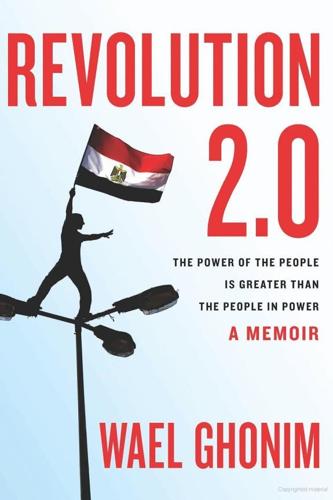
Revolution 2:0: A Memoir and Call to Action
by
Wael Ghonim
Published 15 Jan 2012
I spent quite a bit of time preparing the presentation, which urged Arab developers and media professionals to realize that they had a role as agents of change in the region. In my presentation, I cited examples of entrepreneurs who utilized technology to create change. The young American of Bangladeshi origins Salman Khan was one. He was able to set up a simple YouTube channel called Khan Academy to facilitate basic education for 90 million people around the world. He uploaded videos of lessons in basic subjects that could be accessed by users anywhere, anytime. I also spoke of the Kiva initiative (Kiva.org), which mobilized $200 million in loans for 500,000 impoverished people in many countries.
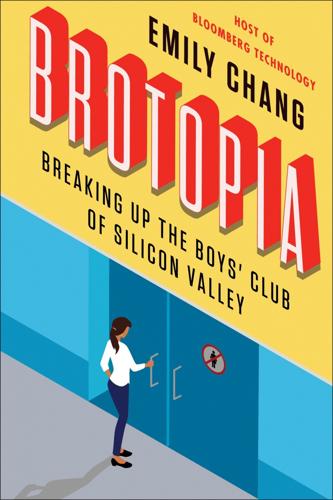
Brotopia: Breaking Up the Boys' Club of Silicon Valley
by
Emily Chang
Published 6 Feb 2018
“When I typed something up and it would magically appear on the screen, that realization that you can create something that works right away is amazing,” Wong said. Zaynah Shaikh, a nineteen-year-old computer science major who had recently graduated from the GWC program, added, “Seeing the program work, I think it’s pretty empowering. With code you can do so many things.” Ria Thakkar, seventeen, taught herself how to code using Khan Academy online tutorials, then helped start the GWC club at her school. “[Learning to code] was a really hard process for me, and I thought, ‘How do I make it easier for other girls to do?’” Ashley Chu, fifteen, joined a GWC club during her sophomore year in high school and attended her first hackathon a few months later.

Stakeholder Capitalism: A Global Economy That Works for Progress, People and Planet
by
Klaus Schwab
Published 7 Jan 2021
It is also now widely understood and accepted that Columbus was preceded by Viking Leif Erikson, who is credited with being the first to make the journey from Europe to America. 9 http://www.bbc.co.uk/history/british/victorians/victorian_technology_01.shtml. 10 https://ourworldindata.org/international-trade. 11 https://edatos.consorciomadrono.es/file.xhtml?persistentId=doi:10.21950/BBZVBN/U54JIA&version=1.0. 12 John Maynard Keynes, The Economic Consequences of the Peace, 1919, quote can be found at https://www.theglobalist.com/global-man-circa-1913/. 13 “The Industrial Revolution,” Khan Academy, https://www.khanacademy.org/humanities/big-history-project/acceleration/bhp-acceleration/a/the-industrial-revolution. 14 “India in the Rise of Britain and Europe: A Contribution to the Convergence and Great Divergence Debates,” Bhattacharya, Prabir Heriot-Watt University, May 2019, https://mpra.ub.uni-muenchen.de/97457/1/MPRA_paper_97457.pdf. 15 “Top Wealth Shares in the UK, 1895–2013, Figure 4.6.1,” World Inequality Lab, https://wir2018.wid.world/part-4.html. 16 https://www.wto.org/english/res_e/booksp_e/anrep_e/world_trade_report11_e.pdf. 17 https://edatos.consorciomadrono.es/file.xhtml?
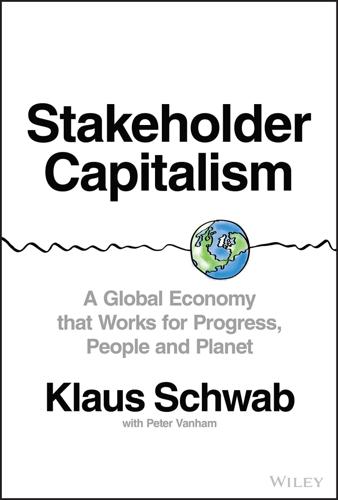
Stakeholder Capitalism: A Global Economy That Works for Progress, People and Planet
by
Klaus Schwab
and
Peter Vanham
Published 27 Jan 2021
It is also now widely understood and accepted that Columbus was preceded by Viking Leif Erikson, who is credited with being the first to make the journey from Europe to America. 9 http://www.bbc.co.uk/history/british/victorians/victorian_technology_01.shtml. 10 https://ourworldindata.org/international-trade. 11 https://edatos.consorciomadrono.es/file.xhtml?persistentId=doi:10.21950/BBZVBN/U54JIA&version=1.0. 12 John Maynard Keynes, The Economic Consequences of the Peace, 1919, quote can be found at https://www.theglobalist.com/global-man-circa-1913/. 13 “The Industrial Revolution,” Khan Academy, https://www.khanacademy.org/humanities/big-history-project/acceleration/bhp-acceleration/a/the-industrial-revolution. 14 “India in the Rise of Britain and Europe: A Contribution to the Convergence and Great Divergence Debates,” Bhattacharya, Prabir Heriot-Watt University, May 2019, https://mpra.ub.uni-muenchen.de/97457/1/MPRA_paper_97457.pdf. 15 “Top Wealth Shares in the UK, 1895–2013, Figure 4.6.1,” World Inequality Lab, https://wir2018.wid.world/part-4.html. 16 https://www.wto.org/english/res_e/booksp_e/anrep_e/world_trade_report11_e.pdf. 17 https://edatos.consorciomadrono.es/file.xhtml?

Platform Revolution: How Networked Markets Are Transforming the Economy--And How to Make Them Work for You
by
Sangeet Paul Choudary
,
Marshall W. van Alstyne
and
Geoffrey G. Parker
Published 27 Mar 2016
.: having grown by twenty-five times over the past fifty years, higher education spending has skyrocketed even faster than health care spending. The overall picture is of an industry under tremendous pressure to change so as to deliver better value for the dollars being invested. The drive to build education platforms is well under way, as businesses like Skillshare, Udemy, Coursera, edX, Khan Academy, and others suggest. Eager to avoid being rendered irrelevant or obsolete by upstart platform companies, a number of the world’s greatest universities are moving to position themselves as leaders in this educational revolution. Institutions including Harvard, Princeton, Stanford, the University of Pennsylvania, and many others are offering online versions of some of their most popular classes in the form of “massive open online courses” (MOOCs)—many in partnership with companies like Coursera.
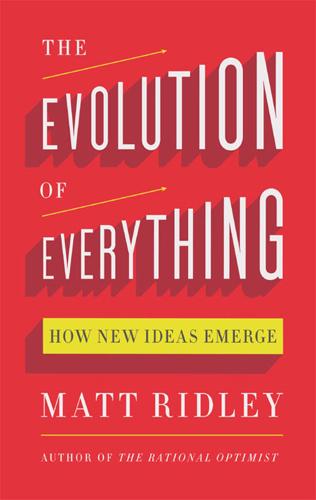
The Evolution of Everything: How New Ideas Emerge
by
Matt Ridley
The Bridge International Academies group is now running two hundred low-cost, for-profit schools in Kenya, using a syllabus scripted for the teachers and delivered by tablet computer – the computer also acting as a monitoring device to check that teachers are teaching. The idea here is that pupils should not be limited by the quality of teacher available in their district, but should get access to best practice from wherever in the world it can be supplied, via a local teacher. It’s similar to the way the Khan Academy now offers more than 4,000 short videos of high-quality private tuition that anybody can use, on almost any topic. Or to the proliferation of ‘massive open online courses’ (MOOCs), by which top lecturers at elite universities can now be watched, and their courses taken, by thousands of eager students, not just those lucky enough to attend Stanford or MIT.
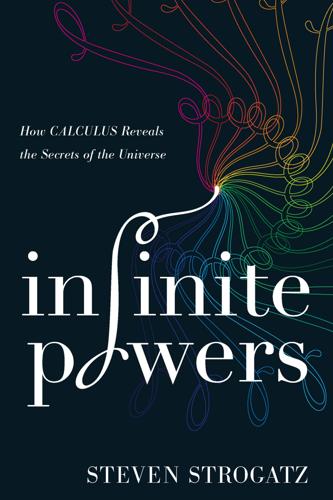
Infinite Powers: How Calculus Reveals the Secrets of the Universe
by
Steven Strogatz
Published 31 Mar 2019
The movie is on YouTube at https://www.youtube.com/watch?v=gLQG3sORAJQ (original soundtrack) and https://www.youtube.com/watch?v=9IYRC7g2ICg (modified soundtrack). 52 subdivision process: DeRose et al., “Subdivision Surfaces.” Explore subdivision surfaces for computer animation interactively at Khan Academy in collaboration with Pixar at https://www.khanacademy.org/partner-content/pixar/modeling-character. Students and their teachers might also enjoy trying the other lessons offered in “Pixar in a Box,” a “behind-the-scenes look at how Pixar artists do their jobs,” at https://www.khanacademy.org/partner-content/pixar.
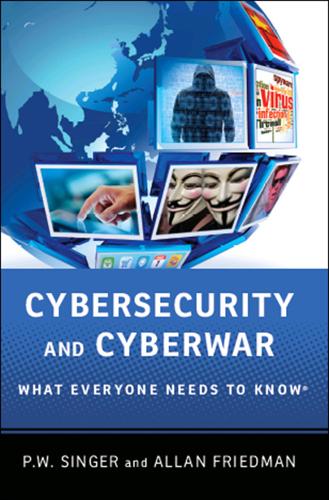
Cybersecurity: What Everyone Needs to Know
by
P. W. Singer
and
Allan Friedman
Published 3 Jan 2014
All of the 9/11 attackers, for example, had Hotmail accounts, and they were thought to have coordinated through notes left in the guestbook section of a website run by the brother-in-law of one of Osama bin Laden’s lieutenants. Where cyberspace has had perhaps the greatest impact is in the sharing of knowledge in new and innovative ways. Some organizations take advantage of this for the positive, like the Khan Academy, which has allowed children around the world to learn math and science via online tutorials. But terrorists have also spread their peculiar type of knowledge, or what security experts call “TTPs” (short for tactics, techniques, and procedures), in ways not possible before. The recipes for explosives are readily available on the Internet, as are terrorist-provided designs for IEDs for use across conflict zones from Iraq to Afghanistan.

Smart Cities: Big Data, Civic Hackers, and the Quest for a New Utopia
by
Anthony M. Townsend
Published 29 Sep 2013
One tech blog described the service as “LinkedIn for villages.”20 Another Bangalore nonprofit, Mapunity, emulates Google’s sophisticated mapping services using people’s mobile devices to sense traffic speed through phone movements and taxi radios. It then returns real-time traffic alerts via SMS.21 South Africa’s Dr. Math provides a tutoring service via SMS. Its American equivalent, the Khan Academy, requires an expensive laptop and high-speed Internet connection to access its recorded video lectures and chat rooms.22 In Kenya mobiles are the backbone of a new branchless banking system that is bringing financial services to millions for the first time. M-Pesa, named after the Swahili word for money, launched in 2007 and is now used by over 15 million people.

Lifespan: Why We Age—and Why We Don't Have To
by
David A. Sinclair
and
Matthew D. Laplante
Published 9 Sep 2019
This eye-opening book takes you to front lines of incredible breakthroughs. Enjoy this must-read masterpiece!” —Peter H. Diamandis, MD, New York Times bestselling author of Abundance and Bold “[D]escribes real science that will question the foundation of everything we assume about our life and society.” —Salman Khan, founder of Khan Academy “David is a pioneer poised to change how we think about and understand aging.” —Stephanie Lederman, CEO of the American Federation for Aging Research (AFAR), New York “The most important message and priority of our time. For years to come, humanity will reflect on this book with awe and respect.
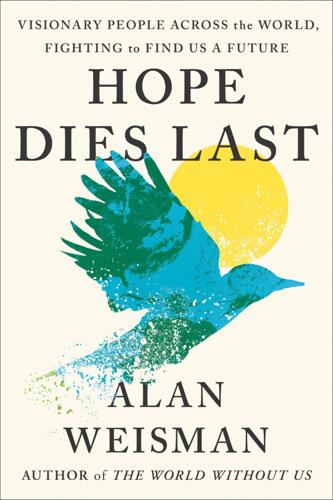
Hope Dies Last: Visionary People Across the World, Fighting to Find Us a Future
by
Alan Weisman
Published 21 Apr 2025
Periodic ground observations—beach erosion, biodiversity, mangrove and pandanus mapping—would be done by residents. Gathered data would upload via a Starlink WiFi cloud 600 yards in diameter, which included the church and the K–8 school. The village’s internet allotment was 50 gigabytes a month, but a separate local server contained a complete copy of Wikipedia and nearly all of the online video tutor Khan Academy, which students could access as long as they liked without draining connectivity. Gregg’s latest Pacific ALLIES included Dan Kenney’s wife, Veronica, a former Boeing engineer turned STEM teacher; two male future teachers from the nonprofit Educators of America; and two female Coast Guard Academy cadets.

WTF?: What's the Future and Why It's Up to Us
by
Tim O'Reilly
Published 9 Oct 2017
YouTube star and VidCon impresario Hank Green wrote, “I started paying my bills with YouTube money around the time I hit a million views a month.” Millions of teens use “Hank and John EXPLAIN!” videos to learn about current events, and they get a deeper dive in a five-minute video than they would in hours of mass-produced “news.” Millions more learn math, science, music, and philosophy from other YouTube channels like Khan Academy, or One-Minute Physics, or Hank’s own Crash Course. When my young niece learned that I knew Larry Page and Mark Zuckerberg and Bill Gates, she said, “Meh!” But when she heard I knew Hank and John Green, she was really impressed. Keep in mind that “YouTube money,” as Hank names it, is only one of many new forms of creative money that are available via online platforms.

Future Crimes: Everything Is Connected, Everyone Is Vulnerable and What We Can Do About It
by
Marc Goodman
Published 24 Feb 2015
Over the past hundred years, rapid advances in medical science mean that the average human life span has more than doubled and child mortality has plummeted by a factor of ten. Average per capita income adjusted for inflation around the world has tripled. Access to a high-quality education, so elusive to many for so long, is free today via Web sites such as the Khan Academy. And the mobile phone is singularly credited with leading to billions upon billions of dollars in direct economic development in nations around the globe. The interconnectivity the Internet provides through its fundamental architecture means that disparate peoples from around the world can be brought together as never before.

The Stack: On Software and Sovereignty
by
Benjamin H. Bratton
Published 19 Feb 2016
It is clearly not the annulment of dissensus, because in the absence of real politicization of fundamental conflict and the proliferation of incompatible and often unredeemable cosmographies, the only positions of dissent end up being those of the irredentist, the humanist, and the fundamentalist. That is an unsustainable trinity. 41. Behold the Schengen Cloud, New Arizona, Transcalifornia, Hong Kong West, the Alibaba-Tesla Printing and Charging Station franchise network, NTT-DoKoMo Planet Tokyo retirement towers and robo-spa, Google Continent Cloud, Tata-IIT-Khan Academy primary schools, the Confederate States of Walmart, RadTransFem GMOrganic Foods and Soil Stewardship (based in Fresno), the Apple-Pixar-Genentech Alliance, and so on. 42. Consider once more Estonia's program to extend “e-citizenship” to those who do not physically reside inside its land borders.

Enlightenment Now: The Case for Reason, Science, Humanism, and Progress
by
Steven Pinker
Published 13 Feb 2018
A country-dweller today can choose from among hundreds of television channels and half a billion Web sites, embracing every newspaper and magazine in the world (including their archives going back more than a century), every great work of literature that is out of copyright, an encyclopedia more than seventy times the size of Britannica with about the same level of accuracy, and every classic work of art and music.33 He could fact-check rumors on Snopes, teach himself math and science at Khan Academy, build his word power with the American Heritage Dictionary, enlighten himself with the Stanford Encyclopedia of Philosophy, and watch lectures by the world’s great scholars, writers, and critics, many long dead. Today an impoverished Hillel would not have to pass out from cold while eavesdropping on lessons through the skylight of a schoolhouse.